Literary MagNet: John Sibley Williams
In his third poetry collection, As One Fire Consumes Another, forthcoming from Orison Books in April, John Sibley Williams confronts the violent side of American history and its effect on our notions of self, fatherhood, and citizenship. “The poems speak of death and cultural roles, privilege and otherness, the little boxes we place one another in, and our often violent attempts to escape them,” Williams says. The poems, which veer from elegiac to declarative to prayerlike, drill down into the beliefs and fears that underpin this violence. “My children are learning all wars / begin with belief,” Williams writes in one poem. “We are less afraid of the dark / inside than of all the light,” he writes in another. Williams published poems from his book in more than forty journals, including the five below.
Williams appreciates literary magazines that create community, including print biannual december. “The editors support and promote their authors with vigor and a genuine affection that proves there are real, loving human beings at the helm,” he says. Editor Gianna Jacobson, who revived the journal in 2013 after a thirty-two year hiatus, agrees. “We’re not a place where writers just send their work and we say yes or no and once the transaction is done, we’re done with each other,” she says. The editors provide feedback on at least half of their submissions and work to stay connected with their contributors; Williams has published work in december several times and even collaborated with staff to organize a reading in Portland, Oregon. Edited in Saint Louis, the journal features poetry, fiction, and nonfiction and is known for publishing great writers such as Raymond Carver early in their career. Submissions in all genres are open via Submittable or postal mail until May.
Speaking of Raymond Carver, Carve, which is named for the author, is a print quarterly that seeks to publish poetry, fiction, and nonfiction that can “challenge, heal, educate, disturb, and transform.” Williams published poems in the Spring 2017 and Winter 2018 issues of the magazine, which he admires for its bold mission. “Each poem and story in Carve simmers with hard-earned authenticity,” he says. “The editors don’t shy away from difficult subject matter or fresh perspectives, as long as every piece helps nourish a communal sense of empathy.” Editor Anna Zumbahlen adds, “We like to say we look for literary works with moments of catharsis and change.” Carve also hosts online writing classes and will publish its first anthology of stories and interviews later this spring. Writers may submit work in all genres year-round via Submittable and postal mail.
Williams published his poems “Three Ways to Feign Suicide” and “The Invention of Childhood” in Redivider, a journal he was drawn to because it seeks out underrepresented voices and, he says, supports “originality and experimentation as necessary to a fresh exploration of literature and our challenging, changing world.” Edited by graduate students at Emerson College in Boston, Redivider recently stopped print publication and relaunched as a biannual online journal. The magazine has published the work of many emerging and established poets and prose writers, including Ondrej Pazdírek, Safia Elhillo, and Steve Almond. Submissions are open year-round in all genres via Submittable.
“I found myself questioning not just my country, culture, and history, but nearly everything that defines me,” says Williams about writing As One Fire Consumes Another. “I struggled to faithfully explore the extent of my personal privilege as a white, cis, able-bodied male whose labors and strains are so trifling compared to others.” Poets Wendy Chen and Anna Mebel were quick to notice this self-interrogation in Williams’s poems, as well as his “precision of language and thought” and “sharp form and imagery,” and published two of his poems in their online poetry quarterly, Figure 1. Williams, in turn, was drawn to the journal’s “energetic, vibrant, and daring” approach. The editors launched the journal to “publish and give visibility to new and underrepresented poets and poems.” They add: “Poetry is an art form that is terribly conservative, but we’ve tricked ourselves into thinking that it’s politically radical. It’s an art form that’s heavily supported by institutions.” Submissions are open year-round via e-mail.
Founded by editor in chief Brianna Van Dyke in Fort Collins, Colorado, Ruminate is dedicated to helping its “community slow down, read deeply, and live more awake to ourselves and this world.” For Williams, who published his poems “Grace Notes” and “Dear Jonah” in the Fall and Winter 2017 issues, respectively, that mission is deeply felt. “The poems in Ruminate nourish me personally and creatively,” he says. “They are brimming with spirit and unvarnished beauty.” Poetry editor Kristin George Bagdanov praises the “delicately constrained form” and the “sonic logic” of his work. “We really like what Marie Howe says about poetry—that a poem is an ‘intimate utterance’ that ‘holds silence,’” she says. The print quarterly is open for submissions in poetry, fiction, and nonfiction year-round.
Dana Isokawa is the associate editor of Poets & Writers Magazine.
Literary MagNet: Erica Trabold
With her debut essay collection, Five Plots, Erica Trabold wanted to render in words the beauty of Nebraska, her home state. “I became quietly passionate about making my home feel just as beautiful to readers who had never been there,” she says. “I wanted to put readers on the ground and make them look closely at flowers and snowdrifts.” The collection, which was published in November by Seneca Review Books, brings Nebraska alive through lyrical and image-driven vignettes. The essays combine description, historical research, meditation, and personal anecdote to explore ideas of family, memory, and place. “Home, for me, had always been a complication, wrapped in happiness and hurt,” she writes. Trabold, who now lives in Portland, Oregon, published each of the book’s five essays in the journals featured below.
The publication of Five Plots begins and ends with the Seneca Review. The title essay of Trabold’s book was published in the journal in 2013; five years later, her full-length collection was chosen as the inaugural winner of Seneca Review Books’s Deborah Tall Lyric Essay Book Prize. Edited at Hobart and William Smith Colleges in Geneva, New York, the biannual Seneca Review publishes works of poetry and nonfiction. “Seneca Review is the pinnacle of experimentation and form, the original home of what we’ve popularly come to understand as the lyric essay,” Trabold says. In the fall of 1997, Deborah Tall and John D’Agata, then the review’s editor and associate editor, respectively, began publishing what they called the lyric essay; the journal has since pioneered the form, having published lyric essays by Jenny Boully, Eula Biss, and Anne Carson, among many others. Submissions for the Seneca Review will open on February 15 via postal mail and Submittable; submissions for the second biennial Deborah Tall Lyric Essay Book Prize will open in the summer.
Trabold submitted to the Collagist because the online journal had “garnered a wonderful, years-long reputation as a place for experimental work” and because of its apt name. “Collage is a mode of making that my work often draws from,” she says. The piece Trabold published in the journal, “Canyoneering,” patches together the story of her father’s adoption with descriptions of canyons and caves. Published every two months, the Collagist publishes poetry, fiction, and nonfiction; submissions are open via Submittable until January 31 and will reopen on March 1.
When Trabold was looking to publish her essay “Borrow Pits,” which combines disparate narratives about a manmade lake in Nebraska, she knew it would need a home in a journal that was open to imagistic and experimental style. “It’s like a series of poems and thirty pages long,” she says about the piece. She eventually placed it in the annual print journal Passages North, which has a section devoted to hybrid work edited by Matthew Gavin Frank. Published at Northern Michigan University in Marquette, the journal celebrates its fortieth anniversary this year and is open for submissions in fiction until February 15 and in poetry, flash prose, nonfiction, and hybrid work until April 15.
As Trabold’s essays often meditate on change, it seems fitting that her piece “A List of Concerns,” about the author’s adolescence and shifting understanding of the Nebraska prairie, won the 2017 Payton James Freeman Essay Prize, which called for the theme “Change.” As part of the prize, cosponsored by Drake University, Trabold was published in the Rumpus, an online publication known for its daily output of poetry, fiction, nonfiction, criticism, comics, and interviews. In 2017, current editor in chief Marisa Siegel purchased the Rumpus with the goal of “giving a platform to those who might not otherwise find one and to publish work that challenges us to think outside binaries and beyond borders.” Siegel also hopes to adopt a flat-rate payment model for feature writers and book reviewers and to make the site more mobile-friendly. Submissions in fiction are open until January 31; submissions in essays will open March 1.
Trabold’s essay “Tracks” uses a single winter scene in the woods to explore the topics of motherhood and hunting. Since the essay is deeply rooted in the Midwestern landscape, Trabold wanted to publish the piece in a regional journal. “The landscape of my home is often underappreciated,” says Trabold, noting that people often stereotype the Midwest as flyover country. “I wondered if an editor from the Midwest would see the beauty I was trying to achieve for what it is.” She found the right home at the print quarterly South Dakota Review, which published her piece alongside poems by Twyla Hansen, the Nebraska State Poet at the time. “Everything about the situation felt right,” Trabold says. The journal, which is edited at the University of South Dakota in Vermillion, publishes poetry, fiction, nonfiction, mixed-genre, and translations and is open for submissions via Submittable until May 31.
Dana Isokawa is the associate editor of Poets & Writers Magazine.
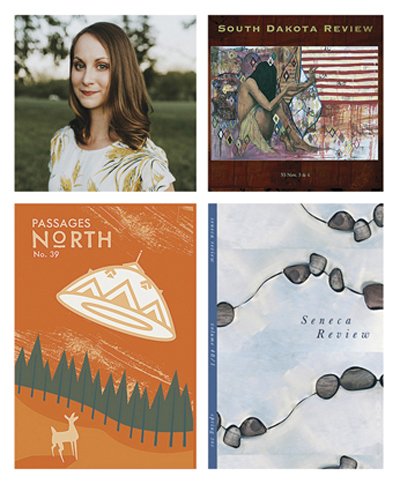
Clockwise from upper left: Erica Trabold, whose work has appeared in the South Dakota Review, Passages North, and Seneca Review. (Credit: Kimberly Dovi)
Literary MagNet: Laura Da’
In the second poetry collection by Laura Da’, Instruments of the True Measure, out this month from the University of Arizona Press, the history of the Shawnee comes into focus. Da’, who is Eastern Shawnee, portrays life on the American frontier during the early nineteenth century through concise and concentrated images and speaks candidly about the violence European settlers inflicted on Indigenous people in America. “Any treaty is an artifact of unimaginable suffering,” she writes. With precise, visceral language (“salt-lick deer / split-hung / over the saddle’s pommel”) Da’ gestures at how violence and history can live in the land and body for generations. She has published poems in the journals below, as well as in Poetry Northwest, Eleven Eleven, and Blackbird, among others.
“I generally try to submit work to journals with an eye to building community as a writer,” says Da’, who lives in the Pacific Northwest. She found such a community at the Burnside Review, a print annual edited in Portland, Oregon. “I see it as a clear artifact of the Northwest writing community: elegantly lyrical, connected to a strong and singular sense of place, and engaged in seeking multiple narratives.” Her description also applies to the poem Da’ published in the journal: “Eating the Turtle” contrasts the story of “favored men” growing fat on “buttered meat, / stone-fruit sweet,” with a group of men with “attenuated bodies” catching and eating a turtle from the Delaware River. Burnside Review, which formerly published poetry and fiction, now focuses on poetry; recent contributors include Yu-Han Chao, Lisa Lewis, José Vadi, and James Haug. Submissions will open in January.
Da’ was drawn to the online journal Toe Good as a “fresh and innovative source for Indigenous writing.” In 2014 Da’ published her poem “First Ranges” in the journal; the piece weaves together images of migrating herds, boats on a river, and surveying tools—a major theme of Instruments of the True Measure is the “colonial impulse to survey, measure, and possess territory.” Jerry Bruno, a poet and Toe Good’s cofounder and “supreme chancellor,” says the editors were eager to publish Da’ and help her gain even more recognition in the field. Bruno says the journal seeks to publish “other stream” writers—young writers seeking a publication credential or who have published work with only small, unrecognizable presses. The journal publishes work continually online and has recently featured work by Ashley Parker Owens and James Croal Jackson. Submissions of poetry, fiction, art, reviews, and interviews will open on January 1.
Da’ calls the print biannual Yellow Medicine Review the “honored elder of literary journals…a singular and necessary institution.” Writer Judy Wilson established the journal in 2007 as a space dedicated to writing and art by Indigenous people. “Flowing through southwest Minnesota is the Yellow Medicine River, where the Dakota came together to dig the yellow root of a plant used for medicinal purposes,” she says. “Such is the spirit of Yellow Medicine Review in providing a platform for the Indigenous perspective, in part to make possible the healing of an old but open wound—the persistent stereotyping of Indigenous peoples—in part to empower voices too often left unheard, to promote cultural awareness, and to bear witness to what still lives in the memory of Indigenous people.” For each issue of Yellow Medicine Review, Wilson selects a guest editor, who looks for both established and emerging writers of poetry, fiction, nonfiction, playwriting, and scholarly essays or reviews. The Spring 2019 issue will be edited by poets Millissa Kingbird and Angie C. Trudell Vasquez, who will post a call for submissions in mid-November.
Da’ writes poetry rooted in place, an element that got the attention of W. Todd Kaneko, who published two poems by Da’ in the online journal Waxwing, which he coedits with Justin Bigos and Erin Stalcup. “Something I really dig about the poems by Laura Da’ is the generosity with which the poems give the reader a glimpse of the world her speaker lives in,” Kaneko says. “There is some beautiful imagery that is quietly strange and softly violent. Da’ has this way of transporting us into this new place….” Waxwing, which publishes poetry, fiction, nonfiction, and translation, is committed to broadcasting the multicultural and multinational work of America and “hearing these voices together, in all their harmony and dissonance.” Da’ notes that the triannual journal has an “uncanny crystal-ball clairvoyance when it comes to introducing new writing that I will fall hard for and seek out with avidity for years to come.” Waxwing is currently open for submissions of all genres, including cover art.
Dana Isokawa is the associate editor of Poets & Writers Magazine.
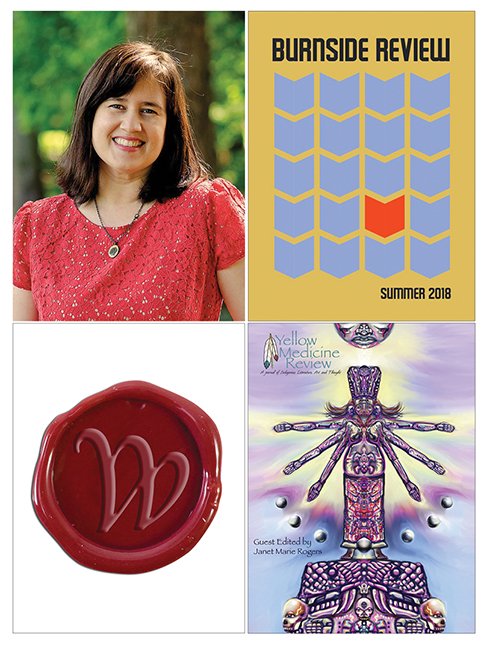
Clockwise from upper left: Laura Da’, whose work has appeared in Burnside Review, Yellow Medicine Review, and Waxwing. (Credit: Kathie Statler)
Literary MagNet: Nana Kwame Adjei-Brenyah
In every story of Nana Kwame Adjei-Brenyah’s debut collection, Friday Black, characters confront the bleaker realities of American life—racism, consumerism, commodification of the body—and reckon with the consequences of these issues on our humanity. The stories in the collection, which will be published in October by Mariner Books, have a dystopian bent and are told with dark humor and a clear-eyed understanding of human failings. “People say ‘sell your soul’ like it’s easy,” says the narrator in one story. “But your soul is yours and it’s not for sale. Even if you try, it’ll still be there, waiting for you to remember it.” Adjei-Brenyah has published work in Printers Row, Gravel, and the five journals below.
Several of Adjei-Brenyah’s stories take place in the mall—the book’s title is in part a riff on the shopping phenomenon known as Black Friday—and one such story, “In Retail,” was published in the online journal Compose: A Journal of Simply Good Writing. Managing editor Suzannah Windsor says the editors were struck immediately by Adjei-Brenyah’s “strong voice and great eye for unusual details.” In turn Adjei-Brenyah was drawn to the editors’ sincerity and transparency about the process. “I appreciate that and still do,” he says. “Journals that aren’t afraid to show some of their insides to remind you the people on that side of the editorial process are humans too.” In keeping with that transparency, the editors recently announced that the journal is on a brief hiatus due to personal and professional responsibilities such as publishing a book and having a child. They plan to reopen submissions in poetry, fiction, nonfiction, and art soon and will move from publishing two issues a year to publishing single pieces on a continual basis.
In 2013 Adjei-Brenyah published his first print piece in Broken Pencil, a Canadian magazine that publishes fiction, interviews, comics, art criticism, and zine reviews. Adjei-Brenyah published “Cardigan Blues” with the quarterly magazine after winning its annual Indie Writers’ Deathmatch, a tournament in which readers vote for a winning story, and writers can post on “particularly aggressive message boards,” says Adjei-Brenyah, to drum up support. Editor Jonathan Valelly describes the tournament as “chaotic and occasionally messy, which is what we think radical and groundbreaking fiction should be.” Broken Pencil recently started printing its issues in full color and is working to reach more cities across Canada to “empower local zine communities and nourish DIY arts.” General fiction submissions are open until September 15; submissions for this year’s Deathmatch open September 22.
“I was drawn to their simple design. Straight to the content,” says Adjei-Brenyah about the online journal Foliate Oak. “There’s something beautiful about presenting stories without much adornment.” Edited by undergraduate students at the University of Arkansas in Monticello, the journal is published monthly during the academic year and features poetry, fiction, nonfiction, and art. Adjei-Brenyah, who published a flash-fiction piece in Foliate Oak in 2014, notes that the publication takes flash fiction seriously. The journal is open for submissions via Submittable year-round, and the editors are particularly interested in flash fiction, non-rhyming poems, and “quirky writing that makes sense.”
“I love the diversity of the content Guernica publishes,” Adjei-Brenyah says about the online magazine dedicated to the intersection of art and politics. “I also love the way it seems to lean into the political. I believe art is inherently political, or at least it is a great privilege to be able to think of your art outside of any political landscape. I feel as though Guernica feels that way as well.” Established in 2004, Guernica publishes essays, art, poetry, and fiction by writers and artists from all over the world. Adjei-Brenyah’s “The Era,” published in April, depicts a dystopian future in which people’s personalities are genetically optimized, and those whose aren’t are derided and shunted to the edges of the city. Submissions are open in fiction and nonfiction; poetry submissions will open on September 15.
The sharp social insight of Adjei-Brenyah’s work calls to mind the work of ZZ Packer, so it’s fitting that Packer chose his story “The Neon Guillotine” as the winner of the second annual fiction prize administered by the online journal Breakwater Review. Edited by the students at the University of Massachusetts in Boston’s MFA program, the journal publishes three issues of poetry, fiction, and nonfiction each year. The latest issue features stories by Terrance Wedin and Joey Hedger and poems from Holly Day, Lowell Jaeger, and Katie Brunero, among others. Submissions for the annual fiction award—which includes publication and a $1,000 prize—are open until December 15 with a $10 entry fee; free general submissions open September 1 via Submittable.
Dana Isokawa is the associate editor of Poets & Writers Magazine.
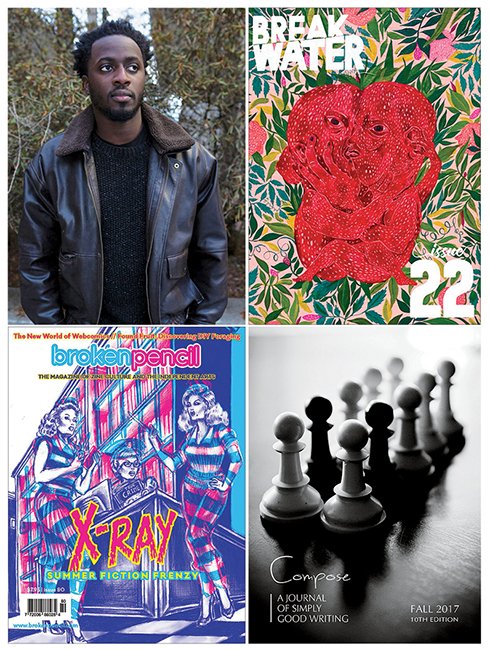
Clockwise from upper left: Nana Kwame Adjei-Brenyah, whose work has appeared in Breakwater Review, Compose, and Broken Pencil. (Credit: Limitless Imprint Entertainment)
Literary MagNet: Chelsea Hodson
“I’m interested in essays because the definition of them seems to be changing all the time,” says Chelsea Hodson, whose debut essay collection, Tonight I’m Someone Else, comes out this month from Henry Holt. Hodson’s own essays, which tend toward the lyric and fragmentary, braid personal recollections of youth and lost love with meditations and aphoristic asides to create dreamlike explorations of memory and the need for human connection. Through the lens of her experiences—such as assisting the NASA Mars mission in Tucson, Arizona, or observing the performance artist Marina Abramovic—Hodson probes our desire to understand one another. “What’s the point of longing?” she writes. “To continue.” Hodson, who also writes poetry, has published her work in the journals listed below, among others.
“I think progress in writing can be extremely hard to quantify, and submitting to literary journals can be one way to push against that,” says Hodson. “Having something published feels purposeful, and having editorial feedback helped me keep working.” Hodson published her very first piece, “Everything Goes Up”—a poem, not an essay—in EOAGH (eoagh.com) in 2009. “I liked how the poem seemed to be kind of whimsically self-knowing, tonally strange, and labile yet talking about real things rather than being ‘surreal,’” says Trace Peterson, the founding editor of EOAGH. “It had a quality of asking slightly facetious questions in a deadpan way but without any implication of snark.” Published annually online, EOAGH, which also runs a small press, seeks to “foreground the writing of experimental women, trans, feminist, transfeminist, POC, anti-racist, and LGBT/queer authors.” Although the journal is mostly focused on poetry, Peterson says the editors are open to “writing that is strange and bizarre in a variety of ways.” Submissions for the next issue will open soon via e-mail.
Hodson wrote her essay “Second Row”—about a singer for a local band in Phoenix, where she grew up, and the difference between longing and love—for the “Kay Boyle & Love” issue of the Scofield (thescofield.com), a digital biannual run by writer Tyler Malone. “I like that the Scofield lives online,” says Hodson. “The design of every issue is always beautiful, and it makes it so easily accessible to everyone.” Each issue of the Scofield revolves around an underappreciated writer and a theme present in that writer’s work, such as “Renata Adler & Drift” and “Kobo Abe & Home.” The Scofield publishes poetry, fiction, nonfiction, philosophy, art, reviews, and miscellany by both living and dead artists. The journal accepts queries or pitches via e-mail year-round.
At coeditor Zoe Dzunko’s invitation, Hodson wrote and published an essay in the online edition of the Lifted Brow (theliftedbrow.com) in which she mused on Miranda July’s now-defunct Somebody app, through which people sent digital messages that were then delivered by random strangers. Living up to its name, the Lifted Brow is neither fully highbrow nor lowbrow and publishes a blend of poetry, fiction, nonfiction, comics, art, sex advice, and interviews. Edited in Melbourne, Australia, the print quarterly—which also runs a small press, Brow Books—publishes writers from Australia and elsewhere; recent contributors include poets Chen Chen and Craig Santos Perez and fiction writers Andrés Barba and Hannah Giorgis. Submissions in all genres will open later this summer via Submittable.
Hodson notes that five years ago many literary journals would publish only narrative-driven memoir or lyric essays. The online journal Sundog Lit (sundoglit.com) has perhaps always been omnivorous in its nonfiction tastes and in 2014 published Hodson’s essay “Your Voice, Saving Me,” which leapt from considerations of chemical warfare to the nature of truth to remembrances of an adolescent friendship. Established in 2012, the biannual publishes poetry, fiction, nonfiction, and art. “We are cool with traditional personal essay and memoir,” note the nonfiction editors. “We LOVE us some experimental, research-driven stuff. Segmented. Lyric. Essays written in a bowl of alphabet soup. Surprise us.” Submissions in all genres will reopen in the fall via Submittable.
“I worked on my book for about six years,” says Hodson, “so every time I published something, it was a little reminder that I was still working and still engaged with the literary community.” Hodson found that community through the online journal Vol. 1 Brooklyn (vol1brooklyn.com). Not only did Jason Diamond, its founding editor, publish her essay about reading Seneca, but he also introduced her to Kevin Sampsell, the editor of Future Tense Books, which published Hodson’s chapbook Pity the Animal in 2014. Vol. 1 Brooklyn connects many writers and artists in Brooklyn, New York, and beyond, with its regular readings and steady stream of content, including a story every Sunday, an essay every other Wednesday, daily roundups of literary news, and book reviews and interviews. Submissions are open year-round via Submittable.
Dana Isokawa is the associate editor of Poets & Writers Magazine.
Literary MagNet: Marcus Jackson
In Pardon My Heart, Marcus Jackson’s second poetry collection, the speaker finds many kinds of love—love that is joyful, but also love that is complicated by economic hardship, race, and time. Jackson started many of the poems in blank verse or as Shakespearean sonnets but eventually branched out to other forms. “I began and finished most of the poems with a hope to maintain a lyric urgency and a narrative invitingness,” he says, “so that love, pain, and the forces of the world might rotate through the combination of story and sound.” Jackson published poems from the book, which was released in April by TriQuarterly Books/Northwestern University Press, in the five journals below, as well as in the New Yorker and the American Poetry Review, among others.
“I’ve always enjoyed the exuberance the journal has for poems that reach directly out to readers with a duality of clarity and necessity,” says Jackson about Glass: A Journal of Poetry (glass-poetry.com/journal.html), which published his poems in 2011 and 2018. The monthly online journal, which is named for Toledo, Ohio—known as the Glass City—where Jackson grew up and the journal is based, publishes poetry that “enacts the artistic and creative purity of glass.” Editor in chief Anthony Frame notes that Jackson’s poetry, which he describes as in the vein of Philip Levine and Sharon Olds, exemplifies much of the journal’s aesthetic. “Marcus’s work isn’t trying to follow any trends,” says Frame. “He accomplishes a beauty through carefully constructed language that looks and sounds like conversational speech.” Submissions to the journal—including a new series of poetry portfolios by emerging writers—will open in June via e-mail.
Jackson says he was drawn to both Glass and the print quarterly Southern Humanities Review (southernhumanitiesreview.com) for being great spaces for writers of color and other underrepresented communities. Established in 1967 at Auburn University in Alabama, Southern Humanities Review publishes poetry, fiction, and nonfiction. The journal’s recent issues include pieces such as “Hat Trick,” a series of micro-essays on the political history of the hat by Michael Martone, and “The Last Supper,” a poem by Marci Calabretta Cancio-Bello about a last meal shared by a father and child. General submissions for the journal will open in September; submissions for the annual Auburn Witness Poetry Prize, given for a poem of witness, are currently open with a $15 entry fee until June 1 via Submittable. The winner will receive $1,000 and publication; Camille T. Dungy will judge.
“I’ve always loved Tin House for its adventurousness, its diversity of contributors, and its stunning physicality when actually held in the hands,” says Jackson. Launched in 1999 as “the singular love child of an eclectic literary journal and a beautiful glossy magazine,” according to the website, print quarterly Tin House (tinhouse.com) has maintained this sense of adventure and irreverence through a commitment to discovering new writers and issues with themes on topics such as candy and the science fair. Tin House publishes poetry, fiction, and nonfiction as well as reviews of overlooked books in its Lost and Found section and food writing in its Readable Feast section. Submissions will open via Submittable in September.
Like Tin House, Muzzle Magazine (muzzlemagazine.com) exudes a playful attitude. “With healthy doses of both reverence and mischievousness toward literary minds that have come before us,” write the editors on the website, “we are obsessed with asking what beauty can and will be.” Published twice a year online, the poetry journal was started by poet Stevie Edwards in 2010 and, as Jackson says, “excels at encompassing bold, needed poems when it comes to subject matter and cultural/political inquiry.” As the editors write in their call for submissions, “Institutionalized hate, discrimination, exploitation, rape, violence, tangible and intangible theft, and other abuses of power are older than this country. We are seeking new answers to old questions and old answers to new questions.” Recent contributors have touched on everything from transgender media representation to the work of Erica Jong. Submissions for the journal, which also publishes interviews and book reviews, will open on August 1 via Submittable.
Jackson published three of his poems—one about delivering pizzas, another about being patched up after a fistfight, and another about observing a couple arguing—in the Rockhurst Review (rockhurstreview.org). The print annual, which is edited at Rockhurst University in Kansas City, Missouri, publishes poetry, fiction, and nonfiction. Editor Elizabeth Barnett reports that the staff is in the process of making issues of the review, which recently celebrated its thirtieth anniversary, available digitally. “Barnett and the students who also edit and produce the publication have done marvelous work of including poetry from across the country and from across the spectrum of on-the-page aesthetics,” says Jackson. Recent contributors include poets Donika Kelly and Kathryn Nuernberger and prose writer LaTanya McQueen. Submissions will open on September 1 via e-mail.
Dana Isokawa is the associate editor of Poets & Writers Magazine.
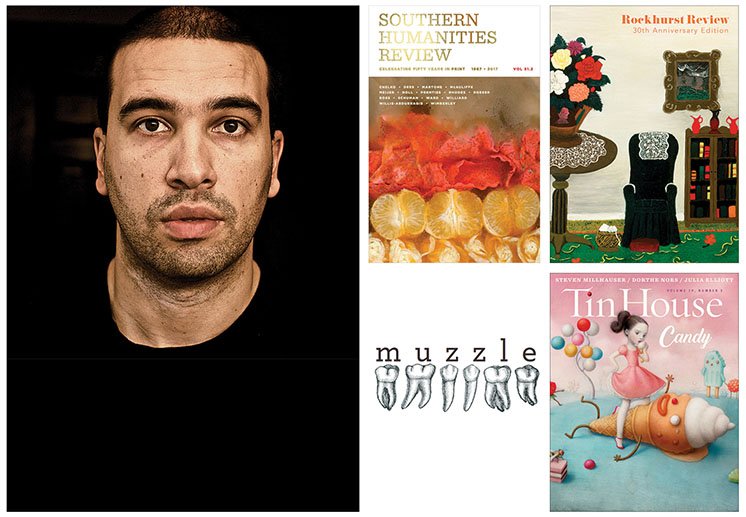
Literary MagNet: Dionisia Morales
In her debut essay collection, Homing Instincts, Dionisia Morales takes on ideas of place and home. Framed by the day-to-day of Morales’s life—rock climbing, travel, pregnancy, moving from New York City to Oregon—the essays weave together research and meditations on the history of a place and how it can influence an individual’s sense of belonging and family. Morales published essays from the book, out in April from Oregon State University Press, in a number of journals, including the five listed below. Like Morales’s work, many of the publications are rooted in place and, as Morales writes in her book, “the tendencies of place—the expectations, values, and behaviors of where we live that evolve over time, and, with each generation, penetrate the soil that we walk, work, and crave.”
Dionisia Morales often writes about the landscape and values of the West Coast, making her work a good fit for Camas (camasmagazine.org), a print biannual that she says “wrestles with a wily concept—the nature of the West.” Edited by graduate students in the environmental studies program at the University of Montana in Missoula, the journal publishes poetry, fiction, nonfiction, and art. “The editorial staff interprets the idea of the West broadly, not limiting the work it publishes to landscapes and wildlife, but also leaning into the intangible personality traits of a region,” says Morales. The magazine, which has published many environmentally minded writers, including Ellen Meloy, Rick Bass, and Robert Michael Pyle, is open for submissions in all genres until March 30 via Submittable for the Summer 2018 issue, whose theme is Rivers.
![]()
Focused on a smaller, but no less complex, region of the American West, Oregon Humanities (oregonhumanities.org) publishes essays and articles by writers living in Oregon. Published online and in print three times a year, the magazine has “an inward- and outward-looking quality,” says Morales. “The result is a channeling of ideas that are relevant to national and international audiences but described through the voices of people who share a sense of place.” The Fall/Winter 2017 issue, which carries the theme of Harm, included a feature by Joe Whittle on how Columbia River tribes protected ecosystems, an essay by Jason Arias about being an EMT, and an essay by Alice Hardesty about visiting the World War II Japanese American internment camp her father helped design. Submissions by Oregonians will be open via e-mail later this month.
![]()
Named after the literary device or gimmick that triggers a plot, the MacGuffin (schoolcraft.edu/macguffin) is based at Schoolcraft College in Livonia, Michigan, and publishes poetry, fiction, nonfiction, and art. The journal originally published Morales’s essay “You Are Here,” about visiting Istria, a peninsula in the Adriatic Sea where Croatia, Italy, and Slovenia meet, which opens Morales’s collection and sets in motion one of the book’s primary concerns: the feeling of passing through and engaging with the historical and social layers of a place. Established in 1984, the MacGuffin is published in print three times a year. Submissions in all genres are open year-round via e-mail and post.
![]()
Morales credits journal editors for helping her improve pieces, including her essay “Home at the Heart,” which she revised twice with Stephanie G’Schwind, editor of the print triannual Colorado Review (coloradoreview.colostate.edu) before it was published. “Instead of rejecting the piece based on one faulty element, G’Schwind was invested in helping me rethink the section to bring the last sentences more squarely in line with the essay’s tension around language and communication,” says Morales. Established in 1956 and published at Colorado State University in Fort Collins, the journal publishes poetry, fiction, and nonfiction; recent issues have included poetry by Hala Alyan and Tyrone Williams, fiction by Kristen Roupenian—the author of the viral New Yorker story “Cat Person”—and nonfiction by Jennifer Itell and Clint McCown. Poetry and fiction submissions are open via Submittable or post until April 30; nonfiction submissions are open year-round.
![]()
Though two of the essays in her collection feature “quietly unconventional elements—seeing pregnancy through the lens of rock climbing, thinking that houses have personalities—that didn’t resonate with editors of other publications,” Morales eventually found a home for both pieces at Hunger Mountain (hungermtn.org), an annual print publication with an “eclecticism that invites writers and readers to assume a level of adventure,” she says. Located at Vermont College of Fine Arts, the journal publishes poetry, prose, visual art, young adult and children’s writing, and other literary miscellany. It also publishes an online companion, Ephemeral Artery, which includes selections from the print magazine along with book reviews, interviews, and craft essays. The 2018 issue of Hunger Mountain, themed Everyday Chimeras, comes out this month and was guest-edited by Donika Kelly in poetry, Melissa Febos in prose, and Ibi Zoboi in children’s literature. Submissions in all genres for the 2019 issue will open via Submittable on May 1 and close October 15.
Dana Isokawa is the associate editor of Poets & Writers Magazine.
(Photo: Ralf Dujmovits)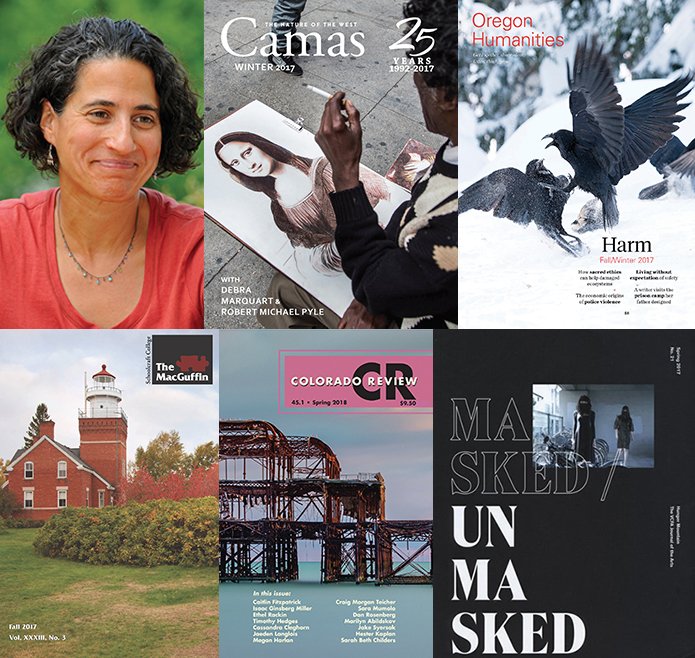
Literary MagNet: Danielle Lazarin
It’s no coincidence that most of the stories in Danielle Lazarin’s debut collection, Back Talk—a book about women, and edited, agented, and publicized by women—were first published in journals with female editors. “I committed myself to supporting women in publishing more fully,” says Lazarin, who now submits only to magazines edited by women. “It seemed a simple step in supporting journals that value women’s voices.” The voices of women ring out in Back Talk, which will be published in February by Penguin Books; the stories show women of all ages negotiating the minor and major travails of modern life. In addition to the journals below, Lazarin has published stories in the Colorado Review, People Holding, Copper Nickel, and Five Chapters.
Lazarin has a knack for placing her characters in situations that draw out their fears and relationship histories, as seen in “Floor Plans,” a story about a woman in New York City who, on the brink of divorce, befriends a neighbor who wants to buy her apartment. The story was originally published in the Southern Review, where prose editor Emily Nemens went back and forth with Lazarin about the piece until she accepted it. “I love that I placed one of my most New York stories in this journal,” says Lazarin, a native New Yorker. “Emily said that was a draw—balancing the regions is something they look for in submissions.” Edited at Louisiana State University, the eighty-two-year-old quarterly publishes many Southern writers, but also publishes poetry, fiction, and nonfiction by writers from all over the United States and the world, with recent contributions from Afghanistan, Nigeria, and Australia. Poetry submissions are open via postal mail until March 1; prose submissions will reopen in September.
Lazarin submitted to Boston Review after meeting fiction editor Junot Díaz at a reading he gave in 2007. Lazarin was the last person in a signing line, and Díaz encouraged her to submit, warning her to “make it good.” He eventually accepted her story “Gone,” which she then worked on with Deborah Chasman, the review’s coeditor. Previously a bimonthly print magazine, Boston Review—which publishes poetry and fiction alongside political and cultural reportage—recently shifted its focus to online content and introduced an ad-free quarterly print edition focused on themes such as “Race / Capitalism / Justice” and “Work / Inequality / Basic Income.” The website will also be free of commercial advertising beginning in February. Poetry and nonfiction submissions are open via Submittable; fiction submissions will open in early 2018.
Edited by sisters Susan Burmeister-Brown and Linda Swanson-Davies in Portland, Oregon, fiction quarterly Glimmer Train is “a magazine that has my heart,” says Lazarin. “The little extras they do—the back of the journal’s exploration of the story behind the story, the childhood photos, and the opportunity to write about writing for their online Bulletin—all these things allow a little bit more of you to come out with the story.” Established in 1990, Glimmer Train is highly respected in the literary world—Lazarin, who won the Family Matters contest for her story “Spider Legs,” says agents and editors contacted her for years in relation to that publication. The journal runs several contests and reading periods each year; the editors, who read all the submissions themselves and are keenly interested in emerging writers, review nearly forty-thousand stories a year. Submissions are currently open for the Short Story Award for New Writers.
Before she committed to publishing with just female editors, Lazarin published her first story in Michigan Quarterly Review, which is currently edited by Khaled Mattawa at the University of Michigan, where Lazarin got her MFA. The journal, which publishes poetry, fiction, and nonfiction, has long featured an impressive list of women writers, such as Margaret Atwood, Maxine Hong Kingston, and Toni Morrison. The review also runs a frequently updated blog of interviews, craft advice, and cultural commentary on topics as far-ranging as the usefulness of a notebook and the novels of modern Iran. The journal is open to submissions in all genres via Submittable from January 15 to April 15.
Lazarin describes herself as a ferocious, perseverant submitter—she once amassed seventy-five rejections in one year—and thus appreciates the enthusiasm and communication of the staff at Indiana Review, which is run by students at the MFA program at Indiana University in Bloomington, including editor in chief Tessa Yang. “With student-run journals there’s a sense that the editors are cheering for you,” says Lazarin. The biannual review publishes poetry, fiction, and nonfiction, including recent work by emerging poets Tiana Clark and Fatimah Asghar and fiction writer LaTanya McQueen. “We look for [pieces] that are well-crafted and lively, have an intelligent sense of form and language, assume a degree of risk, and have consequence beyond the world of their speakers or narrators,” write the editors. Submissions for the journal will open on February 1.
Dana Isokawa is the associate editor of Poets & Writers Magazine.
Literary MagNet: Deb Olin Unferth
In her latest story collection, Wait Till You See Me Dance, fiction writer Deb Olin Unferth—the author of three previous books: a novel, a memoir, and a story collection—brings together nearly forty of her distinctive short stories. The stories, many of which feature characters grappling with the seeming futility of modern endeavors (say, keeping pet turtles, working as an adjunct instructor, lodging a complaint against a pretzel company), are written with precision, deadpan humor, and a sharp but generous observation of human foibles. It’s no wonder that the editors of many journals have sought out her work; Unferth published pieces from the collection, released this month from Graywolf Press, in magazines such as Esquire, Harper’s Magazine, and Vice as well as in smaller literary journals such as the five below.
Unferth was previously an editor at the fiction and nonfiction biannual StoryQuarterly, back when it was published in Chicago and edited by M. M. M. Hayes, now the journal’s senior contributing editor. Established in 1975, StoryQuarterly is currently housed in New Jersey at Rutgers University in Camden and edited by writer Paul Lisicky. The print journal has plans to go digital soon and will open submissions in the fall. “We always like to see fiction and nonfiction that strikes us as impelled, written out of a sense of necessity,” says Lisicky. “It would be especially great to see some new work that’s attuned to the social and environmental upheavals of our times.”
Based in Columbia, Missouri, the online flash-fiction journal Wigleaf seems like a natural home for Unferth, who published her four-sentence, 161-word story “Draft” in March 2016. “I love their mission: small and bright,” says Unferth. “They publish only very odd short-shorts and photos of beautiful, strange postcards designed by the writers.” Instead of running extensive author bios, editor Scott Garson invites contributors to send a postcard. “Dear Wigleaf, The last time I saw you I was different,” writes Roxane Gay. “Dear Wigleaf, Your life would have been different if you had gotten milk from your thumb,” writes Kate Wyer. Submissions of stories less than a thousand words are open via Submittable during the final week of each month, September through May (excluding December); the journal publishes one piece each week during the academic year.
Unferth, who likes publishing her work in student-run magazines, published her story “37 Seconds” in the print annual Columbia Journal, edited by graduate writing students at Columbia University in New York City. Established in 1977, the journal publishes poetry, fiction, and nonfiction both in print and online—submissions are open for the website from October 1 through May 31 and for print from May 31 to September 30—and runs an annual writing contest. Last year the journal opened the contest for the first time to incarcerated writers, working with prison education programs to distribute a call for submissions. “We wanted to help give voice to an often under-heard population of writers,” says editor Daniel Lefferts. That work aligns with Unferth’s own efforts—she recently put together a journal of writing from the John B. Connally Unit, a maximum-security prison in southern Texas, where she runs a workshop.
Speaking of student journals, Unferth published her story “Online” in print biannual Timber, run by the MFA program at the University of Colorado in Boulder, where Unferth once studied philosophy as an undergraduate. The journal publishes all genres and recently moved to themed issues. “Themed issues are a way to open dialogue between genres and to open dialogue concerning ideas or issues that are important to us without imposing an aesthetic prescription,” says managing editor Sarah Thompson. The first themed issue, the “Ruination Issue,” is open for submissions in poetry, fiction, and nonfiction via Submittable through March 31.
When the print biannual Bennington Review made its comeback in 2016 after a thirty-year hiatus, Unferth was among the many who applauded its return. Her stories “The Intersection” and “The Applicant” were published in Issue 2, released in November. “We wanted to take to heart former editor Robert Boyers’s desire for the magazine to be ‘a testing-ground for American arts and letters,’” says editor Michael Dumanis. “We were also thinking about poet Dean Young’s call in his book The Art of Recklessness for poets to be making ‘birds, not birdcages’—the new Bennington Review is committed to publishing work that fuses recklessness with grace, that is playful but also relentless, that is at once innovative, intelligent, and moving.” The review’s third issue will be released next month and is focused on the theme of “Threat.” Based in Bennington, Vermont, and Brooklyn, New York, the journal is open for submissions in poetry, fiction, nonfiction, and hybrid work until May 15.
Dana Isokawa is the associate editor of Poets & Writers Magazine.
Literary MagNet: Kiki Petrosino
In her third poetry collection, Witch Wife—forthcoming from Sarabande Books in December—Kiki Petrosino reckons with the decision of whether or not to have a child. It’s a question she says has no yes-or-no answer: “This is one terrain I can’t navigate with any map,” she says. “It’s personal, it’s emotional.” The book is formally inventive, with prose poems and free-verse lyrics alongside villanelles and other traditional forms. With such a diverse set of poems, Petrosino says the editors who solicit her work also tend to promote an eclectic variety of styles in their journals. In addition to the five publications below, Petrosino has been published in jubilat, Tupelo Quarterly, and Poetry, among others.
With their incantatory language and sometimes dark, fantastical bent, many of Petrosino’s poems are right at home in the online journal Grimoire, named after a book of magical spells and invocations. Established in 2016 in Chicago, Grimoire publishes two biannual issues of poetry, fiction, nonfiction, and artwork—plus spells, séances and fan letters to dead authors, and descriptions of dreams. “Despite Grimoire’s interest in dark subject matter, there is something buoyant, even festive, about the journal’s take on the macabre,” says Petrosino. “Being invited to contribute my poems was like being asked to attend a secret party in a glimmering, underground cavern.” Submissions in all genres are open year-round via e-mail; the editors are interested in work that echoes everything from Shirley Jackson and Miss Havisham to doomsday cults and “okay, maybe a really good vampire.”
While Grimoire presides over the magical, Forklift, Ohio bills itself as a journal of “poetry, cooking, and light industrial safety.” Based in Cincinnati and published one to two times a year, the publication is one of contemporary poetry’s treasures, says Petrosino, as well as one of its best-kept secrets. Editors Matt Hart and Eric Appleby have made every issue by hand since starting the magazine in 1994; the latest issue was constructed out of the blueprints of a slaughterhouse, and earlier editions have been made of materials such as carpet samples and wine corks. Forklift, Ohio publishes mostly poetry, as well as flash fiction, recipes, safety tips, and creative nonfiction related to topics like home economics, industry, and agriculture. The editors vow to “take poetry quite seriously, if little or nothing else” and keep the journal ad-free. Queries are accepted via e-mail during the month of May.
Petrosino says that for a long time she was too shy to submit to Crazyhorse. “This is a journal with a half century of magnificent literary history behind it,” she says—and she’s right. Established by poet Tom McGrath in 1960, the biannual print journal has published writers such as Raymond Carver, John Ashbery, Jorie Graham, Ha Jin, and John Updike. Housed at the College of Charleston in South Carolina, Crazyhorse publishes poetry, fiction, and nonfiction. “The poetry contributions are always robust and formally diverse,” says Petrosino, “so my two strange little lyrics about the mysteries of marriage found a ready home there.” The magazine is open for submissions each year from September through May, except during January, when the editors accept only entries for their annual writing contest.
Edited by British poets Sarah Howe, Vidyan Ravinthiran, and Dai George, Prac Crit is an online journal whose tagline is “poetry up close.” Each issue of the triannual publication features only a handful of poems, but these are juxtaposed with a critic’s close analysis of the poem and an interview with the poet. “In a literary culture too reliant on vague statements of praise or blame,” write the editors, “we believe there’s a renewed need for readerly attention grounded in the specifics of actual poems.” Each issue also features “Deep Note,” in which a poet annotates a poem. Petrosino wrote one for her villanelle “Scarlet,” which enabled her to “curate a kind of guided tour of the piece” and share the experiences in her life—baton twirling, contracting scarlet fever, playing Super Mario Brothers—that informed the poem. The editors do not accept poetry submissions, but they do accept proposals for essays or interviews on contemporary poetry via e-mail year-round.
Focused on the notion of place, the biannual print journal Spoon River Poetry Review is located at Illinois State University in Normal, Illinois. Established in 1976, the review publishes poetry and poetry in translation, as well as interviews with and chapbook-length portfolios of work by poets with a connection to Illinois. The journal allows for “traditional understandings of home and region to assume new meanings in our increasingly globalized world,” says Petrosino. She published her poem “Young,” a line-by-line reenvisioning of Anne Sexton’s poem of the same name, in the Summer 2015 issue. The poem explores the “potentially magic qualities of a suburban adolescence,” Petrosino says. “Of course, adolescence itself is a kind of place, one we pass through, briefly, on our way to everything else.” Spoon River Poetry Review is open for submissions via the online submission manager or by postal mail until February 15, 2018.
Dana Isokawa is the associate editor of Poets & Writers Magazine.
Witch Wife by Kiki Petrosino
Kiki Petrosino reads three poems from her new collection, Witch Wife, published in December by Sarabande Books.
Literary MagNet: Beth Ann Fennelly
“A micro-memoir combines the extreme abbreviation of poetry with the narrative tension of fiction and the truth telling of creative nonfiction,” says Beth Ann Fennelly, whose new book, Heating & Cooling: 52 Micro-Memoirs (Norton, October), does just that. Varying in length from a single sentence to several pages, the essays in her book are told with wry self-awareness and compassion; each piece illuminates how the manners and minutiae of everyday life, from making small talk on an airplane to fixing an air conditioner, are underpinned by deep-rooted human needs and beliefs. The author of three poetry collections, a previous book of nonfiction, and a novel she coauthored with her husband, Tom Franklin, Fennelly has published micro-memoirs from her new book in the journals below, among many others.
When Fennelly began looking into publishing her micro-memoirs, it’s no surprise that the first place she submitted to was Brevity, the gold standard for short nonfiction. The online journal, which specializes in essays of 750 words or less (along with a handful of craft essays and book reviews), published two pieces from Heating & Cooling in its January 2016 and 2017 issues. Established twenty years ago by the “indomitable Dinty Moore,” as Fennelly says, Brevity is based in Athens, Ohio, and is published three times a year. “I was intrigued by what might be possible in whittling true stories down to such a small size,” says Moore about starting the journal. Essay submissions open via Submittable this month, and queries for craft essays and book reviews are accepted year-round via e-mail.
Meanwhile, Arkansas International, which featured three of Fennelly’s micro-memoirs in its inaugural issue, is just getting started; its second issue was released earlier this year. Fennelly admits a soft spot for the biannual print magazine: It’s run by the MFA program at the University of Arkansas in Fayetteville, where she got her MFA and met her husband. The program is one of the few in the country to offer a translation track and has an international focus, which is reflected in the journal. “I love to be at a party where other languages are being spoken,” says Fennelly. “Very cool to rub shoulders with a master of Japanese haikus of the Meiji period or a French comic book writer.” Submissions in poetry, fiction, nonfiction, and translation open via Submittable this month; this fall the journal will also launch an annual $1,000 prize for a short story.
“I tend to appreciate journals that pay,” says Fennelly. “I think it shows a kind of respect…. I often donate it right back to the mag, so I’m obviously not in it for the dough—no writers are.” This belief seems to be shared by Grist, which published Fennelly’s “Nine Months in Madison” in its current issue. Established in 2007 and housed in the University of Tennessee in Knoxville, the annual print journal started paying writers two years ago. “Even with a small amount, we think paying our writers is a huge step in recognizing the work they put into their writing,” says editor Jeremy Michael Reed. Grist publishes poetry, fiction, nonfiction, and craft essays, and accepts submissions in all genres until September 15 via Submittable.
Fennelly published her first pieces in Blackbird in 2004 and has been publishing work in the biannual online journal ever since, including “Safety Scissors”—a micro-memoir about her older sister that swerves from the trivial to the heartbreaking in a few hundred words—and “What I Learned in Grad School,” a spot-on snapshot of jealousy among writers, in the Fall 2016 issue. Fennelly cites audio recordings of contributing writers reading their work and the editors’ willingness to publish longer sequences as two of the journal’s many draws. Based at Virginia Commonwealth University in Richmond, Blackbird publishes poetry, fiction, nonfiction, and plays. Postal and online submissions in all genres open on November 15.
Fennelly advises writers who are submitting flash nonfiction or micro-memoir to consider packaging the pieces in a group to help readers latch on to the form. When she submitted five micro-memoirs to the Missouri Review, the journal ended up publishing an eight-page feature of Fennelly’s work, along with notes about the form and original artwork, in its Fall 2016 issue. Located at the University of Missouri in Columbia, the quarterly often publishes such portfolios by a single writer, which, along with “a history of excellent editing,” is part of what Fennelly says makes the Missouri Review special. The editors publish poetry, fiction, and nonfiction, and release a print and digital issue that includes an audio version. The journal, which launched a new website this fall, is open for submissions in all genres year-round online and via postal mail.
Dana Isokawa is the associate editor of Poets & Writers Magazine.
Literary MagNet: Yuka Igarashi
In August, Catapult will publish PEN America Best Debut Short Stories 2017, featuring twelve debut stories that won PEN America’s inaugural Robert J. Dau Short Story Prizes for Emerging Writers. Judged this year by Kelly Link, Marie-Helene Bertino, and Nina McConigley, the $2,000 prizes are given annually for debut stories published in literary magazines in the previous year. The anthology, which prefaces each story with a note from the editor of the journal that originally published it, shows how literary magazines are often a proving ground for new voices. “A literary magazine puts a writer in conversation with other writers and, depending on the magazine, with a community, with a lineage or tradition,” says Catapult’s Yuka Igarashi, who edited the book. Below are five of the journals included in the anthology.
“Writers need to decide for themselves who they are in conversation with, what their genealogy is,” says Igarashi, “but there’s always a new and exciting energy when an editor or some other outside curatorial force says, you and you are interesting to think about and read together.” This curatorial force is on display in Epiphany, a biannual print journal based in New York City that prides itself on publishing established writers alongside emerging writers, such as Ruth Serven, whose story “A Message” appears in the anthology. Serven’s story first appeared in the Fall/Winter 2016 issue of the journal, which also showcased work by poet Patricia Smith and fiction writer Lydia Davis. Epiphany publishes poetry, fiction, and nonfiction; submissions are open via Submittable until August 1.
The editors of the Summerset Review don’t seek out debut fiction, but they do end up publishing first stories by two to three fiction writers each year, says editor Joseph Levens. Established in 2002, the journal, which is published quarterly online and occasionally in print, is based in Smithtown, New York, and publishes poetry, fiction, and nonfiction. “We’re suckers for engaging first-person narratives, and especially those that make us empathize with the protagonist and root for the underdog,” says Levens in his introduction to Jim Cole’s “The Asphodel Meadow,” which first appeared in the Fall 2016 issue of the Summerset Review. Submissions are open year-round in all genres via e-mail or postal mail.
“We read about 1,500 unsolicited short stories each year, always with an eye for work by new writers,” say publisher Vern Miller and guest fiction editor Rachel Swearingen of Fifth Wednesday Journal. Miller and Swearingen published Angela Ajayi’s “Galina,” about a daughter visiting her mother in Ukraine after spending a decade in Nigeria, in the Fall 2016 issue. Based in Lisle, Illinois, the print journal is published twice a year along with a separate online edition. The editors devoted the forthcoming Fall issue to work by immigrants and children of immigrants from Middle Eastern and North African countries. Submissions in poetry, fiction, and nonfiction for the Spring 2018 issue of Fifth Wednesday Journal open on August 15.
San Francisco–based journal Hyphen published Laura Chow Reeve’s debut story, “1,000-Year-Old Ghosts,” in June 2016. The magazine, which originally came out in print two to three times a year, is now exclusively online, publishing poetry and fiction each month. Launched in 2003, Hyphen—which also publishes news, criticism, and interviews—is devoted to conveying the “enormous richness, contradiction, and vitality that defines the Asian American experience.” Editor Karissa Chen says about Reeve’s story: “It exemplifies what we’re looking for when we select fiction—lyrical writing, inventiveness of plot, a point of view touched by the Asian American experience, and, most importantly, a story infused with deep empathy and heart.” Submissions in poetry and fiction are open year-round via Submittable.
Katherine Magyarody’s “Goldhawk,” a story about a female immigrant working in the office of an IT company, stood out to the editors of the Malahat Review because of its subtle depiction of the modern workplace’s “sublimated misogyny and xenophobia,” says editor John Barton. Housed at the University of Victoria in Canada, the quarterly print magazine publishes poetry, fiction, creative nonfiction, and translations by mostly Canadian writers (though the journal is open to work from writers from any country). Established in 1967, the journal also administers several contests each year, including the Constance Rooke Creative Nonfiction Prize—the award, given for an essay, comes with $1,000 Canadian (approximately $730)—which is open until August 1. General submissions in all genres are open year-round via Submittable.
Editor’s Note: After this article went to print, the submission deadline for Epiphany was extended from July 1 to August 1. The article has been adjusted to reflect this change.
Literary MagNet: Aaron Gilbreath
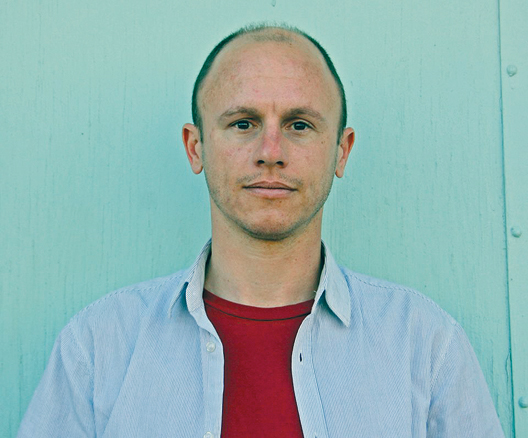 When I find journals that run essays containing bad behavior, deep reflection, and curse words, I send to them,” says Aaron Gilbreath, who published nearly every essay in his debut collection, Everything We Don’t Know (Curbside Splendor, November 2016) in literary magazines. This was no small feat—he submitted each essay anywhere between six and sixty-two times. “My essays aren’t really formally inventive or pushing the genre’s limits, so I go for journals that welcome voice-driven first-person nonfiction that explores universal themes through unusual narrative frames,” he says. “The essays in my book feature road trips, pop culture, drugs, music, and screwing up, and they incorporate research and reporting.” Below are five journals that published essays by Gilbreath.
When I find journals that run essays containing bad behavior, deep reflection, and curse words, I send to them,” says Aaron Gilbreath, who published nearly every essay in his debut collection, Everything We Don’t Know (Curbside Splendor, November 2016) in literary magazines. This was no small feat—he submitted each essay anywhere between six and sixty-two times. “My essays aren’t really formally inventive or pushing the genre’s limits, so I go for journals that welcome voice-driven first-person nonfiction that explores universal themes through unusual narrative frames,” he says. “The essays in my book feature road trips, pop culture, drugs, music, and screwing up, and they incorporate research and reporting.” Below are five journals that published essays by Gilbreath.
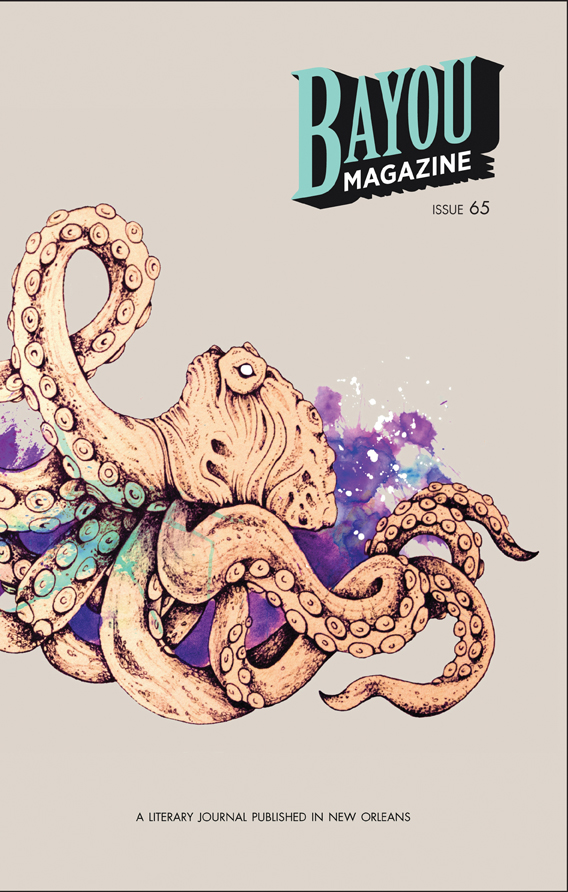 “Lit mags feel like old-school garage bands to me. When they aren’t tethered to commerce or some sales team’s expectations, they can focus on delivering highly charged, less commercial creations to a dedicated audience,” says Gilbreath, who seems to have found this in the New Orleans–based print biannual Bayou (bayoumagazine.org). Despite its modest circulation of less than five hundred, the journal produces “physical issues as beautiful as its contents,” according to Gilbreath, and publishes many emerging writers in each issue. Gilbreath’s “My Manhattan Minute” won Bayou’s essay contest in 2008 under a different name; the journal now runs a poetry and fiction contest each fall. General submissions of poetry, fiction, and nonfiction are open until May 1 via Submittable and postal mail.
“Lit mags feel like old-school garage bands to me. When they aren’t tethered to commerce or some sales team’s expectations, they can focus on delivering highly charged, less commercial creations to a dedicated audience,” says Gilbreath, who seems to have found this in the New Orleans–based print biannual Bayou (bayoumagazine.org). Despite its modest circulation of less than five hundred, the journal produces “physical issues as beautiful as its contents,” according to Gilbreath, and publishes many emerging writers in each issue. Gilbreath’s “My Manhattan Minute” won Bayou’s essay contest in 2008 under a different name; the journal now runs a poetry and fiction contest each fall. General submissions of poetry, fiction, and nonfiction are open until May 1 via Submittable and postal mail.
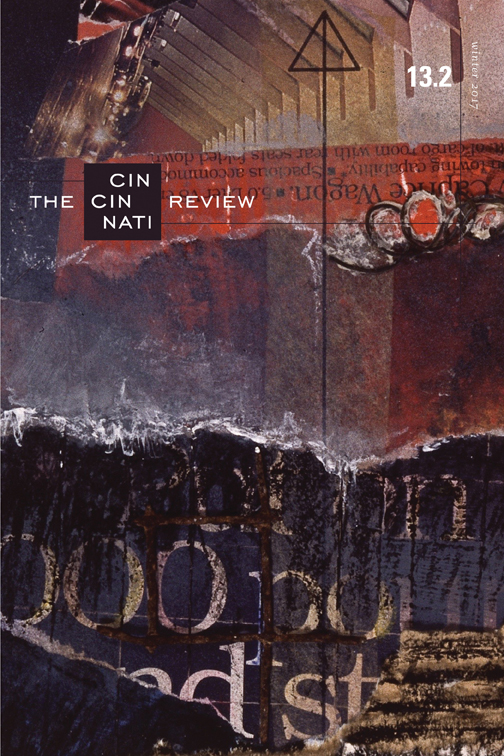
The opening essay of Gilbreath’s collection, “Dreams of the Atomic Era,” was first published in the print biannual Cincinnati Review (cincinnatireview.com). Housed at the University of Cincinnati, the journal publishes poetry, fiction, nonfiction, and translation, and was founded in 2003 by Nicola Mason, James Cummins, and one of Gilbreath’s favorite fiction writers, Brock Clarke. Gilbreath discovered the journal after seeing it in the acknowledgments pages of story collections he admired, as well as in Best American Essays (which in 2011 named Gilbreath’s Cincinnati Review piece a notable essay). Submissions are open in all genres until March 15 via the journal’s online submission manager; senior associate editor Matt O’Keefe says the editorial staff would like to see more submissions of hybrid forms.
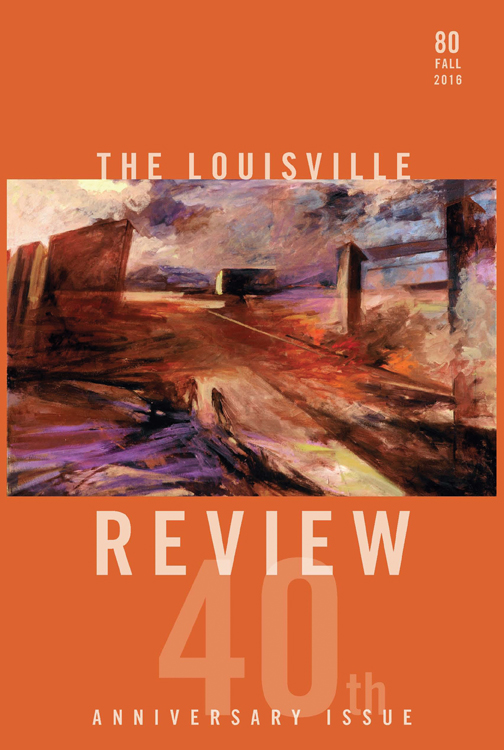 The closing essay of Gilbreath’s collection, “(Be)Coming Clean,” first appeared in the Louisville Review (louisvillereview.org) in a shorter form. Gilbreath admits he was not always open to having this essay published—the piece is about getting on methadone maintenance for his brief heroin problem—but he is grateful now that it was. “I want to talk about this part of my young life,” he says, “and the Louisville Review helped me start that conversation.” The biannual print journal, which recently celebrated its fortieth anniversary, is based out of Spalding University in Louisville, Kentucky, and publishes poetry, fiction, nonfiction, and drama. The editors pride themselves on not only publishing established writers like poet Stephen Dunn and fiction writer Ursula Hegi, but also discovering those who are just starting out; the journal published Louise Erdrich when she was still a student at Johns Hopkins. Submissions are open year-round online and via postal mail.
The closing essay of Gilbreath’s collection, “(Be)Coming Clean,” first appeared in the Louisville Review (louisvillereview.org) in a shorter form. Gilbreath admits he was not always open to having this essay published—the piece is about getting on methadone maintenance for his brief heroin problem—but he is grateful now that it was. “I want to talk about this part of my young life,” he says, “and the Louisville Review helped me start that conversation.” The biannual print journal, which recently celebrated its fortieth anniversary, is based out of Spalding University in Louisville, Kentucky, and publishes poetry, fiction, nonfiction, and drama. The editors pride themselves on not only publishing established writers like poet Stephen Dunn and fiction writer Ursula Hegi, but also discovering those who are just starting out; the journal published Louise Erdrich when she was still a student at Johns Hopkins. Submissions are open year-round online and via postal mail.
 “When I wrote an essay about sleeping in my car and stealing hotel breakfasts in order to see bands play on a limited budget, and questioning my parental potential,” says Gilbreath, “the Smart Set immediately came to mind.” The Smart Set (thesmartset.com) is an online magazine housed at Drexel University in Philadelphia that posts new content three times a week. Taking its name from the journal H. L. Mencken and George Jean Nathan edited in the early 1900s, the magazine covers culture and ideas, arts and science, and global and national affairs. Gilbreath was drawn to the magazine for its track record of publishing compelling travel writing—many of its pieces appear in the Best American Travel Writing series—as well as personal and critical essays, reporting, memoir, and photography. Submissions are open year-round via e-mail; the magazine does not publish fiction or poetry.
“When I wrote an essay about sleeping in my car and stealing hotel breakfasts in order to see bands play on a limited budget, and questioning my parental potential,” says Gilbreath, “the Smart Set immediately came to mind.” The Smart Set (thesmartset.com) is an online magazine housed at Drexel University in Philadelphia that posts new content three times a week. Taking its name from the journal H. L. Mencken and George Jean Nathan edited in the early 1900s, the magazine covers culture and ideas, arts and science, and global and national affairs. Gilbreath was drawn to the magazine for its track record of publishing compelling travel writing—many of its pieces appear in the Best American Travel Writing series—as well as personal and critical essays, reporting, memoir, and photography. Submissions are open year-round via e-mail; the magazine does not publish fiction or poetry.
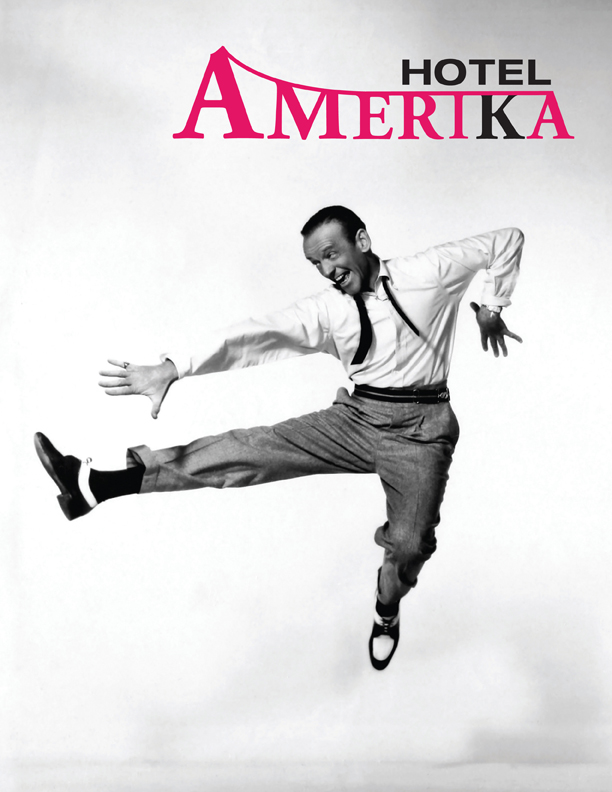 According to its editors, the print annual Hotel Amerika (hotelamerika.net) is “an eclectic journal that attracts an equally eclectic audience.” Gilbreath had unsuccessfully submitted to the magazine for years, but when he wrote a “very voicey, tumbling, digressive-type exploration of the word rad,” he decided to try again. The journal accepted and published “\’ra-di-kl\” in its Spring 2012 issue. Established in 2002 and based in Chicago, Hotel Amerika accepts submissions in all “genres of creative writing, generously defined” via Submittable until May 1. “I still can’t believe they wanted my essay,” says Gilbreath. “Sorry to say it, but: It was pretty rad.”
According to its editors, the print annual Hotel Amerika (hotelamerika.net) is “an eclectic journal that attracts an equally eclectic audience.” Gilbreath had unsuccessfully submitted to the magazine for years, but when he wrote a “very voicey, tumbling, digressive-type exploration of the word rad,” he decided to try again. The journal accepted and published “\’ra-di-kl\” in its Spring 2012 issue. Established in 2002 and based in Chicago, Hotel Amerika accepts submissions in all “genres of creative writing, generously defined” via Submittable until May 1. “I still can’t believe they wanted my essay,” says Gilbreath. “Sorry to say it, but: It was pretty rad.”
Dana Isokawa is the associate editor of Poets & Writers Magazine.
Literary MagNet: Alex Dimitrov
In his second poetry collection, Together and by Ourselves, published in April by Copper Canyon Press, Alex Dimitrov questions the myths and realities of loneliness and intimacy. The poems are tonally diverse—aphoristic in one moment, wondering in another, and emotionally stark in the next. When it came to publishing these poems, Dimitrov gravitated toward online journals where work is easily shared and accessible. “Someone trying to find a recipe, for example, may stumble upon your poem in someone else’s feed, and that’s an unlikely connection suddenly made possible,” he says. “I really care about poetry reaching as many people as possible.” In addition to the five journals below, Dimitrov has published his poems in Poetry, Boston Review, New England Review, Kenyon Review, and BOMB, among others.
A journal with a lively online presence, Cosmonauts Avenue published Dimitrov’s poem “Famous and Nowhere” in March 2015. Editors Ann Ward and Bükem Reitmayer, who have run the independent online monthly since 2014, publish poetry, fiction, and nonfiction, as well as a playful mini-interview series, Tiny Spills, in which writers dish on things like “your writer crush,” “tabs you have open right now,” and “your guilty literary pleasure.” The editors are eager to publish more “voice-driven and personal nonfiction” and are drawn to poetry, like Dimitrov’s, that “can house both intimacy and anonymity,” says Ward. The journal is open for submissions in all genres year-round via Submittable.
When he was in college, Dimitrov used to dream about publishing in the American Poetry Review. “It’s so classic,” he says, “a staple, really.” Established in 1972 and based in Philadelphia, the no-frills bimonthly newsprint tabloid has published consistently top-notch poetry, essays, interviews, and criticism by more than three thousand writers. The review published two poems from Dimitrov’s new collection, “Strangers and Friends” and “In the New Century I Gave You My Name,” and awarded him its annual Stanley Kunitz prize—$1,000 and publication to a poet under forty for a single poem—in 2011. “An Alex poem doesn’t sound like anyone else to me,” says editor Elizabeth Scanlon. “His syntax is so spare; it feels very intimate.” General submissions are open year-round; submissions for the Kunitz Prize close May 15.
Also based in Philadelphia, the Adroit Journal is released five times a year and publishes poetry, fiction, art, and interviews. Editor Peter LaBerge—who started the online magazine in 2010 when he was only a sophomore in high school—is unafraid of pushing the envelope and published Dimitrov’s poem “Cocaine” in the journal’s April 2015 issue. “I didn’t think many places would publish it because of the title,” Dimitrov says, but with LaBerge’s support the poem went on to win a Pushcart Prize. The journal’s contributor pool tends toward the younger side, as LaBerge is committed to connecting secondary and undergraduate student writers with the literary world; the journal administers contests for student writers and runs a free online workshop program in which high school students work on their writing with established writers for a summer. Submissions for the journal will open later this month via Submittable.
Established in 2010 by Kelly Forsythe—who also serves as Copper Canyon’s director of publicity—Phantom is the online poetry quarterly of Phantom Books, which also produces hand-sewn chapbooks and hosts a reading series in Brooklyn, New York. The editors are scattered around the United States, and as Forsythe said in a 2013 interview with the Poetry Society of America, their geographical diversity helps them to “consider—and strongly value—diversity of poetic tone, style, and voice.” Phantom is published four times a year and in 2015 devoted an issue to emerging poets. Dimitrov published his poem “Los Angeles, NY”—inspired by John Donne, religion, and the relationship between the body and the mind—in the Spring 2014 issue. The journal will reopen for submissions this summer.
Edited by graduate students at Ohio State University in Columbus, the Journal is published twice annually in print and twice annually online. Established in 1973, the magazine publishes poetry, fiction, and nonfiction and administers an annual poetry book prize in the fall and a prose book prize in the winter. The Journal published Dimitrov’s “People” in the Fall 2016 issue, a poem that editors Daniel O’Brien and Jake Bauer were immediately taken with because of how it “reveals a private familiarity, and simultaneously welcomes the reader, but holds us at a bit of a distance.” Poetry and nonfiction submissions are open year-round; fiction submissions will reopen on August 15.
Dana Isokawa is the associate editor of Poets & Writers Magazine.
Photo credit: Rachel Eliza Griffiths
Literary MagNet: Alex Dimitrov
In his second poetry collection, Together and by Ourselves, published in April by Copper Canyon Press, Alex Dimitrov questions the myths and realities of loneliness and intimacy. The poems are tonally diverse—aphoristic in one moment, wondering in another, and emotionally stark in the next. When it came to publishing these poems, Dimitrov gravitated toward online journals where work is easily shared and accessible. “Someone trying to find a recipe, for example, may stumble upon your poem in someone else’s feed, and that’s an unlikely connection suddenly made possible,” he says. “I really care about poetry reaching as many people as possible.” In addition to the five journals below, Dimitrov has published his poems in Poetry, Boston Review, New England Review, Kenyon Review, and BOMB, among others.
A journal with a lively online presence, Cosmonauts Avenue published Dimitrov’s poem “Famous and Nowhere” in March 2015. Editors Ann Ward and Bükem Reitmayer, who have run the independent online monthly since 2014, publish poetry, fiction, and nonfiction, as well as a playful mini-interview series, Tiny Spills, in which writers dish on things like “your writer crush,” “tabs you have open right now,” and “your guilty literary pleasure.” The editors are eager to publish more “voice-driven and personal nonfiction” and are drawn to poetry, like Dimitrov’s, that “can house both intimacy and anonymity,” says Ward. The journal is open for submissions in all genres year-round via Submittable.
When he was in college, Dimitrov used to dream about publishing in the American Poetry Review. “It’s so classic,” he says, “a staple, really.” Established in 1972 and based in Philadelphia, the no-frills bimonthly newsprint tabloid has published consistently top-notch poetry, essays, interviews, and criticism by more than three thousand writers. The review published two poems from Dimitrov’s new collection, “Strangers and Friends” and “In the New Century I Gave You My Name,” and awarded him its annual Stanley Kunitz prize—$1,000 and publication to a poet under forty for a single poem—in 2011. “An Alex poem doesn’t sound like anyone else to me,” says editor Elizabeth Scanlon. “His syntax is so spare; it feels very intimate.” General submissions are open year-round; submissions for the Kunitz Prize close May 15.
Also based in Philadelphia, the Adroit Journal is released five times a year and publishes poetry, fiction, art, and interviews. Editor Peter LaBerge—who started the online magazine in 2010 when he was only a sophomore in high school—is unafraid of pushing the envelope and published Dimitrov’s poem “Cocaine” in the journal’s April 2015 issue. “I didn’t think many places would publish it because of the title,” Dimitrov says, but with LaBerge’s support the poem went on to win a Pushcart Prize. The journal’s contributor pool tends toward the younger side, as LaBerge is committed to connecting secondary and undergraduate student writers with the literary world; the journal administers contests for student writers and runs a free online workshop program in which high school students work on their writing with established writers for a summer. Submissions for the journal will open later this month via Submittable.
Established in 2010 by Kelly Forsythe—who also serves as Copper Canyon’s director of publicity—Phantom is the online poetry quarterly of Phantom Books, which also produces hand-sewn chapbooks and hosts a reading series in Brooklyn, New York. The editors are scattered around the United States, and as Forsythe said in a 2013 interview with the Poetry Society of America, their geographical diversity helps them to “consider—and strongly value—diversity of poetic tone, style, and voice.” Phantom is published four times a year and in 2015 devoted an issue to emerging poets. Dimitrov published his poem “Los Angeles, NY”—inspired by John Donne, religion, and the relationship between the body and the mind—in the Spring 2014 issue. The journal will reopen for submissions this summer.
Edited by graduate students at Ohio State University in Columbus, the Journal is published twice annually in print and twice annually online. Established in 1973, the magazine publishes poetry, fiction, and nonfiction and administers an annual poetry book prize in the fall and a prose book prize in the winter. The Journal published Dimitrov’s “People” in the Fall 2016 issue, a poem that editors Daniel O’Brien and Jake Bauer were immediately taken with because of how it “reveals a private familiarity, and simultaneously welcomes the reader, but holds us at a bit of a distance.” Poetry and nonfiction submissions are open year-round; fiction submissions will reopen on August 15.
Dana Isokawa is the associate editor of Poets & Writers Magazine.
Photo credit: Rachel Eliza Griffiths
Literary MagNet: Yuka Igarashi
In August, Catapult will publish PEN America Best Debut Short Stories 2017, featuring twelve debut stories that won PEN America’s inaugural Robert J. Dau Short Story Prizes for Emerging Writers. Judged this year by Kelly Link, Marie-Helene Bertino, and Nina McConigley, the $2,000 prizes are given annually for debut stories published in literary magazines in the previous year. The anthology, which prefaces each story with a note from the editor of the journal that originally published it, shows how literary magazines are often a proving ground for new voices. “A literary magazine puts a writer in conversation with other writers and, depending on the magazine, with a community, with a lineage or tradition,” says Catapult’s Yuka Igarashi, who edited the book. Below are five of the journals included in the anthology.
“Writers need to decide for themselves who they are in conversation with, what their genealogy is,” says Igarashi, “but there’s always a new and exciting energy when an editor or some other outside curatorial force says, you and you are interesting to think about and read together.” This curatorial force is on display in Epiphany, a biannual print journal based in New York City that prides itself on publishing established writers alongside emerging writers, such as Ruth Serven, whose story “A Message” appears in the anthology. Serven’s story first appeared in the Fall/Winter 2016 issue of the journal, which also showcased work by poet Patricia Smith and fiction writer Lydia Davis. Epiphany publishes poetry, fiction, and nonfiction; submissions are open via Submittable until August 1.
The editors of the Summerset Review don’t seek out debut fiction, but they do end up publishing first stories by two to three fiction writers each year, says editor Joseph Levens. Established in 2002, the journal, which is published quarterly online and occasionally in print, is based in Smithtown, New York, and publishes poetry, fiction, and nonfiction. “We’re suckers for engaging first-person narratives, and especially those that make us empathize with the protagonist and root for the underdog,” says Levens in his introduction to Jim Cole’s “The Asphodel Meadow,” which first appeared in the Fall 2016 issue of the Summerset Review. Submissions are open year-round in all genres via e-mail or postal mail.
“We read about 1,500 unsolicited short stories each year, always with an eye for work by new writers,” say publisher Vern Miller and guest fiction editor Rachel Swearingen of Fifth Wednesday Journal. Miller and Swearingen published Angela Ajayi’s “Galina,” about a daughter visiting her mother in Ukraine after spending a decade in Nigeria, in the Fall 2016 issue. Based in Lisle, Illinois, the print journal is published twice a year along with a separate online edition. The editors devoted the forthcoming Fall issue to work by immigrants and children of immigrants from Middle Eastern and North African countries. Submissions in poetry, fiction, and nonfiction for the Spring 2018 issue of Fifth Wednesday Journal open on August 15.
San Francisco–based journal Hyphen published Laura Chow Reeve’s debut story, “1,000-Year-Old Ghosts,” in June 2016. The magazine, which originally came out in print two to three times a year, is now exclusively online, publishing poetry and fiction each month. Launched in 2003, Hyphen—which also publishes news, criticism, and interviews—is devoted to conveying the “enormous richness, contradiction, and vitality that defines the Asian American experience.” Editor Karissa Chen says about Reeve’s story: “It exemplifies what we’re looking for when we select fiction—lyrical writing, inventiveness of plot, a point of view touched by the Asian American experience, and, most importantly, a story infused with deep empathy and heart.” Submissions in poetry and fiction are open year-round via Submittable.
Katherine Magyarody’s “Goldhawk,” a story about a female immigrant working in the office of an IT company, stood out to the editors of the Malahat Review because of its subtle depiction of the modern workplace’s “sublimated misogyny and xenophobia,” says editor John Barton. Housed at the University of Victoria in Canada, the quarterly print magazine publishes poetry, fiction, creative nonfiction, and translations by mostly Canadian writers (though the journal is open to work from writers from any country). Established in 1967, the journal also administers several contests each year, including the Constance Rooke Creative Nonfiction Prize—the award, given for an essay, comes with $1,000 Canadian (approximately $730)—which is open until August 1. General submissions in all genres are open year-round via Submittable.
Editor’s Note: After this article went to print, the submission deadline for Epiphany was extended from July 1 to August 1. The article has been adjusted to reflect this change.
Literary MagNet: Beth Ann Fennelly
“A micro-memoir combines the extreme abbreviation of poetry with the narrative tension of fiction and the truth telling of creative nonfiction,” says Beth Ann Fennelly, whose new book, Heating & Cooling: 52 Micro-Memoirs (Norton, October), does just that. Varying in length from a single sentence to several pages, the essays in her book are told with wry self-awareness and compassion; each piece illuminates how the manners and minutiae of everyday life, from making small talk on an airplane to fixing an air conditioner, are underpinned by deep-rooted human needs and beliefs. The author of three poetry collections, a previous book of nonfiction, and a novel she coauthored with her husband, Tom Franklin, Fennelly has published micro-memoirs from her new book in the journals below, among many others.
When Fennelly began looking into publishing her micro-memoirs, it’s no surprise that the first place she submitted to was Brevity, the gold standard for short nonfiction. The online journal, which specializes in essays of 750 words or less (along with a handful of craft essays and book reviews), published two pieces from Heating & Cooling in its January 2016 and 2017 issues. Established twenty years ago by the “indomitable Dinty Moore,” as Fennelly says, Brevity is based in Athens, Ohio, and is published three times a year. “I was intrigued by what might be possible in whittling true stories down to such a small size,” says Moore about starting the journal. Essay submissions open via Submittable this month, and queries for craft essays and book reviews are accepted year-round via e-mail.
Meanwhile, Arkansas International, which featured three of Fennelly’s micro-memoirs in its inaugural issue, is just getting started; its second issue was released earlier this year. Fennelly admits a soft spot for the biannual print magazine: It’s run by the MFA program at the University of Arkansas in Fayetteville, where she got her MFA and met her husband. The program is one of the few in the country to offer a translation track and has an international focus, which is reflected in the journal. “I love to be at a party where other languages are being spoken,” says Fennelly. “Very cool to rub shoulders with a master of Japanese haikus of the Meiji period or a French comic book writer.” Submissions in poetry, fiction, nonfiction, and translation open via Submittable this month; this fall the journal will also launch an annual $1,000 prize for a short story.
“I tend to appreciate journals that pay,” says Fennelly. “I think it shows a kind of respect…. I often donate it right back to the mag, so I’m obviously not in it for the dough—no writers are.” This belief seems to be shared by Grist, which published Fennelly’s “Nine Months in Madison” in its current issue. Established in 2007 and housed in the University of Tennessee in Knoxville, the annual print journal started paying writers two years ago. “Even with a small amount, we think paying our writers is a huge step in recognizing the work they put into their writing,” says editor Jeremy Michael Reed. Grist publishes poetry, fiction, nonfiction, and craft essays, and accepts submissions in all genres until September 15 via Submittable.
Fennelly published her first pieces in Blackbird in 2004 and has been publishing work in the biannual online journal ever since, including “Safety Scissors”—a micro-memoir about her older sister that swerves from the trivial to the heartbreaking in a few hundred words—and “What I Learned in Grad School,” a spot-on snapshot of jealousy among writers, in the Fall 2016 issue. Fennelly cites audio recordings of contributing writers reading their work and the editors’ willingness to publish longer sequences as two of the journal’s many draws. Based at Virginia Commonwealth University in Richmond, Blackbird publishes poetry, fiction, nonfiction, and plays. Postal and online submissions in all genres open on November 15.
Fennelly advises writers who are submitting flash nonfiction or micro-memoir to consider packaging the pieces in a group to help readers latch on to the form. When she submitted five micro-memoirs to the Missouri Review, the journal ended up publishing an eight-page feature of Fennelly’s work, along with notes about the form and original artwork, in its Fall 2016 issue. Located at the University of Missouri in Columbia, the quarterly often publishes such portfolios by a single writer, which, along with “a history of excellent editing,” is part of what Fennelly says makes the Missouri Review special. The editors publish poetry, fiction, and nonfiction, and release a print and digital issue that includes an audio version. The journal, which launched a new website this fall, is open for submissions in all genres year-round online and via postal mail.
Dana Isokawa is the associate editor of Poets & Writers Magazine.
Literary MagNet: Kiki Petrosino
In her third poetry collection, Witch Wife—forthcoming from Sarabande Books in December—Kiki Petrosino reckons with the decision of whether or not to have a child. It’s a question she says has no yes-or-no answer: “This is one terrain I can’t navigate with any map,” she says. “It’s personal, it’s emotional.” The book is formally inventive, with prose poems and free-verse lyrics alongside villanelles and other traditional forms. With such a diverse set of poems, Petrosino says the editors who solicit her work also tend to promote an eclectic variety of styles in their journals. In addition to the five publications below, Petrosino has been published in jubilat, Tupelo Quarterly, and Poetry, among others.
With their incantatory language and sometimes dark, fantastical bent, many of Petrosino’s poems are right at home in the online journal Grimoire, named after a book of magical spells and invocations. Established in 2016 in Chicago, Grimoire publishes two biannual issues of poetry, fiction, nonfiction, and artwork—plus spells, séances and fan letters to dead authors, and descriptions of dreams. “Despite Grimoire’s interest in dark subject matter, there is something buoyant, even festive, about the journal’s take on the macabre,” says Petrosino. “Being invited to contribute my poems was like being asked to attend a secret party in a glimmering, underground cavern.” Submissions in all genres are open year-round via e-mail; the editors are interested in work that echoes everything from Shirley Jackson and Miss Havisham to doomsday cults and “okay, maybe a really good vampire.”
While Grimoire presides over the magical, Forklift, Ohio bills itself as a journal of “poetry, cooking, and light industrial safety.” Based in Cincinnati and published one to two times a year, the publication is one of contemporary poetry’s treasures, says Petrosino, as well as one of its best-kept secrets. Editors Matt Hart and Eric Appleby have made every issue by hand since starting the magazine in 1994; the latest issue was constructed out of the blueprints of a slaughterhouse, and earlier editions have been made of materials such as carpet samples and wine corks. Forklift, Ohio publishes mostly poetry, as well as flash fiction, recipes, safety tips, and creative nonfiction related to topics like home economics, industry, and agriculture. The editors vow to “take poetry quite seriously, if little or nothing else” and keep the journal ad-free. Queries are accepted via e-mail during the month of May.
Petrosino says that for a long time she was too shy to submit to Crazyhorse. “This is a journal with a half century of magnificent literary history behind it,” she says—and she’s right. Established by poet Tom McGrath in 1960, the biannual print journal has published writers such as Raymond Carver, John Ashbery, Jorie Graham, Ha Jin, and John Updike. Housed at the College of Charleston in South Carolina, Crazyhorse publishes poetry, fiction, and nonfiction. “The poetry contributions are always robust and formally diverse,” says Petrosino, “so my two strange little lyrics about the mysteries of marriage found a ready home there.” The magazine is open for submissions each year from September through May, except during January, when the editors accept only entries for their annual writing contest.
Edited by British poets Sarah Howe, Vidyan Ravinthiran, and Dai George, Prac Crit is an online journal whose tagline is “poetry up close.” Each issue of the triannual publication features only a handful of poems, but these are juxtaposed with a critic’s close analysis of the poem and an interview with the poet. “In a literary culture too reliant on vague statements of praise or blame,” write the editors, “we believe there’s a renewed need for readerly attention grounded in the specifics of actual poems.” Each issue also features “Deep Note,” in which a poet annotates a poem. Petrosino wrote one for her villanelle “Scarlet,” which enabled her to “curate a kind of guided tour of the piece” and share the experiences in her life—baton twirling, contracting scarlet fever, playing Super Mario Brothers—that informed the poem. The editors do not accept poetry submissions, but they do accept proposals for essays or interviews on contemporary poetry via e-mail year-round.
Focused on the notion of place, the biannual print journal Spoon River Poetry Review is located at Illinois State University in Normal, Illinois. Established in 1976, the review publishes poetry and poetry in translation, as well as interviews with and chapbook-length portfolios of work by poets with a connection to Illinois. The journal allows for “traditional understandings of home and region to assume new meanings in our increasingly globalized world,” says Petrosino. She published her poem “Young,” a line-by-line reenvisioning of Anne Sexton’s poem of the same name, in the Summer 2015 issue. The poem explores the “potentially magic qualities of a suburban adolescence,” Petrosino says. “Of course, adolescence itself is a kind of place, one we pass through, briefly, on our way to everything else.” Spoon River Poetry Review is open for submissions via the online submission manager or by postal mail until February 15, 2018.
Dana Isokawa is the associate editor of Poets & Writers Magazine.
Witch Wife by Kiki Petrosino
Kiki Petrosino reads three poems from her new collection, Witch Wife, published in December by Sarabande Books.
Literary MagNet: Beth Ann Fennelly
“A micro-memoir combines the extreme abbreviation of poetry with the narrative tension of fiction and the truth telling of creative nonfiction,” says Beth Ann Fennelly, whose new book, Heating & Cooling: 52 Micro-Memoirs (Norton, October), does just that. Varying in length from a single sentence to several pages, the essays in her book are told with wry self-awareness and compassion; each piece illuminates how the manners and minutiae of everyday life, from making small talk on an airplane to fixing an air conditioner, are underpinned by deep-rooted human needs and beliefs. The author of three poetry collections, a previous book of nonfiction, and a novel she coauthored with her husband, Tom Franklin, Fennelly has published micro-memoirs from her new book in the journals below, among many others.
When Fennelly began looking into publishing her micro-memoirs, it’s no surprise that the first place she submitted to was Brevity, the gold standard for short nonfiction. The online journal, which specializes in essays of 750 words or less (along with a handful of craft essays and book reviews), published two pieces from Heating & Cooling in its January 2016 and 2017 issues. Established twenty years ago by the “indomitable Dinty Moore,” as Fennelly says, Brevity is based in Athens, Ohio, and is published three times a year. “I was intrigued by what might be possible in whittling true stories down to such a small size,” says Moore about starting the journal. Essay submissions open via Submittable this month, and queries for craft essays and book reviews are accepted year-round via e-mail.
Meanwhile, Arkansas International, which featured three of Fennelly’s micro-memoirs in its inaugural issue, is just getting started; its second issue was released earlier this year. Fennelly admits a soft spot for the biannual print magazine: It’s run by the MFA program at the University of Arkansas in Fayetteville, where she got her MFA and met her husband. The program is one of the few in the country to offer a translation track and has an international focus, which is reflected in the journal. “I love to be at a party where other languages are being spoken,” says Fennelly. “Very cool to rub shoulders with a master of Japanese haikus of the Meiji period or a French comic book writer.” Submissions in poetry, fiction, nonfiction, and translation open via Submittable this month; this fall the journal will also launch an annual $1,000 prize for a short story.
“I tend to appreciate journals that pay,” says Fennelly. “I think it shows a kind of respect…. I often donate it right back to the mag, so I’m obviously not in it for the dough—no writers are.” This belief seems to be shared by Grist, which published Fennelly’s “Nine Months in Madison” in its current issue. Established in 2007 and housed in the University of Tennessee in Knoxville, the annual print journal started paying writers two years ago. “Even with a small amount, we think paying our writers is a huge step in recognizing the work they put into their writing,” says editor Jeremy Michael Reed. Grist publishes poetry, fiction, nonfiction, and craft essays, and accepts submissions in all genres until September 15 via Submittable.
Fennelly published her first pieces in Blackbird in 2004 and has been publishing work in the biannual online journal ever since, including “Safety Scissors”—a micro-memoir about her older sister that swerves from the trivial to the heartbreaking in a few hundred words—and “What I Learned in Grad School,” a spot-on snapshot of jealousy among writers, in the Fall 2016 issue. Fennelly cites audio recordings of contributing writers reading their work and the editors’ willingness to publish longer sequences as two of the journal’s many draws. Based at Virginia Commonwealth University in Richmond, Blackbird publishes poetry, fiction, nonfiction, and plays. Postal and online submissions in all genres open on November 15.
Fennelly advises writers who are submitting flash nonfiction or micro-memoir to consider packaging the pieces in a group to help readers latch on to the form. When she submitted five micro-memoirs to the Missouri Review, the journal ended up publishing an eight-page feature of Fennelly’s work, along with notes about the form and original artwork, in its Fall 2016 issue. Located at the University of Missouri in Columbia, the quarterly often publishes such portfolios by a single writer, which, along with “a history of excellent editing,” is part of what Fennelly says makes the Missouri Review special. The editors publish poetry, fiction, and nonfiction, and release a print and digital issue that includes an audio version. The journal, which launched a new website this fall, is open for submissions in all genres year-round online and via postal mail.
Dana Isokawa is the associate editor of Poets & Writers Magazine.
Literary MagNet: Danielle Lazarin
It’s no coincidence that most of the stories in Danielle Lazarin’s debut collection, Back Talk—a book about women, and edited, agented, and publicized by women—were first published in journals with female editors. “I committed myself to supporting women in publishing more fully,” says Lazarin, who now submits only to magazines edited by women. “It seemed a simple step in supporting journals that value women’s voices.” The voices of women ring out in Back Talk, which will be published in February by Penguin Books; the stories show women of all ages negotiating the minor and major travails of modern life. In addition to the journals below, Lazarin has published stories in the Colorado Review, People Holding, Copper Nickel, and Five Chapters.
Lazarin has a knack for placing her characters in situations that draw out their fears and relationship histories, as seen in “Floor Plans,” a story about a woman in New York City who, on the brink of divorce, befriends a neighbor who wants to buy her apartment. The story was originally published in the Southern Review, where prose editor Emily Nemens went back and forth with Lazarin about the piece until she accepted it. “I love that I placed one of my most New York stories in this journal,” says Lazarin, a native New Yorker. “Emily said that was a draw—balancing the regions is something they look for in submissions.” Edited at Louisiana State University, the eighty-two-year-old quarterly publishes many Southern writers, but also publishes poetry, fiction, and nonfiction by writers from all over the United States and the world, with recent contributions from Afghanistan, Nigeria, and Australia. Poetry submissions are open via postal mail until March 1; prose submissions will reopen in September.
Lazarin submitted to Boston Review after meeting fiction editor Junot Díaz at a reading he gave in 2007. Lazarin was the last person in a signing line, and Díaz encouraged her to submit, warning her to “make it good.” He eventually accepted her story “Gone,” which she then worked on with Deborah Chasman, the review’s coeditor. Previously a bimonthly print magazine, Boston Review—which publishes poetry and fiction alongside political and cultural reportage—recently shifted its focus to online content and introduced an ad-free quarterly print edition focused on themes such as “Race / Capitalism / Justice” and “Work / Inequality / Basic Income.” The website will also be free of commercial advertising beginning in February. Poetry and nonfiction submissions are open via Submittable; fiction submissions will open in early 2018.
Edited by sisters Susan Burmeister-Brown and Linda Swanson-Davies in Portland, Oregon, fiction quarterly Glimmer Train is “a magazine that has my heart,” says Lazarin. “The little extras they do—the back of the journal’s exploration of the story behind the story, the childhood photos, and the opportunity to write about writing for their online Bulletin—all these things allow a little bit more of you to come out with the story.” Established in 1990, Glimmer Train is highly respected in the literary world—Lazarin, who won the Family Matters contest for her story “Spider Legs,” says agents and editors contacted her for years in relation to that publication. The journal runs several contests and reading periods each year; the editors, who read all the submissions themselves and are keenly interested in emerging writers, review nearly forty-thousand stories a year. Submissions are currently open for the Short Story Award for New Writers.
Before she committed to publishing with just female editors, Lazarin published her first story in Michigan Quarterly Review, which is currently edited by Khaled Mattawa at the University of Michigan, where Lazarin got her MFA. The journal, which publishes poetry, fiction, and nonfiction, has long featured an impressive list of women writers, such as Margaret Atwood, Maxine Hong Kingston, and Toni Morrison. The review also runs a frequently updated blog of interviews, craft advice, and cultural commentary on topics as far-ranging as the usefulness of a notebook and the novels of modern Iran. The journal is open to submissions in all genres via Submittable from January 15 to April 15.
Lazarin describes herself as a ferocious, perseverant submitter—she once amassed seventy-five rejections in one year—and thus appreciates the enthusiasm and communication of the staff at Indiana Review, which is run by students at the MFA program at Indiana University in Bloomington, including editor in chief Tessa Yang. “With student-run journals there’s a sense that the editors are cheering for you,” says Lazarin. The biannual review publishes poetry, fiction, and nonfiction, including recent work by emerging poets Tiana Clark and Fatimah Asghar and fiction writer LaTanya McQueen. “We look for [pieces] that are well-crafted and lively, have an intelligent sense of form and language, assume a degree of risk, and have consequence beyond the world of their speakers or narrators,” write the editors. Submissions for the journal will open on February 1.
Dana Isokawa is the associate editor of Poets & Writers Magazine.
Literary MagNet: Kiki Petrosino
In her third poetry collection, Witch Wife—forthcoming from Sarabande Books in December—Kiki Petrosino reckons with the decision of whether or not to have a child. It’s a question she says has no yes-or-no answer: “This is one terrain I can’t navigate with any map,” she says. “It’s personal, it’s emotional.” The book is formally inventive, with prose poems and free-verse lyrics alongside villanelles and other traditional forms. With such a diverse set of poems, Petrosino says the editors who solicit her work also tend to promote an eclectic variety of styles in their journals. In addition to the five publications below, Petrosino has been published in jubilat, Tupelo Quarterly, and Poetry, among others.
With their incantatory language and sometimes dark, fantastical bent, many of Petrosino’s poems are right at home in the online journal Grimoire, named after a book of magical spells and invocations. Established in 2016 in Chicago, Grimoire publishes two biannual issues of poetry, fiction, nonfiction, and artwork—plus spells, séances and fan letters to dead authors, and descriptions of dreams. “Despite Grimoire’s interest in dark subject matter, there is something buoyant, even festive, about the journal’s take on the macabre,” says Petrosino. “Being invited to contribute my poems was like being asked to attend a secret party in a glimmering, underground cavern.” Submissions in all genres are open year-round via e-mail; the editors are interested in work that echoes everything from Shirley Jackson and Miss Havisham to doomsday cults and “okay, maybe a really good vampire.”
While Grimoire presides over the magical, Forklift, Ohio bills itself as a journal of “poetry, cooking, and light industrial safety.” Based in Cincinnati and published one to two times a year, the publication is one of contemporary poetry’s treasures, says Petrosino, as well as one of its best-kept secrets. Editors Matt Hart and Eric Appleby have made every issue by hand since starting the magazine in 1994; the latest issue was constructed out of the blueprints of a slaughterhouse, and earlier editions have been made of materials such as carpet samples and wine corks. Forklift, Ohio publishes mostly poetry, as well as flash fiction, recipes, safety tips, and creative nonfiction related to topics like home economics, industry, and agriculture. The editors vow to “take poetry quite seriously, if little or nothing else” and keep the journal ad-free. Queries are accepted via e-mail during the month of May.
Petrosino says that for a long time she was too shy to submit to Crazyhorse. “This is a journal with a half century of magnificent literary history behind it,” she says—and she’s right. Established by poet Tom McGrath in 1960, the biannual print journal has published writers such as Raymond Carver, John Ashbery, Jorie Graham, Ha Jin, and John Updike. Housed at the College of Charleston in South Carolina, Crazyhorse publishes poetry, fiction, and nonfiction. “The poetry contributions are always robust and formally diverse,” says Petrosino, “so my two strange little lyrics about the mysteries of marriage found a ready home there.” The magazine is open for submissions each year from September through May, except during January, when the editors accept only entries for their annual writing contest.
Edited by British poets Sarah Howe, Vidyan Ravinthiran, and Dai George, Prac Crit is an online journal whose tagline is “poetry up close.” Each issue of the triannual publication features only a handful of poems, but these are juxtaposed with a critic’s close analysis of the poem and an interview with the poet. “In a literary culture too reliant on vague statements of praise or blame,” write the editors, “we believe there’s a renewed need for readerly attention grounded in the specifics of actual poems.” Each issue also features “Deep Note,” in which a poet annotates a poem. Petrosino wrote one for her villanelle “Scarlet,” which enabled her to “curate a kind of guided tour of the piece” and share the experiences in her life—baton twirling, contracting scarlet fever, playing Super Mario Brothers—that informed the poem. The editors do not accept poetry submissions, but they do accept proposals for essays or interviews on contemporary poetry via e-mail year-round.
Focused on the notion of place, the biannual print journal Spoon River Poetry Review is located at Illinois State University in Normal, Illinois. Established in 1976, the review publishes poetry and poetry in translation, as well as interviews with and chapbook-length portfolios of work by poets with a connection to Illinois. The journal allows for “traditional understandings of home and region to assume new meanings in our increasingly globalized world,” says Petrosino. She published her poem “Young,” a line-by-line reenvisioning of Anne Sexton’s poem of the same name, in the Summer 2015 issue. The poem explores the “potentially magic qualities of a suburban adolescence,” Petrosino says. “Of course, adolescence itself is a kind of place, one we pass through, briefly, on our way to everything else.” Spoon River Poetry Review is open for submissions via the online submission manager or by postal mail until February 15, 2018.
Dana Isokawa is the associate editor of Poets & Writers Magazine.
Witch Wife by Kiki Petrosino
Kiki Petrosino reads three poems from her new collection, Witch Wife, published in December by Sarabande Books.
Literary MagNet: Dionisia Morales
In her debut essay collection, Homing Instincts, Dionisia Morales takes on ideas of place and home. Framed by the day-to-day of Morales’s life—rock climbing, travel, pregnancy, moving from New York City to Oregon—the essays weave together research and meditations on the history of a place and how it can influence an individual’s sense of belonging and family. Morales published essays from the book, out in April from Oregon State University Press, in a number of journals, including the five listed below. Like Morales’s work, many of the publications are rooted in place and, as Morales writes in her book, “the tendencies of place—the expectations, values, and behaviors of where we live that evolve over time, and, with each generation, penetrate the soil that we walk, work, and crave.”
Dionisia Morales often writes about the landscape and values of the West Coast, making her work a good fit for Camas (camasmagazine.org), a print biannual that she says “wrestles with a wily concept—the nature of the West.” Edited by graduate students in the environmental studies program at the University of Montana in Missoula, the journal publishes poetry, fiction, nonfiction, and art. “The editorial staff interprets the idea of the West broadly, not limiting the work it publishes to landscapes and wildlife, but also leaning into the intangible personality traits of a region,” says Morales. The magazine, which has published many environmentally minded writers, including Ellen Meloy, Rick Bass, and Robert Michael Pyle, is open for submissions in all genres until March 30 via Submittable for the Summer 2018 issue, whose theme is Rivers.
![]()
Focused on a smaller, but no less complex, region of the American West, Oregon Humanities (oregonhumanities.org) publishes essays and articles by writers living in Oregon. Published online and in print three times a year, the magazine has “an inward- and outward-looking quality,” says Morales. “The result is a channeling of ideas that are relevant to national and international audiences but described through the voices of people who share a sense of place.” The Fall/Winter 2017 issue, which carries the theme of Harm, included a feature by Joe Whittle on how Columbia River tribes protected ecosystems, an essay by Jason Arias about being an EMT, and an essay by Alice Hardesty about visiting the World War II Japanese American internment camp her father helped design. Submissions by Oregonians will be open via e-mail later this month.
![]()
Named after the literary device or gimmick that triggers a plot, the MacGuffin (schoolcraft.edu/macguffin) is based at Schoolcraft College in Livonia, Michigan, and publishes poetry, fiction, nonfiction, and art. The journal originally published Morales’s essay “You Are Here,” about visiting Istria, a peninsula in the Adriatic Sea where Croatia, Italy, and Slovenia meet, which opens Morales’s collection and sets in motion one of the book’s primary concerns: the feeling of passing through and engaging with the historical and social layers of a place. Established in 1984, the MacGuffin is published in print three times a year. Submissions in all genres are open year-round via e-mail and post.
![]()
Morales credits journal editors for helping her improve pieces, including her essay “Home at the Heart,” which she revised twice with Stephanie G’Schwind, editor of the print triannual Colorado Review (coloradoreview.colostate.edu) before it was published. “Instead of rejecting the piece based on one faulty element, G’Schwind was invested in helping me rethink the section to bring the last sentences more squarely in line with the essay’s tension around language and communication,” says Morales. Established in 1956 and published at Colorado State University in Fort Collins, the journal publishes poetry, fiction, and nonfiction; recent issues have included poetry by Hala Alyan and Tyrone Williams, fiction by Kristen Roupenian—the author of the viral New Yorker story “Cat Person”—and nonfiction by Jennifer Itell and Clint McCown. Poetry and fiction submissions are open via Submittable or post until April 30; nonfiction submissions are open year-round.
![]()
Though two of the essays in her collection feature “quietly unconventional elements—seeing pregnancy through the lens of rock climbing, thinking that houses have personalities—that didn’t resonate with editors of other publications,” Morales eventually found a home for both pieces at Hunger Mountain (hungermtn.org), an annual print publication with an “eclecticism that invites writers and readers to assume a level of adventure,” she says. Located at Vermont College of Fine Arts, the journal publishes poetry, prose, visual art, young adult and children’s writing, and other literary miscellany. It also publishes an online companion, Ephemeral Artery, which includes selections from the print magazine along with book reviews, interviews, and craft essays. The 2018 issue of Hunger Mountain, themed Everyday Chimeras, comes out this month and was guest-edited by Donika Kelly in poetry, Melissa Febos in prose, and Ibi Zoboi in children’s literature. Submissions in all genres for the 2019 issue will open via Submittable on May 1 and close October 15.
Dana Isokawa is the associate editor of Poets & Writers Magazine.
(Photo: Ralf Dujmovits)
Literary MagNet: Danielle Lazarin
It’s no coincidence that most of the stories in Danielle Lazarin’s debut collection, Back Talk—a book about women, and edited, agented, and publicized by women—were first published in journals with female editors. “I committed myself to supporting women in publishing more fully,” says Lazarin, who now submits only to magazines edited by women. “It seemed a simple step in supporting journals that value women’s voices.” The voices of women ring out in Back Talk, which will be published in February by Penguin Books; the stories show women of all ages negotiating the minor and major travails of modern life. In addition to the journals below, Lazarin has published stories in the Colorado Review, People Holding, Copper Nickel, and Five Chapters.
Lazarin has a knack for placing her characters in situations that draw out their fears and relationship histories, as seen in “Floor Plans,” a story about a woman in New York City who, on the brink of divorce, befriends a neighbor who wants to buy her apartment. The story was originally published in the Southern Review, where prose editor Emily Nemens went back and forth with Lazarin about the piece until she accepted it. “I love that I placed one of my most New York stories in this journal,” says Lazarin, a native New Yorker. “Emily said that was a draw—balancing the regions is something they look for in submissions.” Edited at Louisiana State University, the eighty-two-year-old quarterly publishes many Southern writers, but also publishes poetry, fiction, and nonfiction by writers from all over the United States and the world, with recent contributions from Afghanistan, Nigeria, and Australia. Poetry submissions are open via postal mail until March 1; prose submissions will reopen in September.
Lazarin submitted to Boston Review after meeting fiction editor Junot Díaz at a reading he gave in 2007. Lazarin was the last person in a signing line, and Díaz encouraged her to submit, warning her to “make it good.” He eventually accepted her story “Gone,” which she then worked on with Deborah Chasman, the review’s coeditor. Previously a bimonthly print magazine, Boston Review—which publishes poetry and fiction alongside political and cultural reportage—recently shifted its focus to online content and introduced an ad-free quarterly print edition focused on themes such as “Race / Capitalism / Justice” and “Work / Inequality / Basic Income.” The website will also be free of commercial advertising beginning in February. Poetry and nonfiction submissions are open via Submittable; fiction submissions will open in early 2018.
Edited by sisters Susan Burmeister-Brown and Linda Swanson-Davies in Portland, Oregon, fiction quarterly Glimmer Train is “a magazine that has my heart,” says Lazarin. “The little extras they do—the back of the journal’s exploration of the story behind the story, the childhood photos, and the opportunity to write about writing for their online Bulletin—all these things allow a little bit more of you to come out with the story.” Established in 1990, Glimmer Train is highly respected in the literary world—Lazarin, who won the Family Matters contest for her story “Spider Legs,” says agents and editors contacted her for years in relation to that publication. The journal runs several contests and reading periods each year; the editors, who read all the submissions themselves and are keenly interested in emerging writers, review nearly forty-thousand stories a year. Submissions are currently open for the Short Story Award for New Writers.
Before she committed to publishing with just female editors, Lazarin published her first story in Michigan Quarterly Review, which is currently edited by Khaled Mattawa at the University of Michigan, where Lazarin got her MFA. The journal, which publishes poetry, fiction, and nonfiction, has long featured an impressive list of women writers, such as Margaret Atwood, Maxine Hong Kingston, and Toni Morrison. The review also runs a frequently updated blog of interviews, craft advice, and cultural commentary on topics as far-ranging as the usefulness of a notebook and the novels of modern Iran. The journal is open to submissions in all genres via Submittable from January 15 to April 15.
Lazarin describes herself as a ferocious, perseverant submitter—she once amassed seventy-five rejections in one year—and thus appreciates the enthusiasm and communication of the staff at Indiana Review, which is run by students at the MFA program at Indiana University in Bloomington, including editor in chief Tessa Yang. “With student-run journals there’s a sense that the editors are cheering for you,” says Lazarin. The biannual review publishes poetry, fiction, and nonfiction, including recent work by emerging poets Tiana Clark and Fatimah Asghar and fiction writer LaTanya McQueen. “We look for [pieces] that are well-crafted and lively, have an intelligent sense of form and language, assume a degree of risk, and have consequence beyond the world of their speakers or narrators,” write the editors. Submissions for the journal will open on February 1.
Dana Isokawa is the associate editor of Poets & Writers Magazine.
Literary MagNet: Marcus Jackson
In Pardon My Heart, Marcus Jackson’s second poetry collection, the speaker finds many kinds of love—love that is joyful, but also love that is complicated by economic hardship, race, and time. Jackson started many of the poems in blank verse or as Shakespearean sonnets but eventually branched out to other forms. “I began and finished most of the poems with a hope to maintain a lyric urgency and a narrative invitingness,” he says, “so that love, pain, and the forces of the world might rotate through the combination of story and sound.” Jackson published poems from the book, which was released in April by TriQuarterly Books/Northwestern University Press, in the five journals below, as well as in the New Yorker and the American Poetry Review, among others.
“I’ve always enjoyed the exuberance the journal has for poems that reach directly out to readers with a duality of clarity and necessity,” says Jackson about Glass: A Journal of Poetry (glass-poetry.com/journal.html), which published his poems in 2011 and 2018. The monthly online journal, which is named for Toledo, Ohio—known as the Glass City—where Jackson grew up and the journal is based, publishes poetry that “enacts the artistic and creative purity of glass.” Editor in chief Anthony Frame notes that Jackson’s poetry, which he describes as in the vein of Philip Levine and Sharon Olds, exemplifies much of the journal’s aesthetic. “Marcus’s work isn’t trying to follow any trends,” says Frame. “He accomplishes a beauty through carefully constructed language that looks and sounds like conversational speech.” Submissions to the journal—including a new series of poetry portfolios by emerging writers—will open in June via e-mail.
Jackson says he was drawn to both Glass and the print quarterly Southern Humanities Review (southernhumanitiesreview.com) for being great spaces for writers of color and other underrepresented communities. Established in 1967 at Auburn University in Alabama, Southern Humanities Review publishes poetry, fiction, and nonfiction. The journal’s recent issues include pieces such as “Hat Trick,” a series of micro-essays on the political history of the hat by Michael Martone, and “The Last Supper,” a poem by Marci Calabretta Cancio-Bello about a last meal shared by a father and child. General submissions for the journal will open in September; submissions for the annual Auburn Witness Poetry Prize, given for a poem of witness, are currently open with a $15 entry fee until June 1 via Submittable. The winner will receive $1,000 and publication; Camille T. Dungy will judge.
“I’ve always loved Tin House for its adventurousness, its diversity of contributors, and its stunning physicality when actually held in the hands,” says Jackson. Launched in 1999 as “the singular love child of an eclectic literary journal and a beautiful glossy magazine,” according to the website, print quarterly Tin House (tinhouse.com) has maintained this sense of adventure and irreverence through a commitment to discovering new writers and issues with themes on topics such as candy and the science fair. Tin House publishes poetry, fiction, and nonfiction as well as reviews of overlooked books in its Lost and Found section and food writing in its Readable Feast section. Submissions will open via Submittable in September.
Like Tin House, Muzzle Magazine (muzzlemagazine.com) exudes a playful attitude. “With healthy doses of both reverence and mischievousness toward literary minds that have come before us,” write the editors on the website, “we are obsessed with asking what beauty can and will be.” Published twice a year online, the poetry journal was started by poet Stevie Edwards in 2010 and, as Jackson says, “excels at encompassing bold, needed poems when it comes to subject matter and cultural/political inquiry.” As the editors write in their call for submissions, “Institutionalized hate, discrimination, exploitation, rape, violence, tangible and intangible theft, and other abuses of power are older than this country. We are seeking new answers to old questions and old answers to new questions.” Recent contributors have touched on everything from transgender media representation to the work of Erica Jong. Submissions for the journal, which also publishes interviews and book reviews, will open on August 1 via Submittable.
Jackson published three of his poems—one about delivering pizzas, another about being patched up after a fistfight, and another about observing a couple arguing—in the Rockhurst Review (rockhurstreview.org). The print annual, which is edited at Rockhurst University in Kansas City, Missouri, publishes poetry, fiction, and nonfiction. Editor Elizabeth Barnett reports that the staff is in the process of making issues of the review, which recently celebrated its thirtieth anniversary, available digitally. “Barnett and the students who also edit and produce the publication have done marvelous work of including poetry from across the country and from across the spectrum of on-the-page aesthetics,” says Jackson. Recent contributors include poets Donika Kelly and Kathryn Nuernberger and prose writer LaTanya McQueen. Submissions will open on September 1 via e-mail.
Dana Isokawa is the associate editor of Poets & Writers Magazine.

Literary MagNet: Dionisia Morales
In her debut essay collection, Homing Instincts, Dionisia Morales takes on ideas of place and home. Framed by the day-to-day of Morales’s life—rock climbing, travel, pregnancy, moving from New York City to Oregon—the essays weave together research and meditations on the history of a place and how it can influence an individual’s sense of belonging and family. Morales published essays from the book, out in April from Oregon State University Press, in a number of journals, including the five listed below. Like Morales’s work, many of the publications are rooted in place and, as Morales writes in her book, “the tendencies of place—the expectations, values, and behaviors of where we live that evolve over time, and, with each generation, penetrate the soil that we walk, work, and crave.”
Dionisia Morales often writes about the landscape and values of the West Coast, making her work a good fit for Camas (camasmagazine.org), a print biannual that she says “wrestles with a wily concept—the nature of the West.” Edited by graduate students in the environmental studies program at the University of Montana in Missoula, the journal publishes poetry, fiction, nonfiction, and art. “The editorial staff interprets the idea of the West broadly, not limiting the work it publishes to landscapes and wildlife, but also leaning into the intangible personality traits of a region,” says Morales. The magazine, which has published many environmentally minded writers, including Ellen Meloy, Rick Bass, and Robert Michael Pyle, is open for submissions in all genres until March 30 via Submittable for the Summer 2018 issue, whose theme is Rivers.
![]()
Focused on a smaller, but no less complex, region of the American West, Oregon Humanities (oregonhumanities.org) publishes essays and articles by writers living in Oregon. Published online and in print three times a year, the magazine has “an inward- and outward-looking quality,” says Morales. “The result is a channeling of ideas that are relevant to national and international audiences but described through the voices of people who share a sense of place.” The Fall/Winter 2017 issue, which carries the theme of Harm, included a feature by Joe Whittle on how Columbia River tribes protected ecosystems, an essay by Jason Arias about being an EMT, and an essay by Alice Hardesty about visiting the World War II Japanese American internment camp her father helped design. Submissions by Oregonians will be open via e-mail later this month.
![]()
Named after the literary device or gimmick that triggers a plot, the MacGuffin (schoolcraft.edu/macguffin) is based at Schoolcraft College in Livonia, Michigan, and publishes poetry, fiction, nonfiction, and art. The journal originally published Morales’s essay “You Are Here,” about visiting Istria, a peninsula in the Adriatic Sea where Croatia, Italy, and Slovenia meet, which opens Morales’s collection and sets in motion one of the book’s primary concerns: the feeling of passing through and engaging with the historical and social layers of a place. Established in 1984, the MacGuffin is published in print three times a year. Submissions in all genres are open year-round via e-mail and post.
![]()
Morales credits journal editors for helping her improve pieces, including her essay “Home at the Heart,” which she revised twice with Stephanie G’Schwind, editor of the print triannual Colorado Review (coloradoreview.colostate.edu) before it was published. “Instead of rejecting the piece based on one faulty element, G’Schwind was invested in helping me rethink the section to bring the last sentences more squarely in line with the essay’s tension around language and communication,” says Morales. Established in 1956 and published at Colorado State University in Fort Collins, the journal publishes poetry, fiction, and nonfiction; recent issues have included poetry by Hala Alyan and Tyrone Williams, fiction by Kristen Roupenian—the author of the viral New Yorker story “Cat Person”—and nonfiction by Jennifer Itell and Clint McCown. Poetry and fiction submissions are open via Submittable or post until April 30; nonfiction submissions are open year-round.
![]()
Though two of the essays in her collection feature “quietly unconventional elements—seeing pregnancy through the lens of rock climbing, thinking that houses have personalities—that didn’t resonate with editors of other publications,” Morales eventually found a home for both pieces at Hunger Mountain (hungermtn.org), an annual print publication with an “eclecticism that invites writers and readers to assume a level of adventure,” she says. Located at Vermont College of Fine Arts, the journal publishes poetry, prose, visual art, young adult and children’s writing, and other literary miscellany. It also publishes an online companion, Ephemeral Artery, which includes selections from the print magazine along with book reviews, interviews, and craft essays. The 2018 issue of Hunger Mountain, themed Everyday Chimeras, comes out this month and was guest-edited by Donika Kelly in poetry, Melissa Febos in prose, and Ibi Zoboi in children’s literature. Submissions in all genres for the 2019 issue will open via Submittable on May 1 and close October 15.
Dana Isokawa is the associate editor of Poets & Writers Magazine.
(Photo: Ralf Dujmovits)
Literary MagNet: Chelsea Hodson
“I’m interested in essays because the definition of them seems to be changing all the time,” says Chelsea Hodson, whose debut essay collection, Tonight I’m Someone Else, comes out this month from Henry Holt. Hodson’s own essays, which tend toward the lyric and fragmentary, braid personal recollections of youth and lost love with meditations and aphoristic asides to create dreamlike explorations of memory and the need for human connection. Through the lens of her experiences—such as assisting the NASA Mars mission in Tucson, Arizona, or observing the performance artist Marina Abramovic—Hodson probes our desire to understand one another. “What’s the point of longing?” she writes. “To continue.” Hodson, who also writes poetry, has published her work in the journals listed below, among others.
“I think progress in writing can be extremely hard to quantify, and submitting to literary journals can be one way to push against that,” says Hodson. “Having something published feels purposeful, and having editorial feedback helped me keep working.” Hodson published her very first piece, “Everything Goes Up”—a poem, not an essay—in EOAGH (eoagh.com) in 2009. “I liked how the poem seemed to be kind of whimsically self-knowing, tonally strange, and labile yet talking about real things rather than being ‘surreal,’” says Trace Peterson, the founding editor of EOAGH. “It had a quality of asking slightly facetious questions in a deadpan way but without any implication of snark.” Published annually online, EOAGH, which also runs a small press, seeks to “foreground the writing of experimental women, trans, feminist, transfeminist, POC, anti-racist, and LGBT/queer authors.” Although the journal is mostly focused on poetry, Peterson says the editors are open to “writing that is strange and bizarre in a variety of ways.” Submissions for the next issue will open soon via e-mail.
Hodson wrote her essay “Second Row”—about a singer for a local band in Phoenix, where she grew up, and the difference between longing and love—for the “Kay Boyle & Love” issue of the Scofield (thescofield.com), a digital biannual run by writer Tyler Malone. “I like that the Scofield lives online,” says Hodson. “The design of every issue is always beautiful, and it makes it so easily accessible to everyone.” Each issue of the Scofield revolves around an underappreciated writer and a theme present in that writer’s work, such as “Renata Adler & Drift” and “Kobo Abe & Home.” The Scofield publishes poetry, fiction, nonfiction, philosophy, art, reviews, and miscellany by both living and dead artists. The journal accepts queries or pitches via e-mail year-round.
At coeditor Zoe Dzunko’s invitation, Hodson wrote and published an essay in the online edition of the Lifted Brow (theliftedbrow.com) in which she mused on Miranda July’s now-defunct Somebody app, through which people sent digital messages that were then delivered by random strangers. Living up to its name, the Lifted Brow is neither fully highbrow nor lowbrow and publishes a blend of poetry, fiction, nonfiction, comics, art, sex advice, and interviews. Edited in Melbourne, Australia, the print quarterly—which also runs a small press, Brow Books—publishes writers from Australia and elsewhere; recent contributors include poets Chen Chen and Craig Santos Perez and fiction writers Andrés Barba and Hannah Giorgis. Submissions in all genres will open later this summer via Submittable.
Hodson notes that five years ago many literary journals would publish only narrative-driven memoir or lyric essays. The online journal Sundog Lit (sundoglit.com) has perhaps always been omnivorous in its nonfiction tastes and in 2014 published Hodson’s essay “Your Voice, Saving Me,” which leapt from considerations of chemical warfare to the nature of truth to remembrances of an adolescent friendship. Established in 2012, the biannual publishes poetry, fiction, nonfiction, and art. “We are cool with traditional personal essay and memoir,” note the nonfiction editors. “We LOVE us some experimental, research-driven stuff. Segmented. Lyric. Essays written in a bowl of alphabet soup. Surprise us.” Submissions in all genres will reopen in the fall via Submittable.
“I worked on my book for about six years,” says Hodson, “so every time I published something, it was a little reminder that I was still working and still engaged with the literary community.” Hodson found that community through the online journal Vol. 1 Brooklyn (vol1brooklyn.com). Not only did Jason Diamond, its founding editor, publish her essay about reading Seneca, but he also introduced her to Kevin Sampsell, the editor of Future Tense Books, which published Hodson’s chapbook Pity the Animal in 2014. Vol. 1 Brooklyn connects many writers and artists in Brooklyn, New York, and beyond, with its regular readings and steady stream of content, including a story every Sunday, an essay every other Wednesday, daily roundups of literary news, and book reviews and interviews. Submissions are open year-round via Submittable.
Dana Isokawa is the associate editor of Poets & Writers Magazine.
Literary MagNet: Marcus Jackson
In Pardon My Heart, Marcus Jackson’s second poetry collection, the speaker finds many kinds of love—love that is joyful, but also love that is complicated by economic hardship, race, and time. Jackson started many of the poems in blank verse or as Shakespearean sonnets but eventually branched out to other forms. “I began and finished most of the poems with a hope to maintain a lyric urgency and a narrative invitingness,” he says, “so that love, pain, and the forces of the world might rotate through the combination of story and sound.” Jackson published poems from the book, which was released in April by TriQuarterly Books/Northwestern University Press, in the five journals below, as well as in the New Yorker and the American Poetry Review, among others.
“I’ve always enjoyed the exuberance the journal has for poems that reach directly out to readers with a duality of clarity and necessity,” says Jackson about Glass: A Journal of Poetry (glass-poetry.com/journal.html), which published his poems in 2011 and 2018. The monthly online journal, which is named for Toledo, Ohio—known as the Glass City—where Jackson grew up and the journal is based, publishes poetry that “enacts the artistic and creative purity of glass.” Editor in chief Anthony Frame notes that Jackson’s poetry, which he describes as in the vein of Philip Levine and Sharon Olds, exemplifies much of the journal’s aesthetic. “Marcus’s work isn’t trying to follow any trends,” says Frame. “He accomplishes a beauty through carefully constructed language that looks and sounds like conversational speech.” Submissions to the journal—including a new series of poetry portfolios by emerging writers—will open in June via e-mail.
Jackson says he was drawn to both Glass and the print quarterly Southern Humanities Review (southernhumanitiesreview.com) for being great spaces for writers of color and other underrepresented communities. Established in 1967 at Auburn University in Alabama, Southern Humanities Review publishes poetry, fiction, and nonfiction. The journal’s recent issues include pieces such as “Hat Trick,” a series of micro-essays on the political history of the hat by Michael Martone, and “The Last Supper,” a poem by Marci Calabretta Cancio-Bello about a last meal shared by a father and child. General submissions for the journal will open in September; submissions for the annual Auburn Witness Poetry Prize, given for a poem of witness, are currently open with a $15 entry fee until June 1 via Submittable. The winner will receive $1,000 and publication; Camille T. Dungy will judge.
“I’ve always loved Tin House for its adventurousness, its diversity of contributors, and its stunning physicality when actually held in the hands,” says Jackson. Launched in 1999 as “the singular love child of an eclectic literary journal and a beautiful glossy magazine,” according to the website, print quarterly Tin House (tinhouse.com) has maintained this sense of adventure and irreverence through a commitment to discovering new writers and issues with themes on topics such as candy and the science fair. Tin House publishes poetry, fiction, and nonfiction as well as reviews of overlooked books in its Lost and Found section and food writing in its Readable Feast section. Submissions will open via Submittable in September.
Like Tin House, Muzzle Magazine (muzzlemagazine.com) exudes a playful attitude. “With healthy doses of both reverence and mischievousness toward literary minds that have come before us,” write the editors on the website, “we are obsessed with asking what beauty can and will be.” Published twice a year online, the poetry journal was started by poet Stevie Edwards in 2010 and, as Jackson says, “excels at encompassing bold, needed poems when it comes to subject matter and cultural/political inquiry.” As the editors write in their call for submissions, “Institutionalized hate, discrimination, exploitation, rape, violence, tangible and intangible theft, and other abuses of power are older than this country. We are seeking new answers to old questions and old answers to new questions.” Recent contributors have touched on everything from transgender media representation to the work of Erica Jong. Submissions for the journal, which also publishes interviews and book reviews, will open on August 1 via Submittable.
Jackson published three of his poems—one about delivering pizzas, another about being patched up after a fistfight, and another about observing a couple arguing—in the Rockhurst Review (rockhurstreview.org). The print annual, which is edited at Rockhurst University in Kansas City, Missouri, publishes poetry, fiction, and nonfiction. Editor Elizabeth Barnett reports that the staff is in the process of making issues of the review, which recently celebrated its thirtieth anniversary, available digitally. “Barnett and the students who also edit and produce the publication have done marvelous work of including poetry from across the country and from across the spectrum of on-the-page aesthetics,” says Jackson. Recent contributors include poets Donika Kelly and Kathryn Nuernberger and prose writer LaTanya McQueen. Submissions will open on September 1 via e-mail.
Dana Isokawa is the associate editor of Poets & Writers Magazine.

Literary MagNet: Nana Kwame Adjei-Brenyah
In every story of Nana Kwame Adjei-Brenyah’s debut collection, Friday Black, characters confront the bleaker realities of American life—racism, consumerism, commodification of the body—and reckon with the consequences of these issues on our humanity. The stories in the collection, which will be published in October by Mariner Books, have a dystopian bent and are told with dark humor and a clear-eyed understanding of human failings. “People say ‘sell your soul’ like it’s easy,” says the narrator in one story. “But your soul is yours and it’s not for sale. Even if you try, it’ll still be there, waiting for you to remember it.” Adjei-Brenyah has published work in Printers Row, Gravel, and the five journals below.
Several of Adjei-Brenyah’s stories take place in the mall—the book’s title is in part a riff on the shopping phenomenon known as Black Friday—and one such story, “In Retail,” was published in the online journal Compose: A Journal of Simply Good Writing. Managing editor Suzannah Windsor says the editors were struck immediately by Adjei-Brenyah’s “strong voice and great eye for unusual details.” In turn Adjei-Brenyah was drawn to the editors’ sincerity and transparency about the process. “I appreciate that and still do,” he says. “Journals that aren’t afraid to show some of their insides to remind you the people on that side of the editorial process are humans too.” In keeping with that transparency, the editors recently announced that the journal is on a brief hiatus due to personal and professional responsibilities such as publishing a book and having a child. They plan to reopen submissions in poetry, fiction, nonfiction, and art soon and will move from publishing two issues a year to publishing single pieces on a continual basis.
In 2013 Adjei-Brenyah published his first print piece in Broken Pencil, a Canadian magazine that publishes fiction, interviews, comics, art criticism, and zine reviews. Adjei-Brenyah published “Cardigan Blues” with the quarterly magazine after winning its annual Indie Writers’ Deathmatch, a tournament in which readers vote for a winning story, and writers can post on “particularly aggressive message boards,” says Adjei-Brenyah, to drum up support. Editor Jonathan Valelly describes the tournament as “chaotic and occasionally messy, which is what we think radical and groundbreaking fiction should be.” Broken Pencil recently started printing its issues in full color and is working to reach more cities across Canada to “empower local zine communities and nourish DIY arts.” General fiction submissions are open until September 15; submissions for this year’s Deathmatch open September 22.
“I was drawn to their simple design. Straight to the content,” says Adjei-Brenyah about the online journal Foliate Oak. “There’s something beautiful about presenting stories without much adornment.” Edited by undergraduate students at the University of Arkansas in Monticello, the journal is published monthly during the academic year and features poetry, fiction, nonfiction, and art. Adjei-Brenyah, who published a flash-fiction piece in Foliate Oak in 2014, notes that the publication takes flash fiction seriously. The journal is open for submissions via Submittable year-round, and the editors are particularly interested in flash fiction, non-rhyming poems, and “quirky writing that makes sense.”
“I love the diversity of the content Guernica publishes,” Adjei-Brenyah says about the online magazine dedicated to the intersection of art and politics. “I also love the way it seems to lean into the political. I believe art is inherently political, or at least it is a great privilege to be able to think of your art outside of any political landscape. I feel as though Guernica feels that way as well.” Established in 2004, Guernica publishes essays, art, poetry, and fiction by writers and artists from all over the world. Adjei-Brenyah’s “The Era,” published in April, depicts a dystopian future in which people’s personalities are genetically optimized, and those whose aren’t are derided and shunted to the edges of the city. Submissions are open in fiction and nonfiction; poetry submissions will open on September 15.
The sharp social insight of Adjei-Brenyah’s work calls to mind the work of ZZ Packer, so it’s fitting that Packer chose his story “The Neon Guillotine” as the winner of the second annual fiction prize administered by the online journal Breakwater Review. Edited by the students at the University of Massachusetts in Boston’s MFA program, the journal publishes three issues of poetry, fiction, and nonfiction each year. The latest issue features stories by Terrance Wedin and Joey Hedger and poems from Holly Day, Lowell Jaeger, and Katie Brunero, among others. Submissions for the annual fiction award—which includes publication and a $1,000 prize—are open until December 15 with a $10 entry fee; free general submissions open September 1 via Submittable.
Dana Isokawa is the associate editor of Poets & Writers Magazine.

Clockwise from upper left: Nana Kwame Adjei-Brenyah, whose work has appeared in Breakwater Review, Compose, and Broken Pencil. (Credit: Limitless Imprint Entertainment)
Literary MagNet: Chelsea Hodson
“I’m interested in essays because the definition of them seems to be changing all the time,” says Chelsea Hodson, whose debut essay collection, Tonight I’m Someone Else, comes out this month from Henry Holt. Hodson’s own essays, which tend toward the lyric and fragmentary, braid personal recollections of youth and lost love with meditations and aphoristic asides to create dreamlike explorations of memory and the need for human connection. Through the lens of her experiences—such as assisting the NASA Mars mission in Tucson, Arizona, or observing the performance artist Marina Abramovic—Hodson probes our desire to understand one another. “What’s the point of longing?” she writes. “To continue.” Hodson, who also writes poetry, has published her work in the journals listed below, among others.
“I think progress in writing can be extremely hard to quantify, and submitting to literary journals can be one way to push against that,” says Hodson. “Having something published feels purposeful, and having editorial feedback helped me keep working.” Hodson published her very first piece, “Everything Goes Up”—a poem, not an essay—in EOAGH (eoagh.com) in 2009. “I liked how the poem seemed to be kind of whimsically self-knowing, tonally strange, and labile yet talking about real things rather than being ‘surreal,’” says Trace Peterson, the founding editor of EOAGH. “It had a quality of asking slightly facetious questions in a deadpan way but without any implication of snark.” Published annually online, EOAGH, which also runs a small press, seeks to “foreground the writing of experimental women, trans, feminist, transfeminist, POC, anti-racist, and LGBT/queer authors.” Although the journal is mostly focused on poetry, Peterson says the editors are open to “writing that is strange and bizarre in a variety of ways.” Submissions for the next issue will open soon via e-mail.
Hodson wrote her essay “Second Row”—about a singer for a local band in Phoenix, where she grew up, and the difference between longing and love—for the “Kay Boyle & Love” issue of the Scofield (thescofield.com), a digital biannual run by writer Tyler Malone. “I like that the Scofield lives online,” says Hodson. “The design of every issue is always beautiful, and it makes it so easily accessible to everyone.” Each issue of the Scofield revolves around an underappreciated writer and a theme present in that writer’s work, such as “Renata Adler & Drift” and “Kobo Abe & Home.” The Scofield publishes poetry, fiction, nonfiction, philosophy, art, reviews, and miscellany by both living and dead artists. The journal accepts queries or pitches via e-mail year-round.
At coeditor Zoe Dzunko’s invitation, Hodson wrote and published an essay in the online edition of the Lifted Brow (theliftedbrow.com) in which she mused on Miranda July’s now-defunct Somebody app, through which people sent digital messages that were then delivered by random strangers. Living up to its name, the Lifted Brow is neither fully highbrow nor lowbrow and publishes a blend of poetry, fiction, nonfiction, comics, art, sex advice, and interviews. Edited in Melbourne, Australia, the print quarterly—which also runs a small press, Brow Books—publishes writers from Australia and elsewhere; recent contributors include poets Chen Chen and Craig Santos Perez and fiction writers Andrés Barba and Hannah Giorgis. Submissions in all genres will open later this summer via Submittable.
Hodson notes that five years ago many literary journals would publish only narrative-driven memoir or lyric essays. The online journal Sundog Lit (sundoglit.com) has perhaps always been omnivorous in its nonfiction tastes and in 2014 published Hodson’s essay “Your Voice, Saving Me,” which leapt from considerations of chemical warfare to the nature of truth to remembrances of an adolescent friendship. Established in 2012, the biannual publishes poetry, fiction, nonfiction, and art. “We are cool with traditional personal essay and memoir,” note the nonfiction editors. “We LOVE us some experimental, research-driven stuff. Segmented. Lyric. Essays written in a bowl of alphabet soup. Surprise us.” Submissions in all genres will reopen in the fall via Submittable.
“I worked on my book for about six years,” says Hodson, “so every time I published something, it was a little reminder that I was still working and still engaged with the literary community.” Hodson found that community through the online journal Vol. 1 Brooklyn (vol1brooklyn.com). Not only did Jason Diamond, its founding editor, publish her essay about reading Seneca, but he also introduced her to Kevin Sampsell, the editor of Future Tense Books, which published Hodson’s chapbook Pity the Animal in 2014. Vol. 1 Brooklyn connects many writers and artists in Brooklyn, New York, and beyond, with its regular readings and steady stream of content, including a story every Sunday, an essay every other Wednesday, daily roundups of literary news, and book reviews and interviews. Submissions are open year-round via Submittable.
Dana Isokawa is the associate editor of Poets & Writers Magazine.
Literary MagNet: Laura Da’
In the second poetry collection by Laura Da’, Instruments of the True Measure, out this month from the University of Arizona Press, the history of the Shawnee comes into focus. Da’, who is Eastern Shawnee, portrays life on the American frontier during the early nineteenth century through concise and concentrated images and speaks candidly about the violence European settlers inflicted on Indigenous people in America. “Any treaty is an artifact of unimaginable suffering,” she writes. With precise, visceral language (“salt-lick deer / split-hung / over the saddle’s pommel”) Da’ gestures at how violence and history can live in the land and body for generations. She has published poems in the journals below, as well as in Poetry Northwest, Eleven Eleven, and Blackbird, among others.
“I generally try to submit work to journals with an eye to building community as a writer,” says Da’, who lives in the Pacific Northwest. She found such a community at the Burnside Review, a print annual edited in Portland, Oregon. “I see it as a clear artifact of the Northwest writing community: elegantly lyrical, connected to a strong and singular sense of place, and engaged in seeking multiple narratives.” Her description also applies to the poem Da’ published in the journal: “Eating the Turtle” contrasts the story of “favored men” growing fat on “buttered meat, / stone-fruit sweet,” with a group of men with “attenuated bodies” catching and eating a turtle from the Delaware River. Burnside Review, which formerly published poetry and fiction, now focuses on poetry; recent contributors include Yu-Han Chao, Lisa Lewis, José Vadi, and James Haug. Submissions will open in January.
Da’ was drawn to the online journal Toe Good as a “fresh and innovative source for Indigenous writing.” In 2014 Da’ published her poem “First Ranges” in the journal; the piece weaves together images of migrating herds, boats on a river, and surveying tools—a major theme of Instruments of the True Measure is the “colonial impulse to survey, measure, and possess territory.” Jerry Bruno, a poet and Toe Good’s cofounder and “supreme chancellor,” says the editors were eager to publish Da’ and help her gain even more recognition in the field. Bruno says the journal seeks to publish “other stream” writers—young writers seeking a publication credential or who have published work with only small, unrecognizable presses. The journal publishes work continually online and has recently featured work by Ashley Parker Owens and James Croal Jackson. Submissions of poetry, fiction, art, reviews, and interviews will open on January 1.
Da’ calls the print biannual Yellow Medicine Review the “honored elder of literary journals…a singular and necessary institution.” Writer Judy Wilson established the journal in 2007 as a space dedicated to writing and art by Indigenous people. “Flowing through southwest Minnesota is the Yellow Medicine River, where the Dakota came together to dig the yellow root of a plant used for medicinal purposes,” she says. “Such is the spirit of Yellow Medicine Review in providing a platform for the Indigenous perspective, in part to make possible the healing of an old but open wound—the persistent stereotyping of Indigenous peoples—in part to empower voices too often left unheard, to promote cultural awareness, and to bear witness to what still lives in the memory of Indigenous people.” For each issue of Yellow Medicine Review, Wilson selects a guest editor, who looks for both established and emerging writers of poetry, fiction, nonfiction, playwriting, and scholarly essays or reviews. The Spring 2019 issue will be edited by poets Millissa Kingbird and Angie C. Trudell Vasquez, who will post a call for submissions in mid-November.
Da’ writes poetry rooted in place, an element that got the attention of W. Todd Kaneko, who published two poems by Da’ in the online journal Waxwing, which he coedits with Justin Bigos and Erin Stalcup. “Something I really dig about the poems by Laura Da’ is the generosity with which the poems give the reader a glimpse of the world her speaker lives in,” Kaneko says. “There is some beautiful imagery that is quietly strange and softly violent. Da’ has this way of transporting us into this new place….” Waxwing, which publishes poetry, fiction, nonfiction, and translation, is committed to broadcasting the multicultural and multinational work of America and “hearing these voices together, in all their harmony and dissonance.” Da’ notes that the triannual journal has an “uncanny crystal-ball clairvoyance when it comes to introducing new writing that I will fall hard for and seek out with avidity for years to come.” Waxwing is currently open for submissions of all genres, including cover art.
Dana Isokawa is the associate editor of Poets & Writers Magazine.

Clockwise from upper left: Laura Da’, whose work has appeared in Burnside Review, Yellow Medicine Review, and Waxwing. (Credit: Kathie Statler)
Literary MagNet: Nana Kwame Adjei-Brenyah
In every story of Nana Kwame Adjei-Brenyah’s debut collection, Friday Black, characters confront the bleaker realities of American life—racism, consumerism, commodification of the body—and reckon with the consequences of these issues on our humanity. The stories in the collection, which will be published in October by Mariner Books, have a dystopian bent and are told with dark humor and a clear-eyed understanding of human failings. “People say ‘sell your soul’ like it’s easy,” says the narrator in one story. “But your soul is yours and it’s not for sale. Even if you try, it’ll still be there, waiting for you to remember it.” Adjei-Brenyah has published work in Printers Row, Gravel, and the five journals below.
Several of Adjei-Brenyah’s stories take place in the mall—the book’s title is in part a riff on the shopping phenomenon known as Black Friday—and one such story, “In Retail,” was published in the online journal Compose: A Journal of Simply Good Writing. Managing editor Suzannah Windsor says the editors were struck immediately by Adjei-Brenyah’s “strong voice and great eye for unusual details.” In turn Adjei-Brenyah was drawn to the editors’ sincerity and transparency about the process. “I appreciate that and still do,” he says. “Journals that aren’t afraid to show some of their insides to remind you the people on that side of the editorial process are humans too.” In keeping with that transparency, the editors recently announced that the journal is on a brief hiatus due to personal and professional responsibilities such as publishing a book and having a child. They plan to reopen submissions in poetry, fiction, nonfiction, and art soon and will move from publishing two issues a year to publishing single pieces on a continual basis.
In 2013 Adjei-Brenyah published his first print piece in Broken Pencil, a Canadian magazine that publishes fiction, interviews, comics, art criticism, and zine reviews. Adjei-Brenyah published “Cardigan Blues” with the quarterly magazine after winning its annual Indie Writers’ Deathmatch, a tournament in which readers vote for a winning story, and writers can post on “particularly aggressive message boards,” says Adjei-Brenyah, to drum up support. Editor Jonathan Valelly describes the tournament as “chaotic and occasionally messy, which is what we think radical and groundbreaking fiction should be.” Broken Pencil recently started printing its issues in full color and is working to reach more cities across Canada to “empower local zine communities and nourish DIY arts.” General fiction submissions are open until September 15; submissions for this year’s Deathmatch open September 22.
“I was drawn to their simple design. Straight to the content,” says Adjei-Brenyah about the online journal Foliate Oak. “There’s something beautiful about presenting stories without much adornment.” Edited by undergraduate students at the University of Arkansas in Monticello, the journal is published monthly during the academic year and features poetry, fiction, nonfiction, and art. Adjei-Brenyah, who published a flash-fiction piece in Foliate Oak in 2014, notes that the publication takes flash fiction seriously. The journal is open for submissions via Submittable year-round, and the editors are particularly interested in flash fiction, non-rhyming poems, and “quirky writing that makes sense.”
“I love the diversity of the content Guernica publishes,” Adjei-Brenyah says about the online magazine dedicated to the intersection of art and politics. “I also love the way it seems to lean into the political. I believe art is inherently political, or at least it is a great privilege to be able to think of your art outside of any political landscape. I feel as though Guernica feels that way as well.” Established in 2004, Guernica publishes essays, art, poetry, and fiction by writers and artists from all over the world. Adjei-Brenyah’s “The Era,” published in April, depicts a dystopian future in which people’s personalities are genetically optimized, and those whose aren’t are derided and shunted to the edges of the city. Submissions are open in fiction and nonfiction; poetry submissions will open on September 15.
The sharp social insight of Adjei-Brenyah’s work calls to mind the work of ZZ Packer, so it’s fitting that Packer chose his story “The Neon Guillotine” as the winner of the second annual fiction prize administered by the online journal Breakwater Review. Edited by the students at the University of Massachusetts in Boston’s MFA program, the journal publishes three issues of poetry, fiction, and nonfiction each year. The latest issue features stories by Terrance Wedin and Joey Hedger and poems from Holly Day, Lowell Jaeger, and Katie Brunero, among others. Submissions for the annual fiction award—which includes publication and a $1,000 prize—are open until December 15 with a $10 entry fee; free general submissions open September 1 via Submittable.
Dana Isokawa is the associate editor of Poets & Writers Magazine.

Clockwise from upper left: Nana Kwame Adjei-Brenyah, whose work has appeared in Breakwater Review, Compose, and Broken Pencil. (Credit: Limitless Imprint Entertainment)
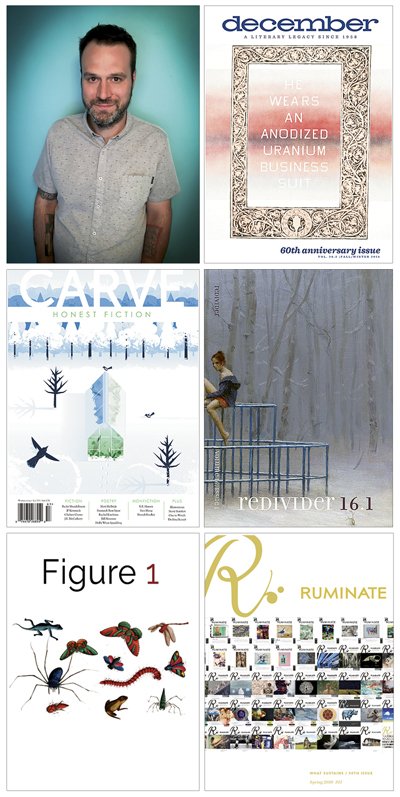
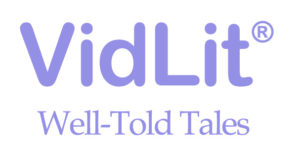
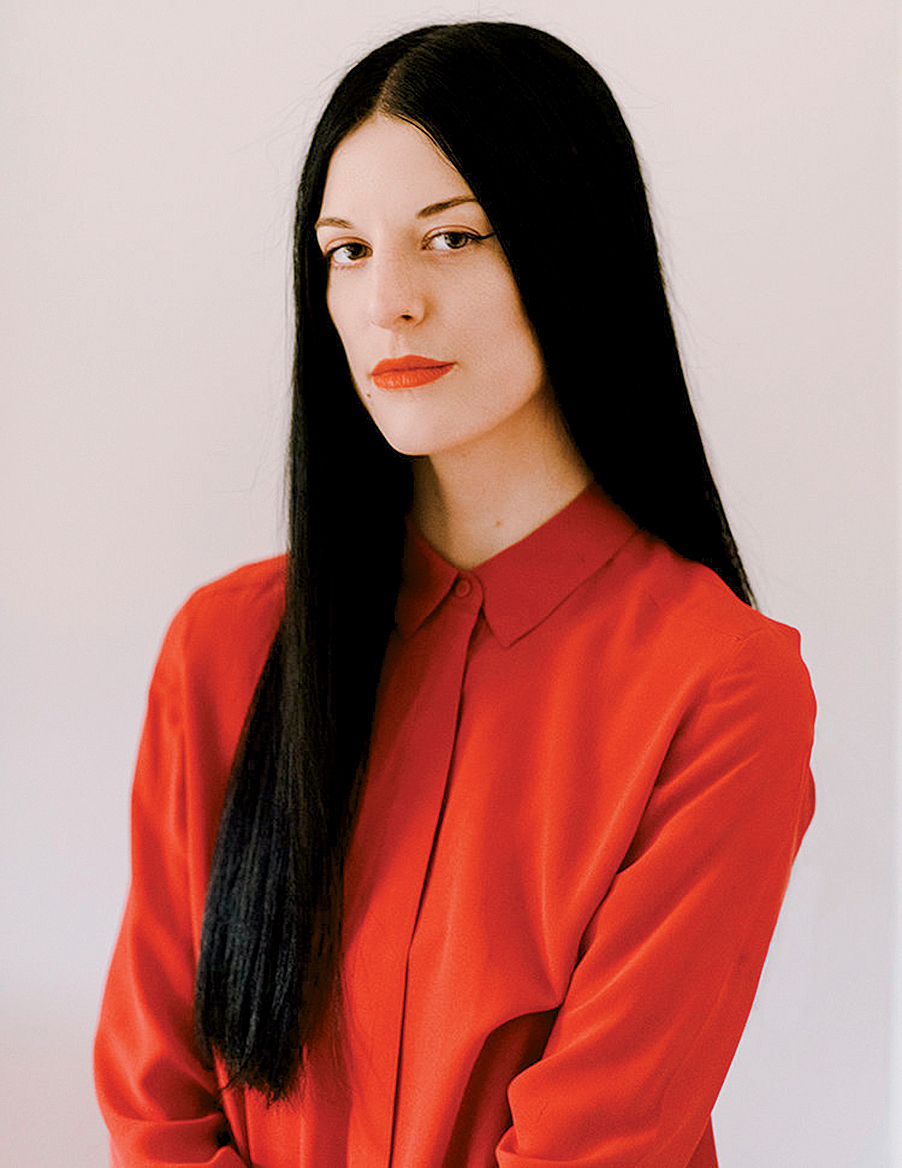
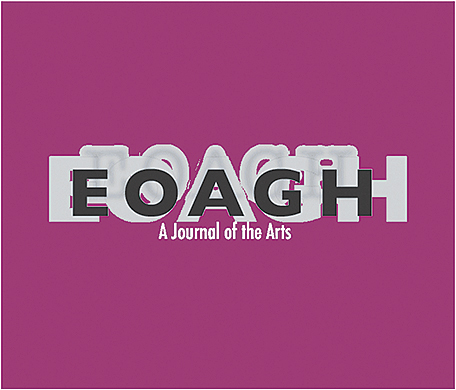
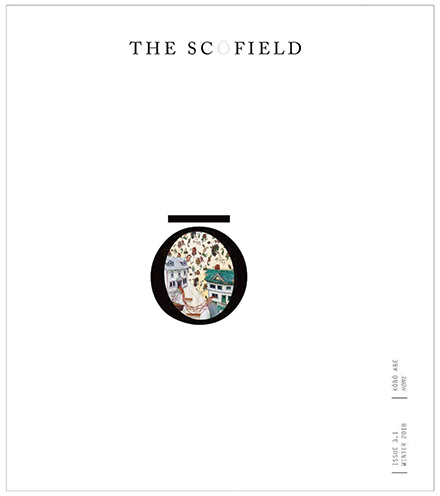
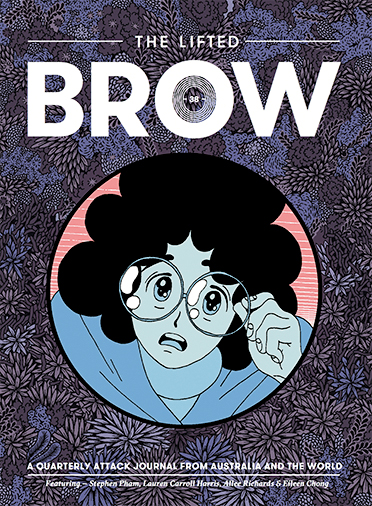
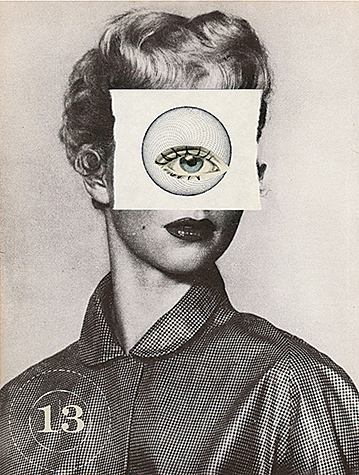

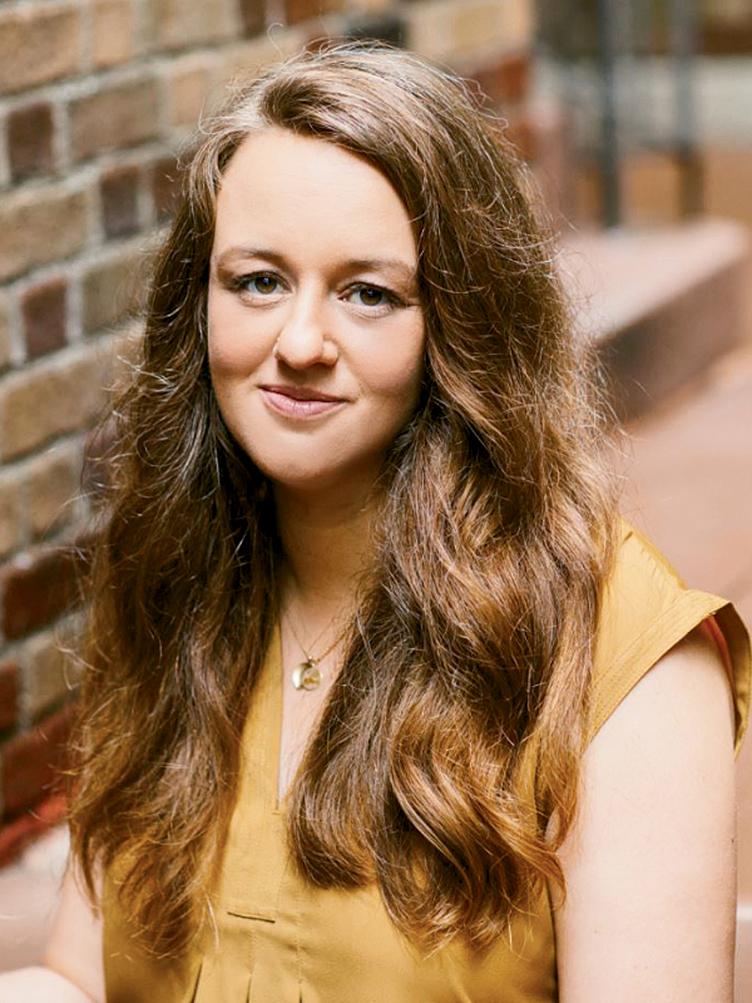
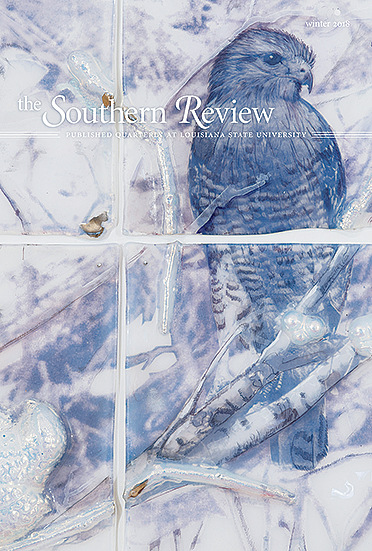
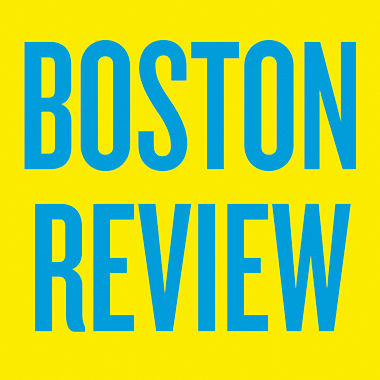
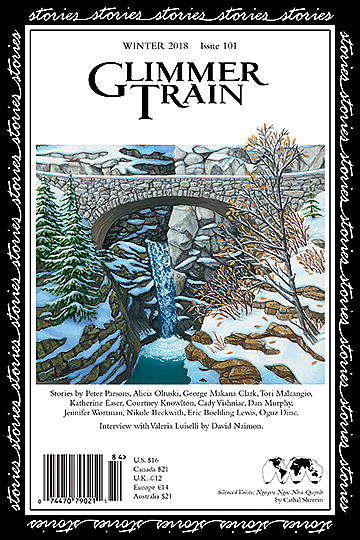
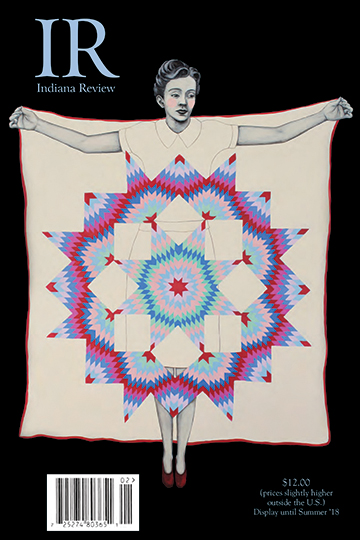
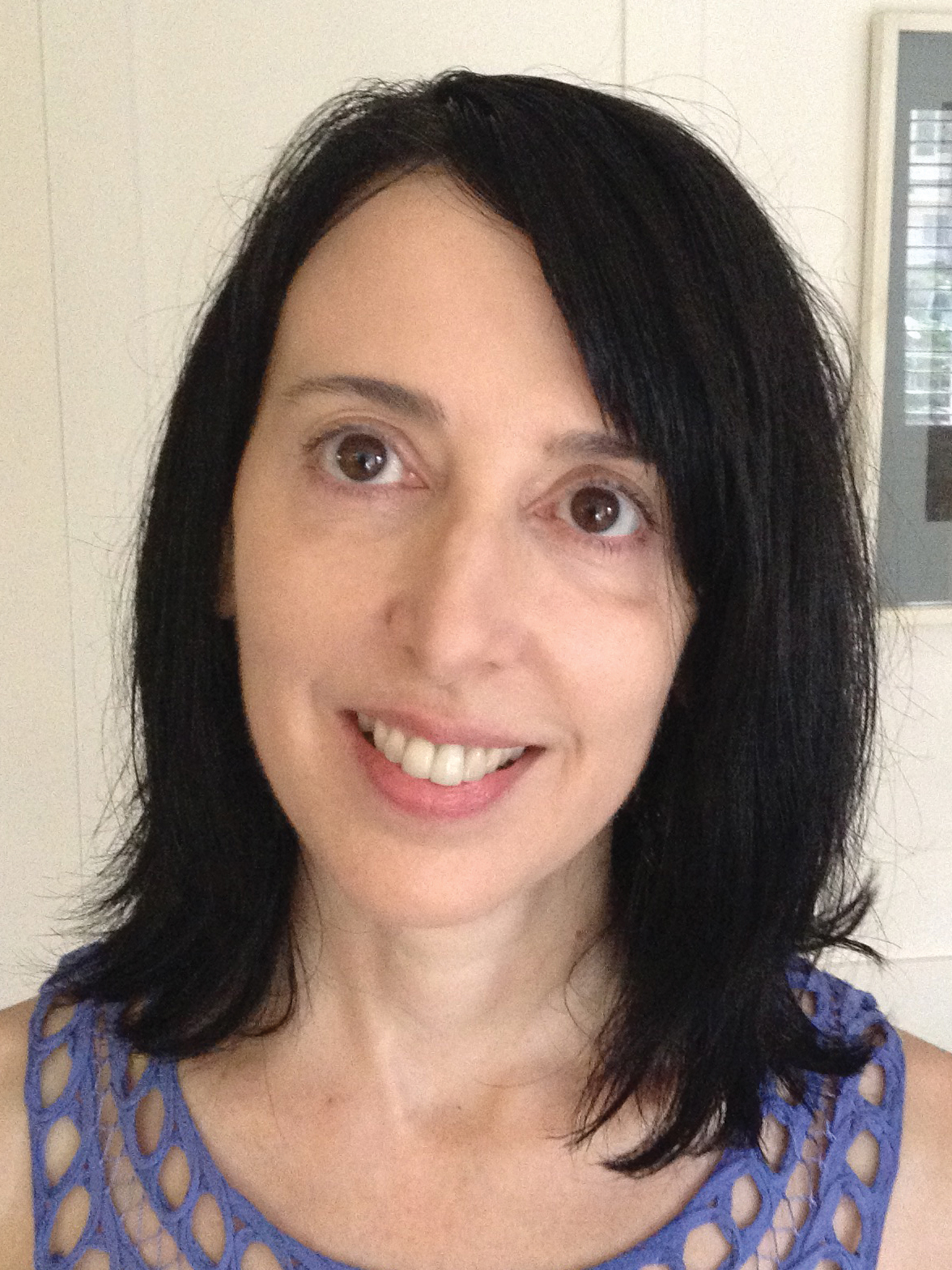
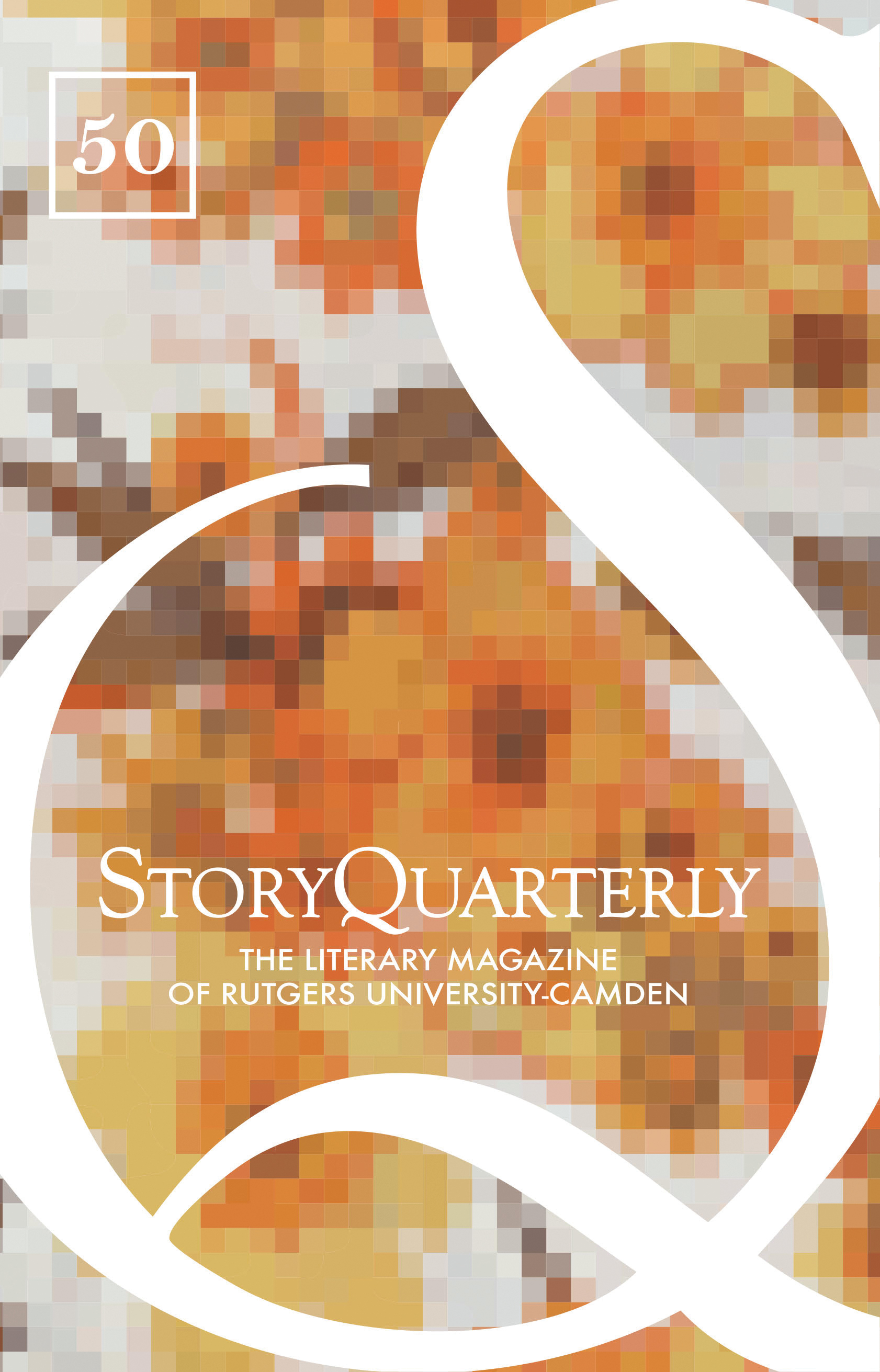

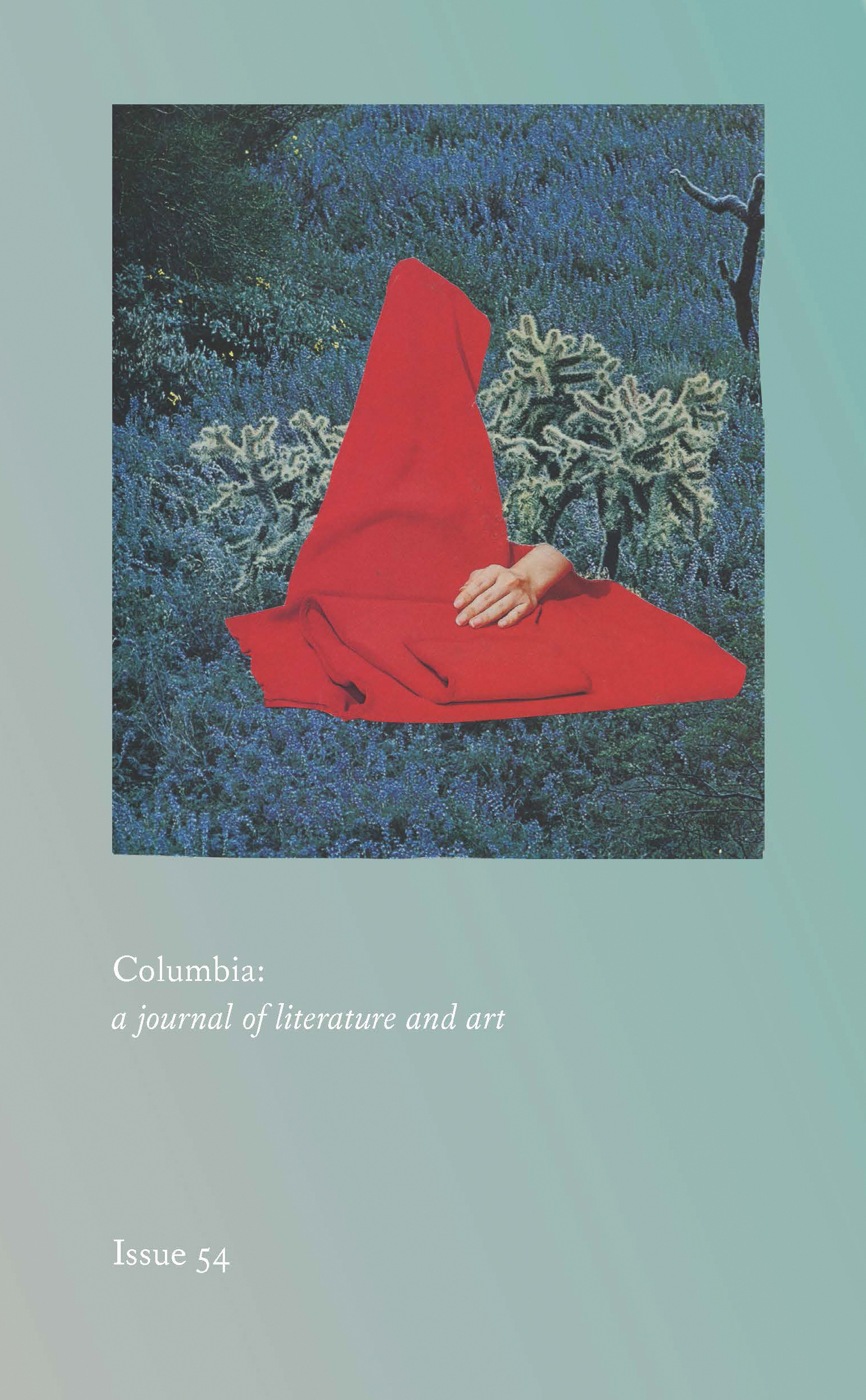
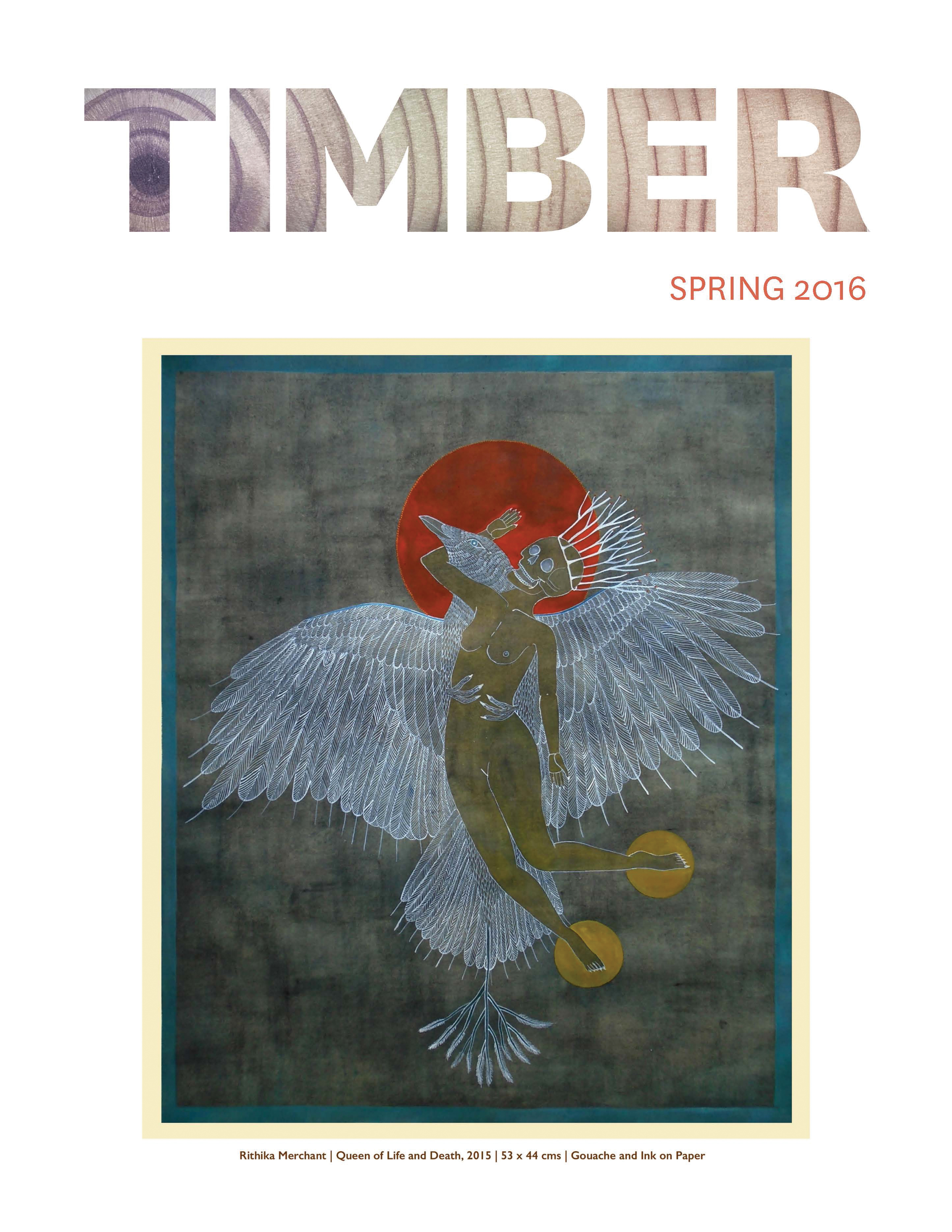
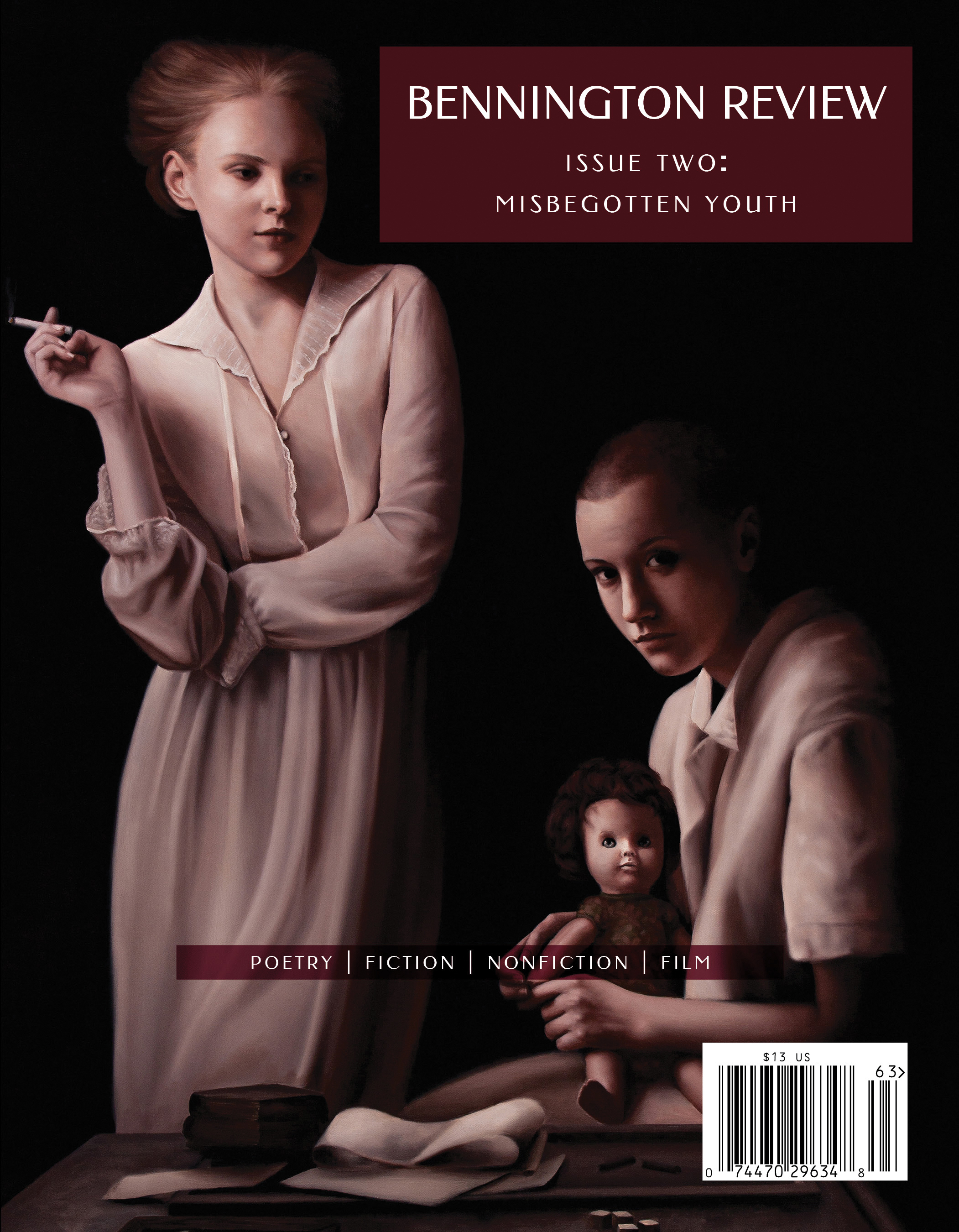
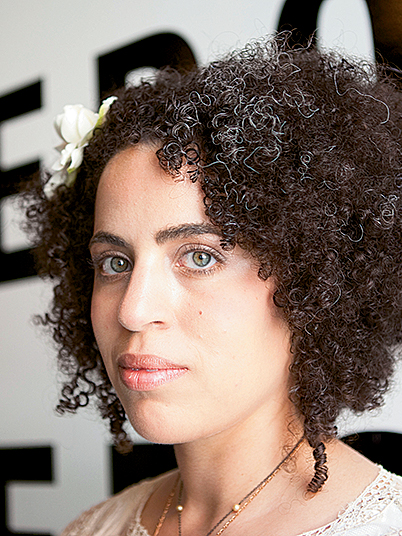
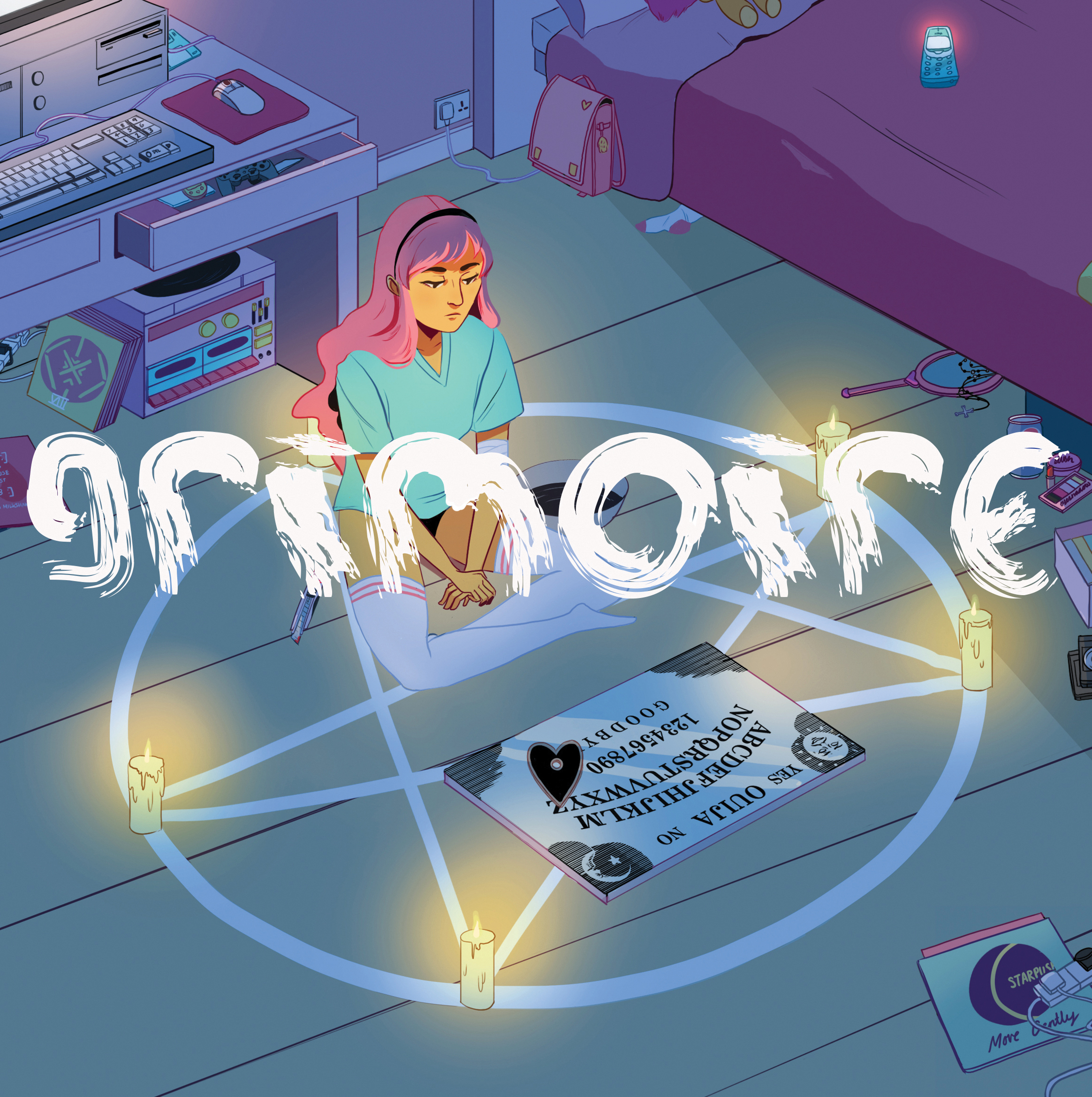

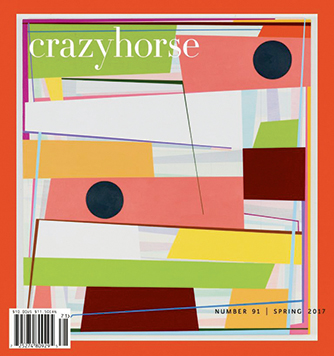
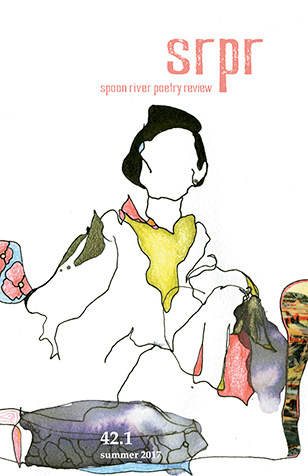
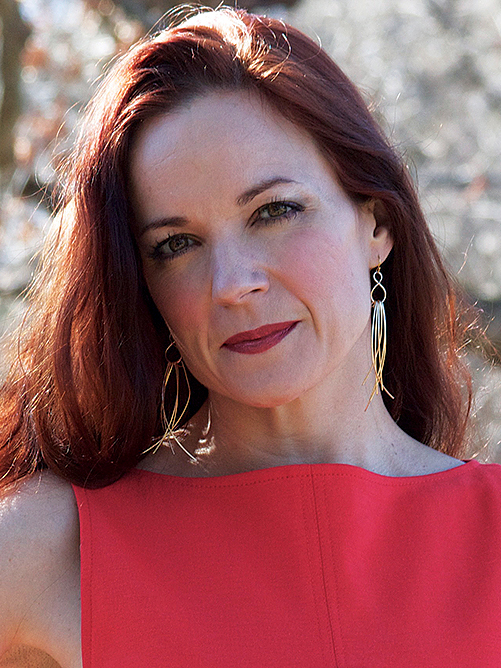
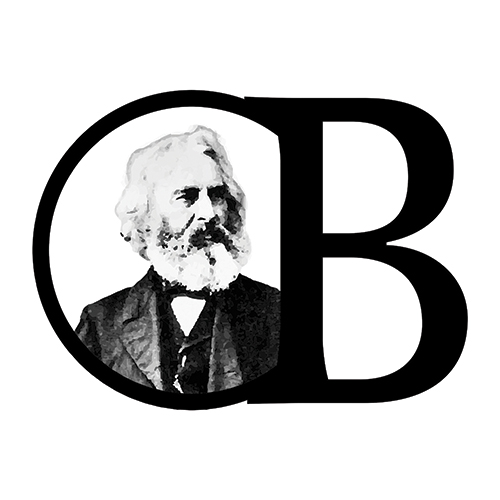
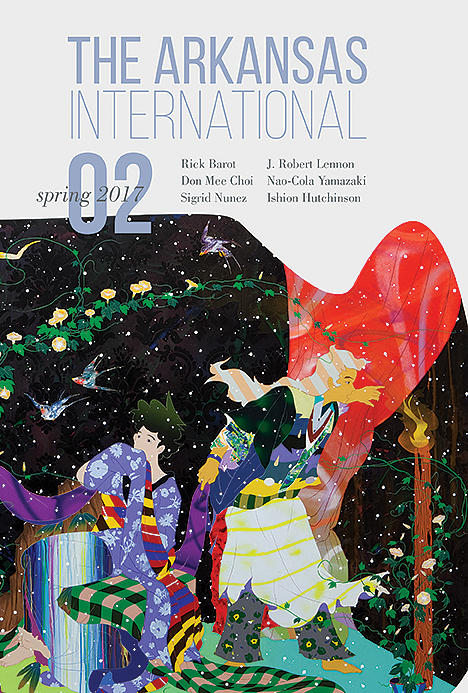
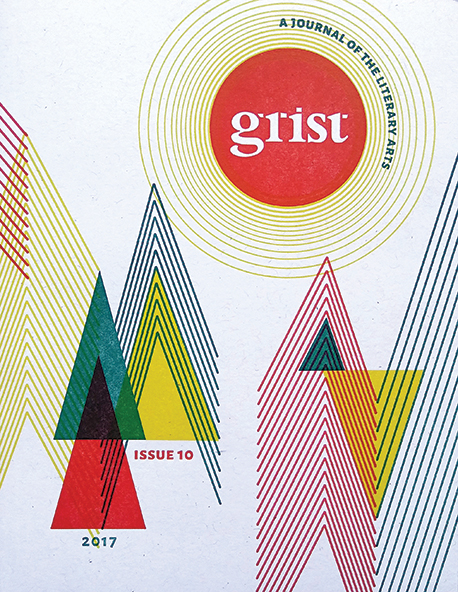
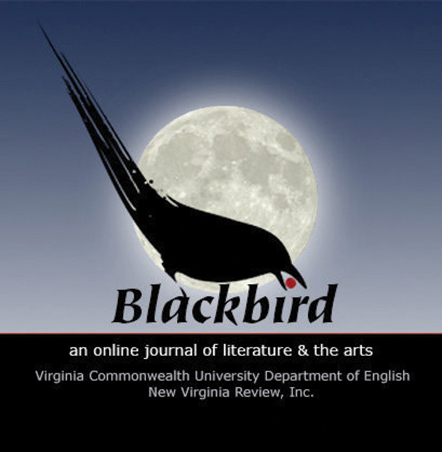
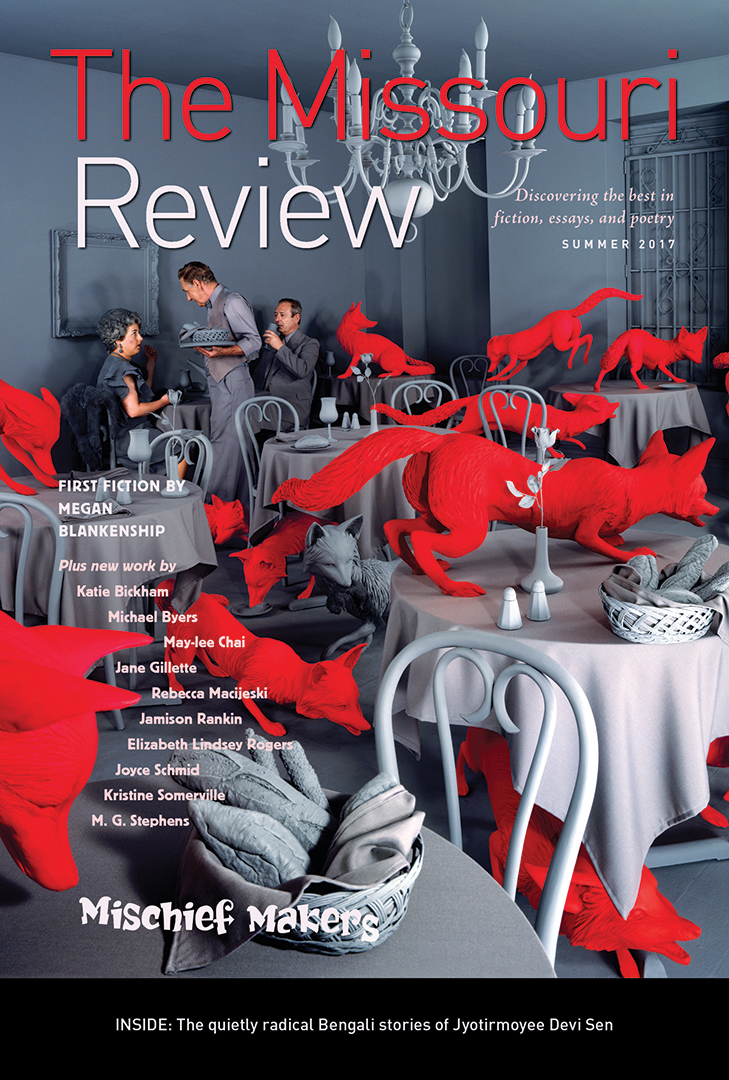
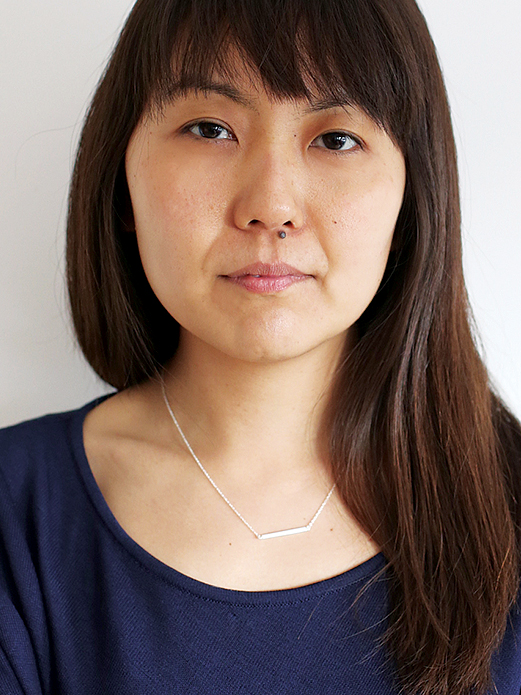
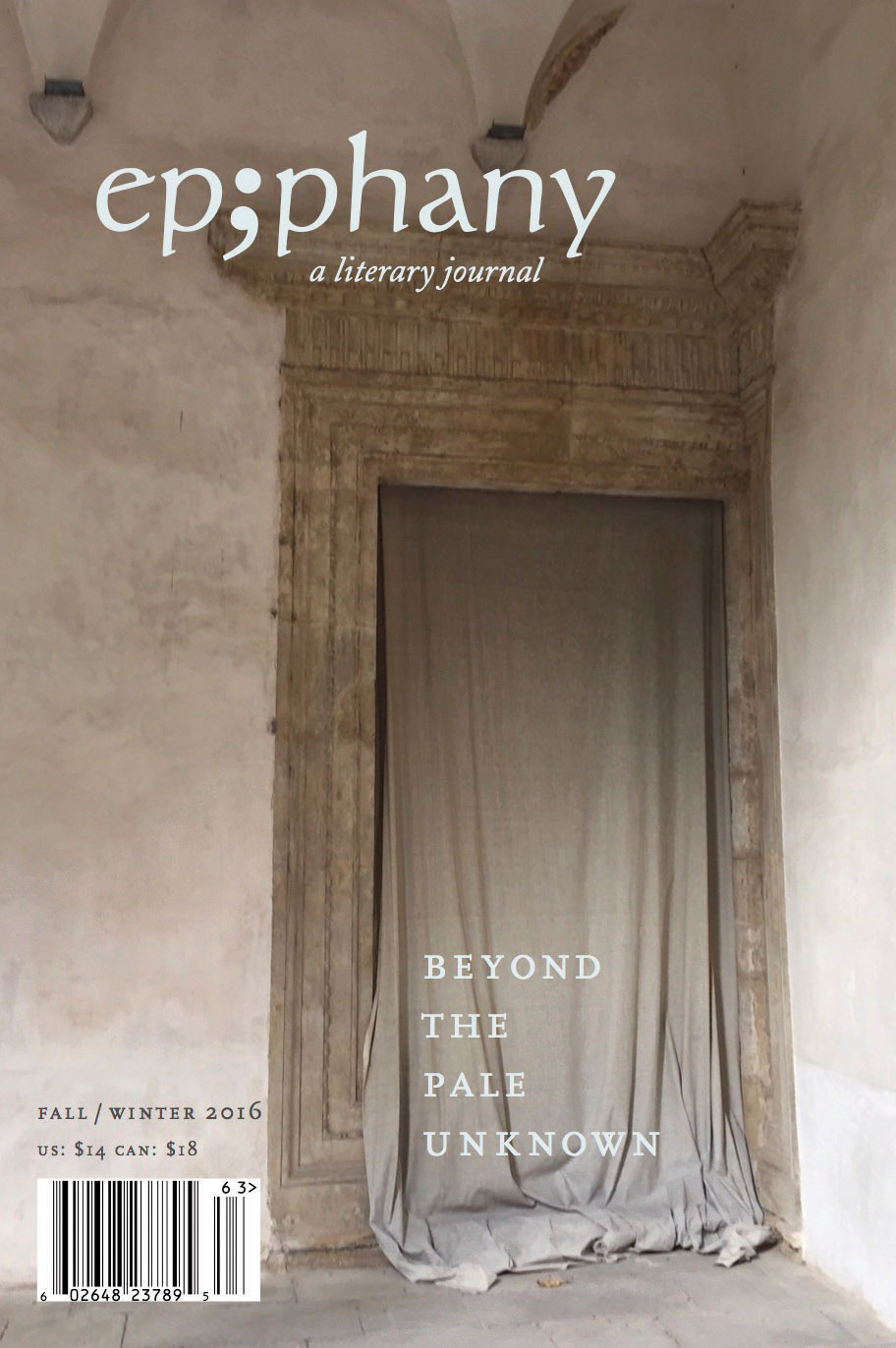
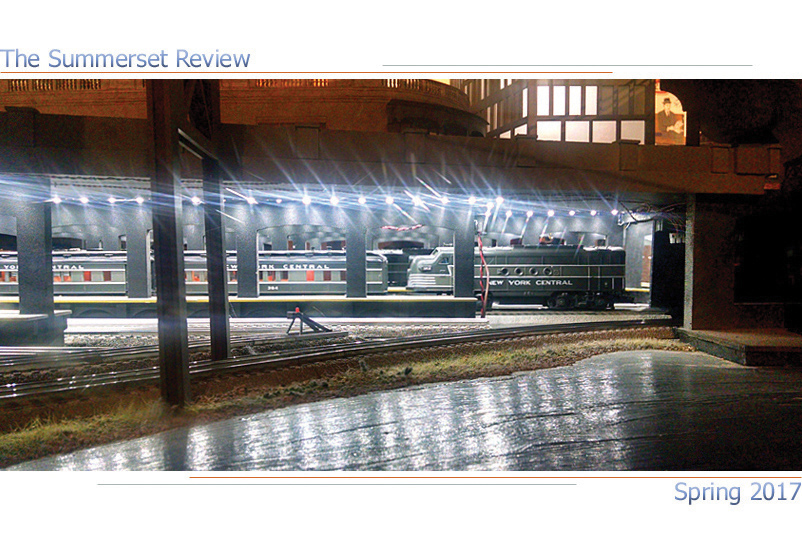
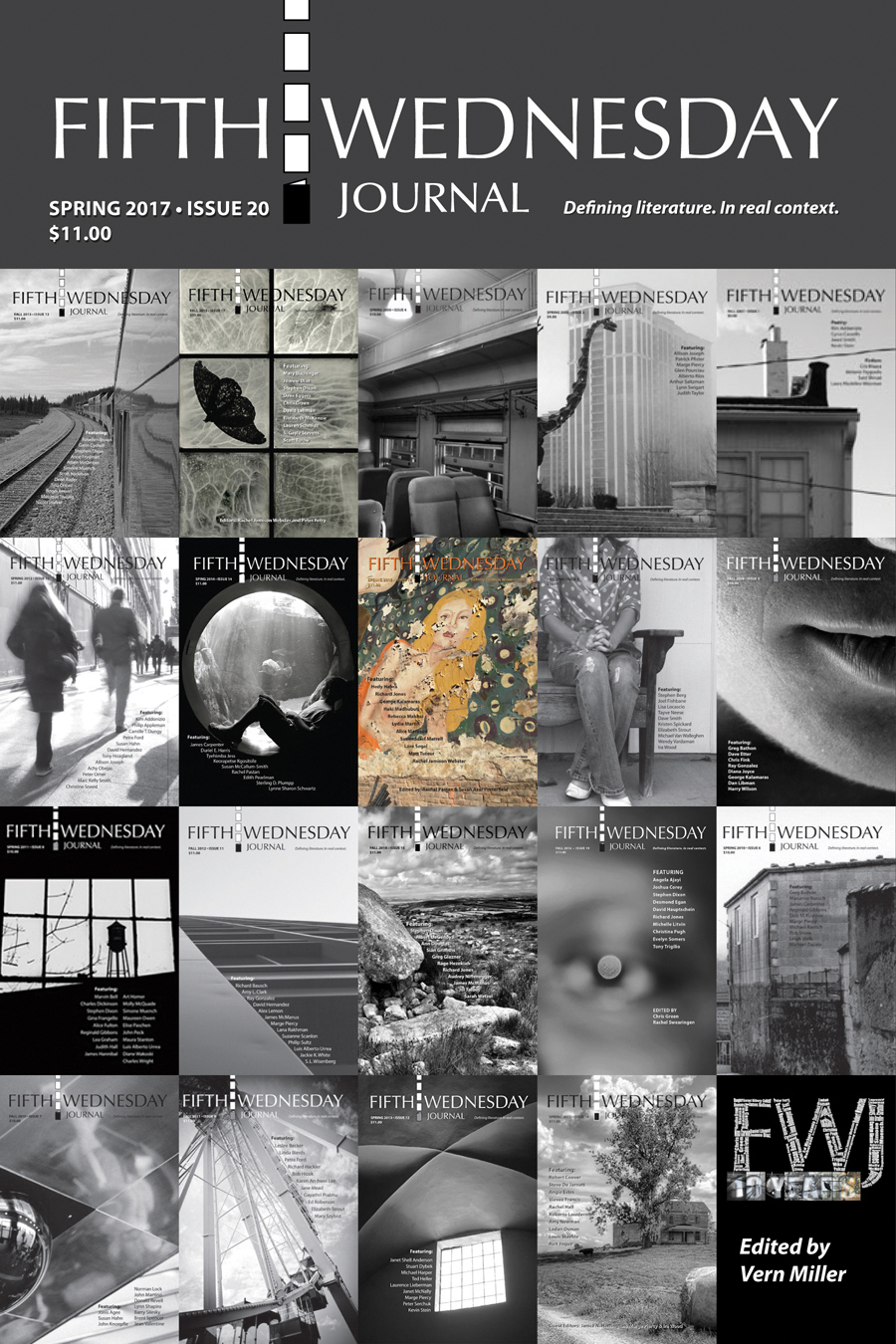

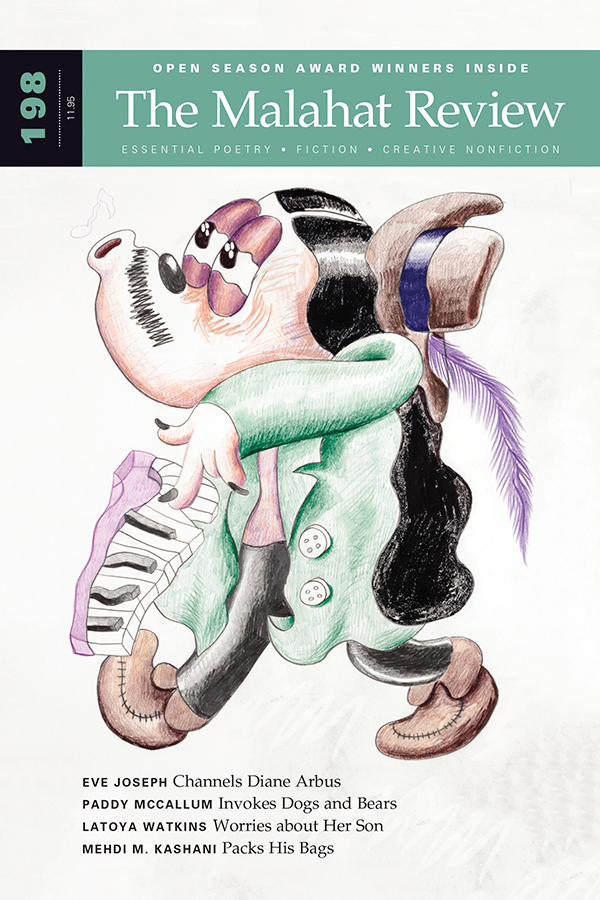
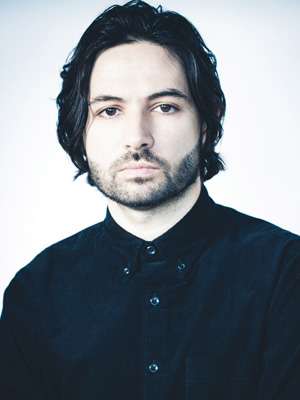

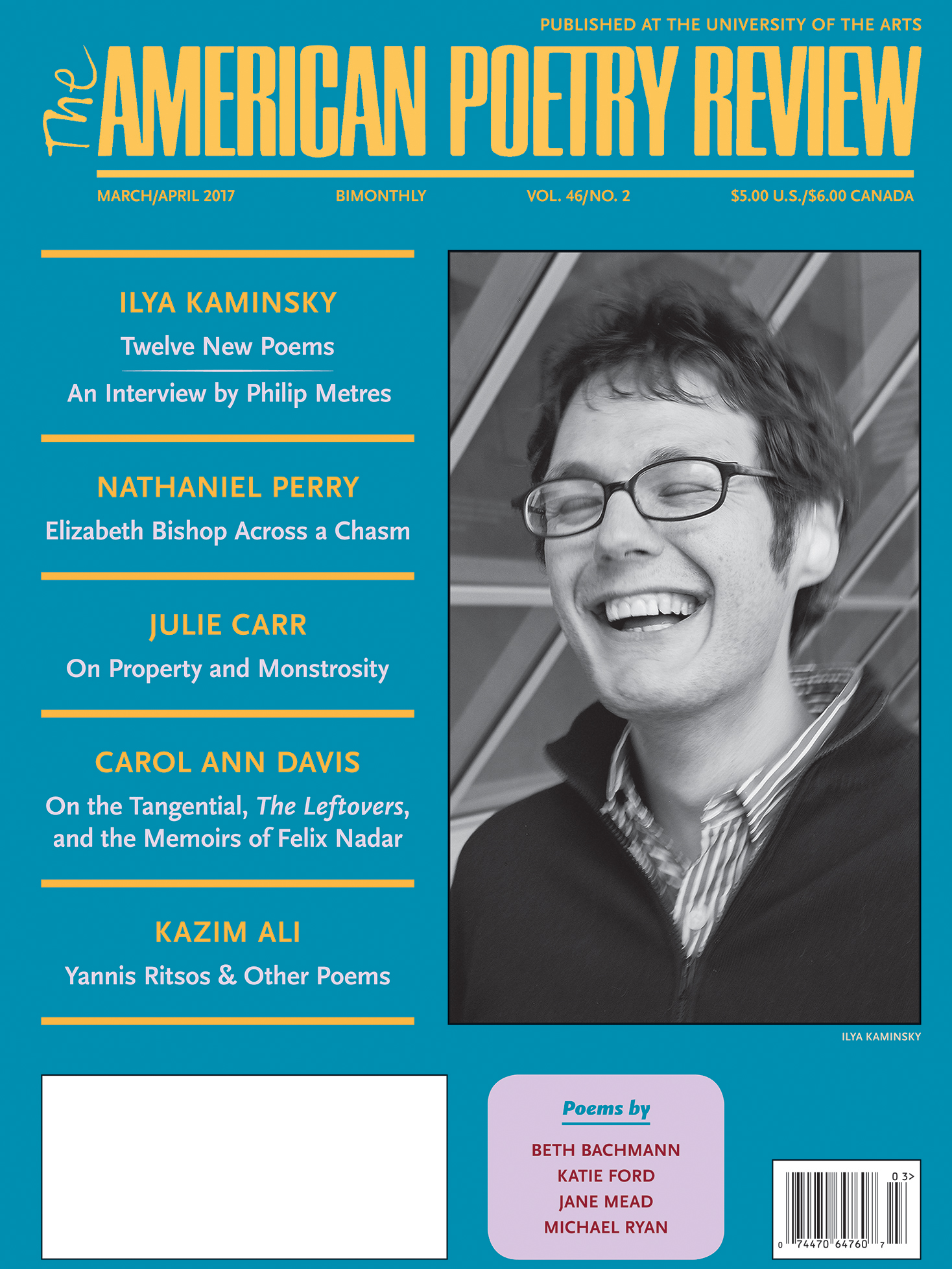
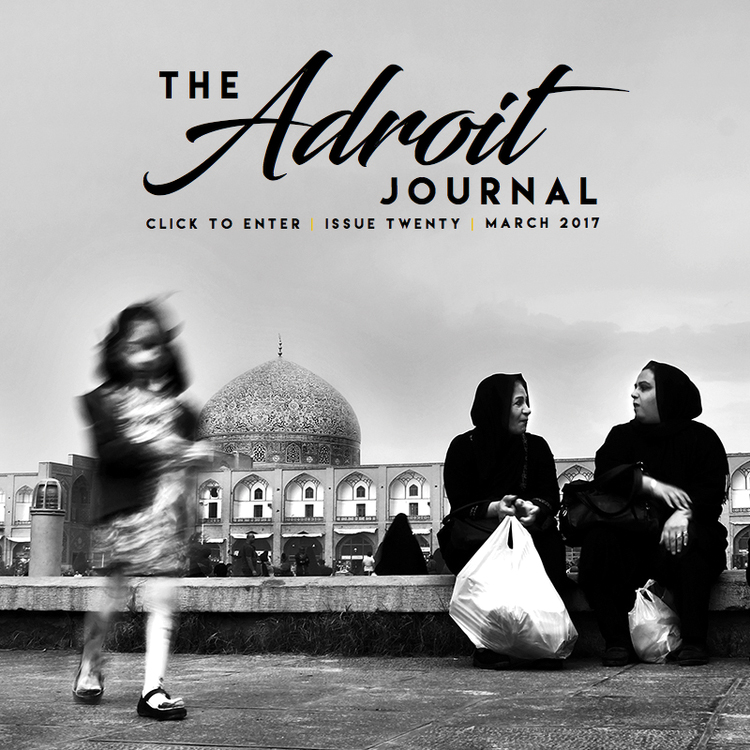
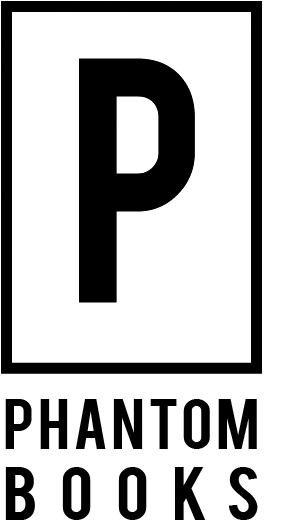
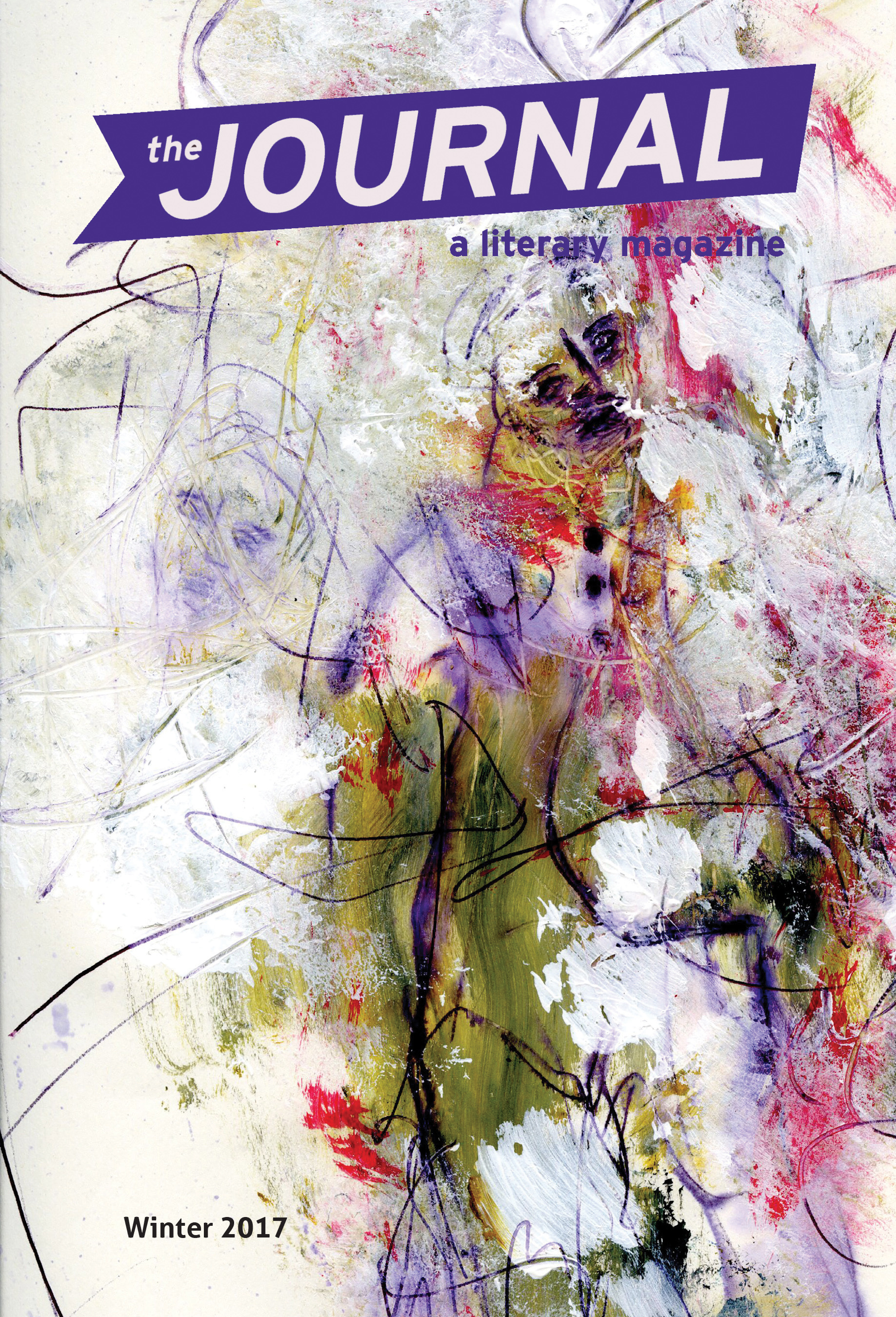
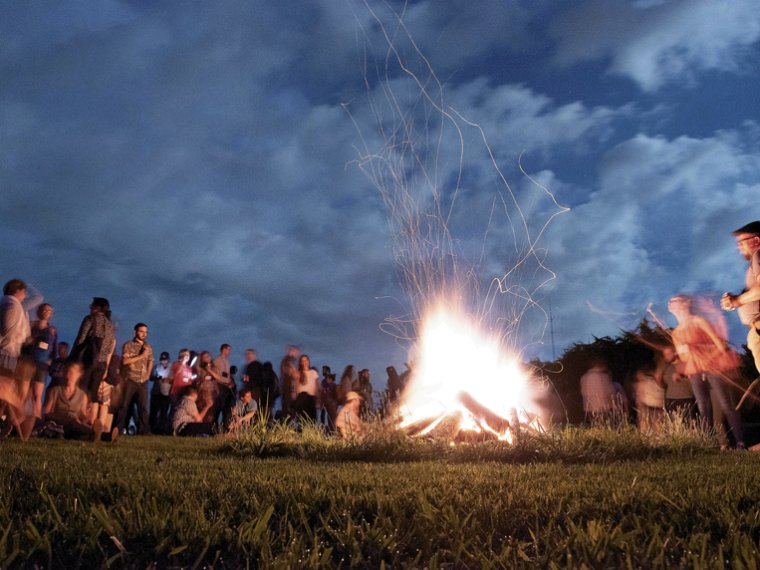
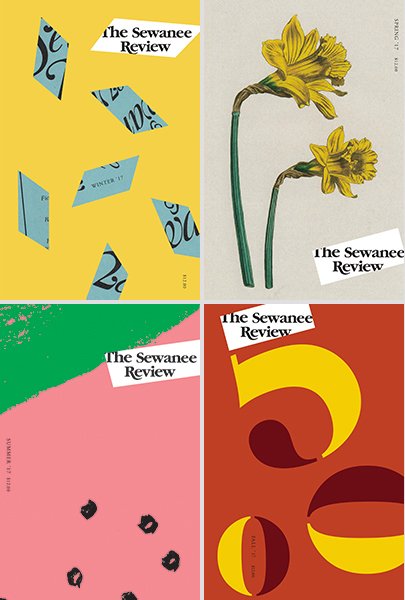

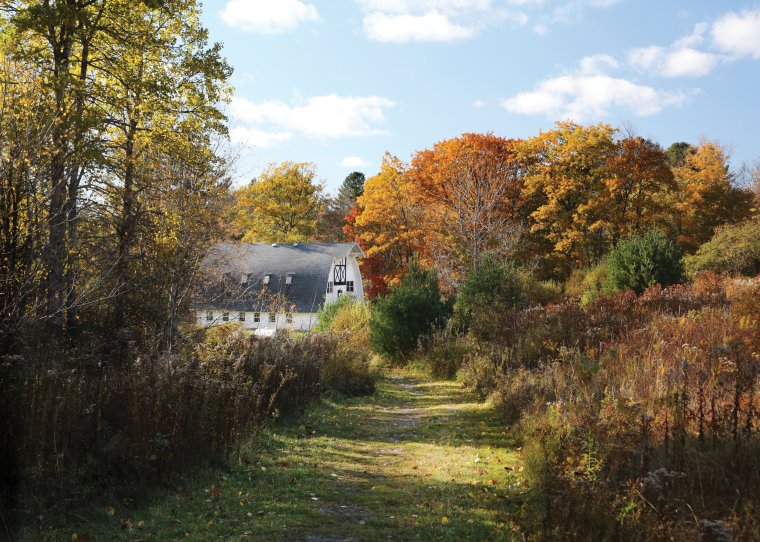
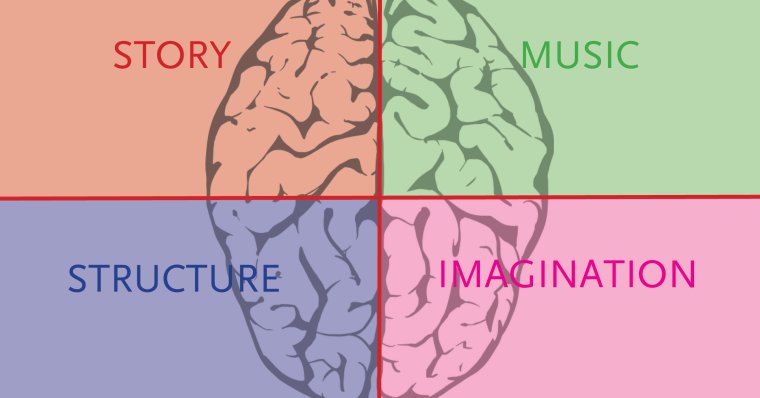
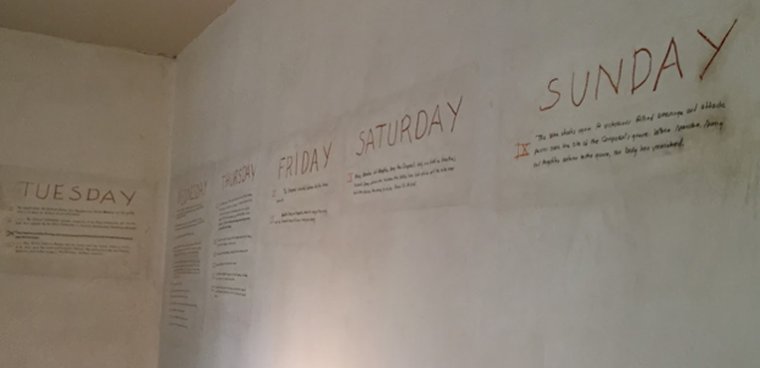

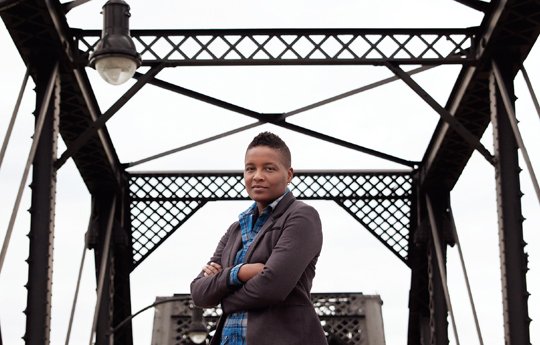
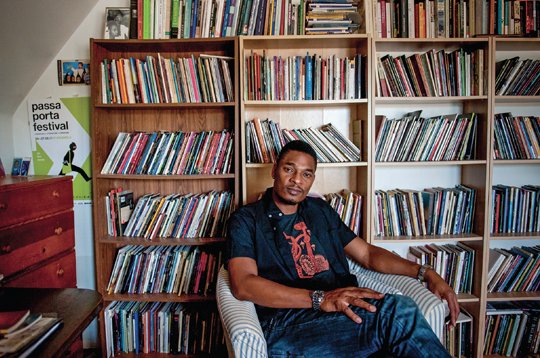
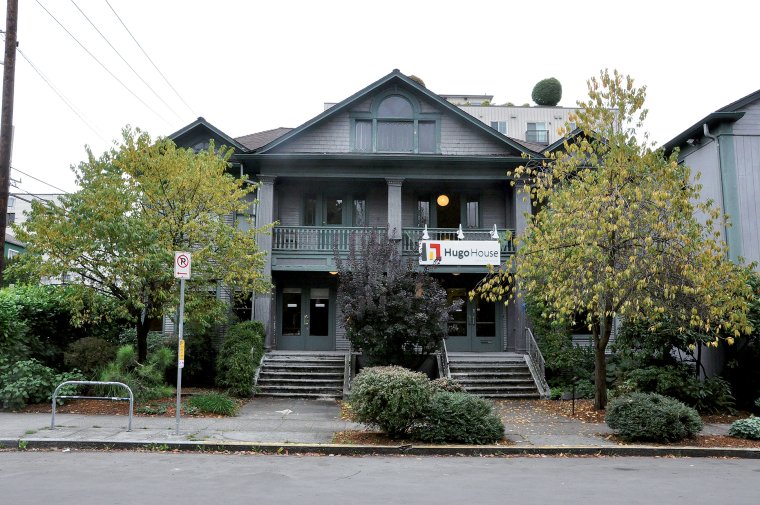
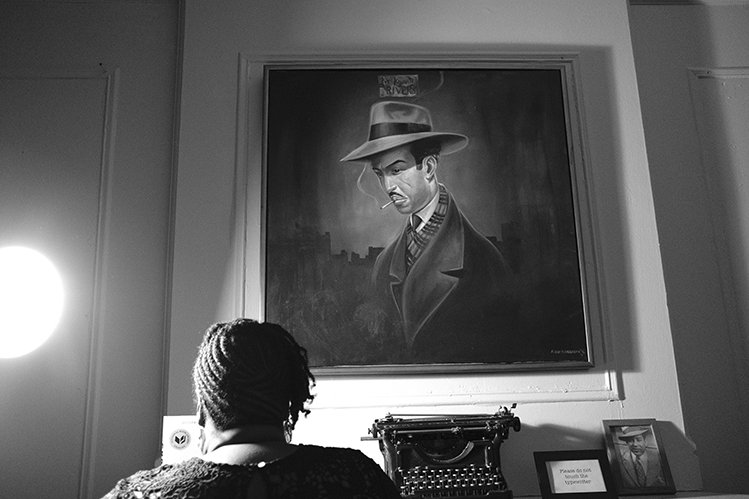
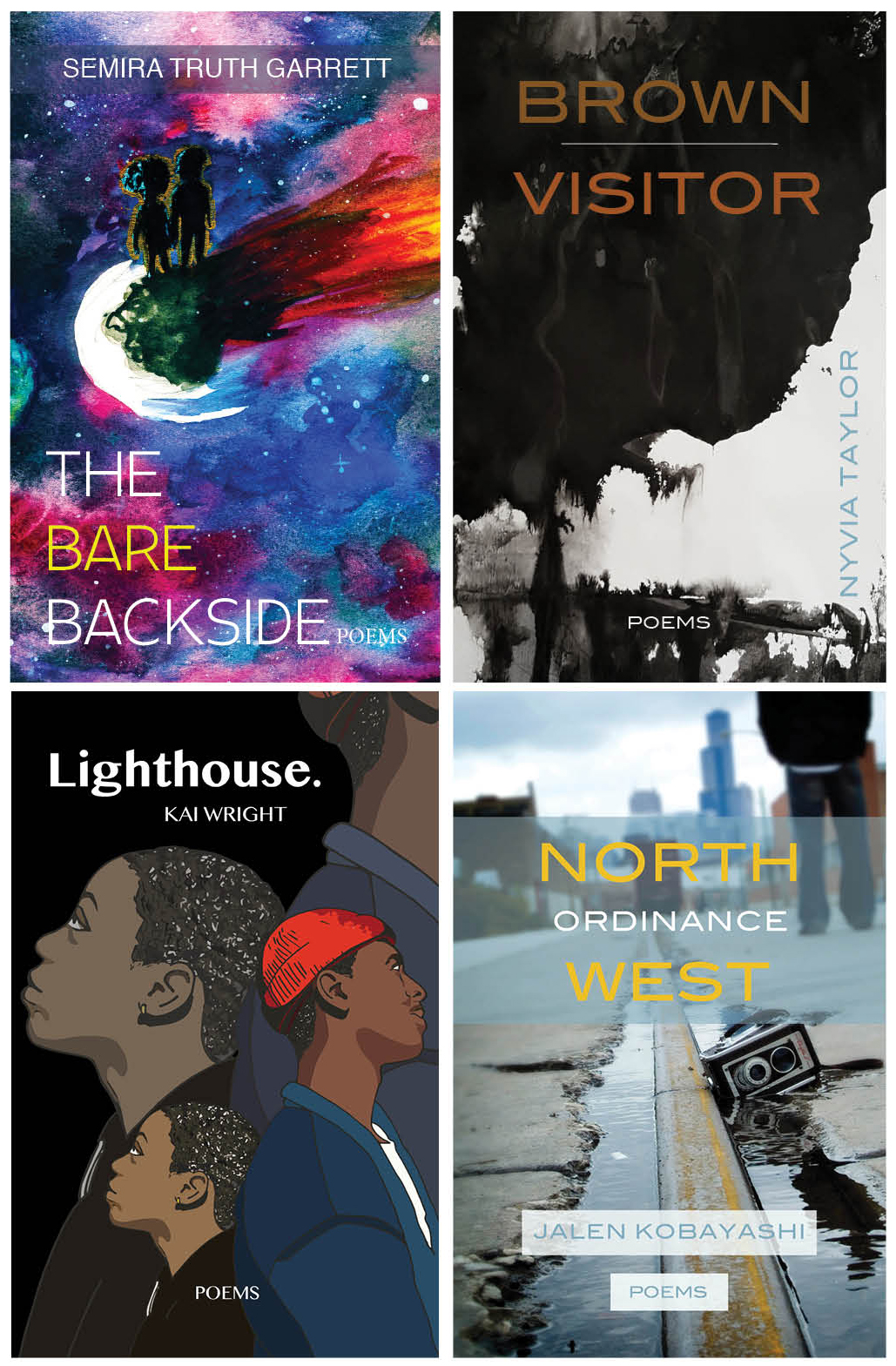
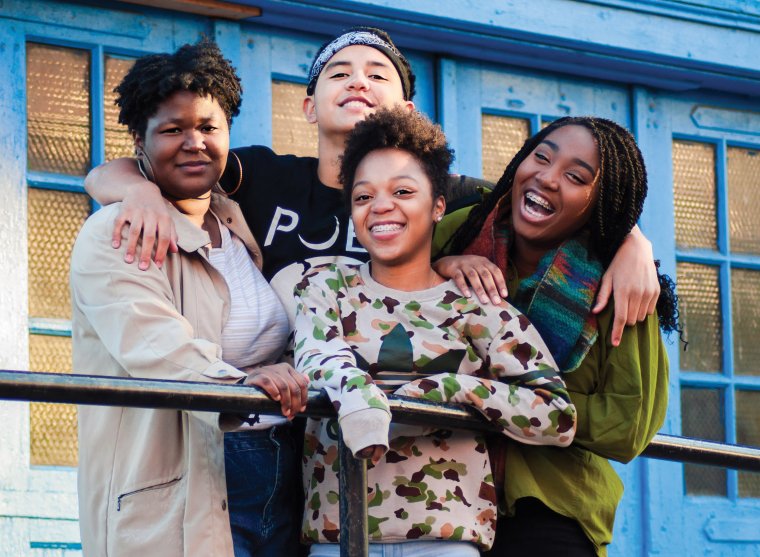
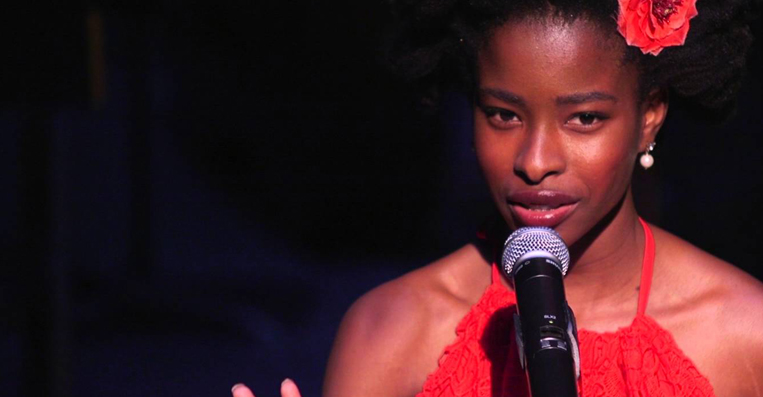



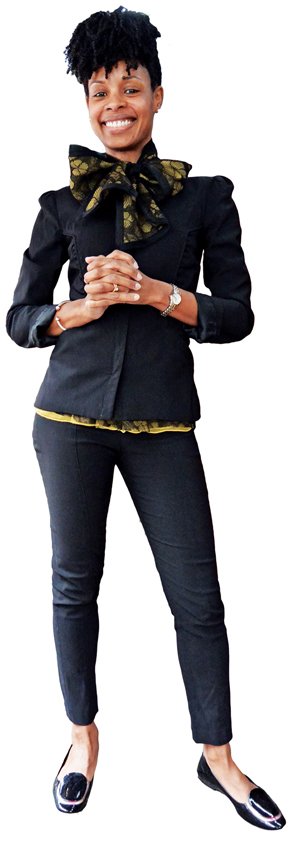
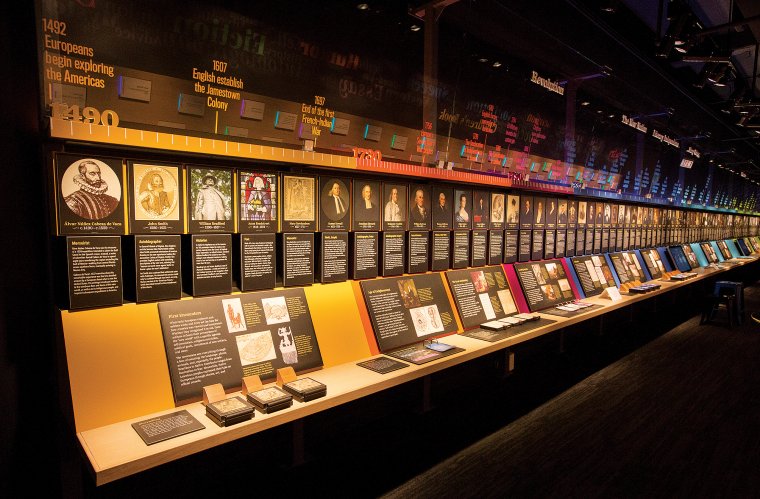
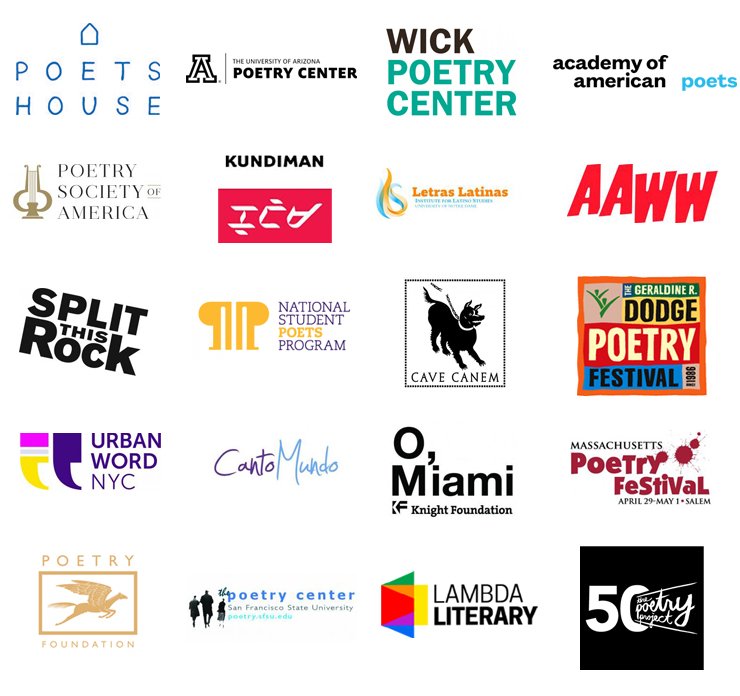


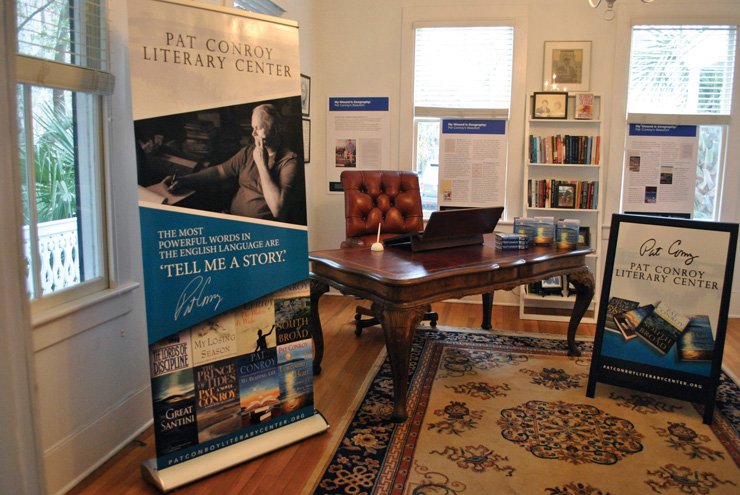
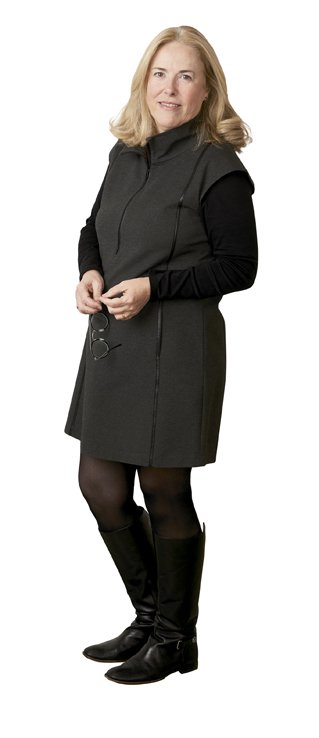
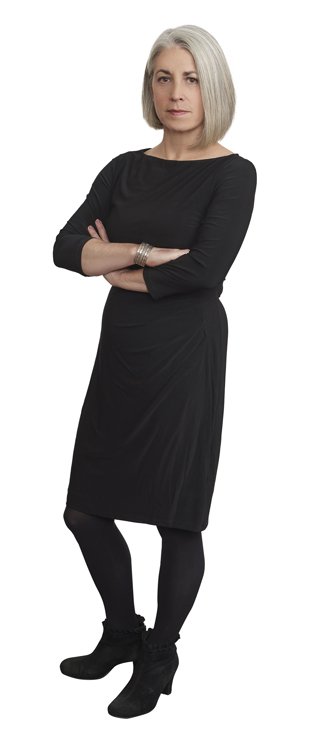
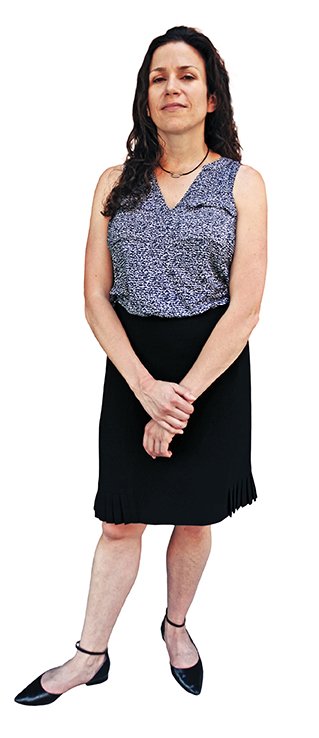
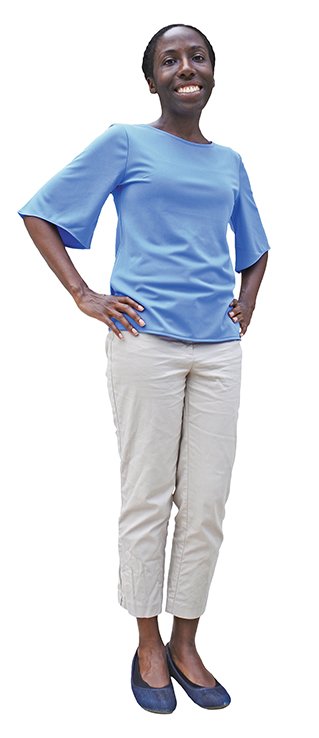
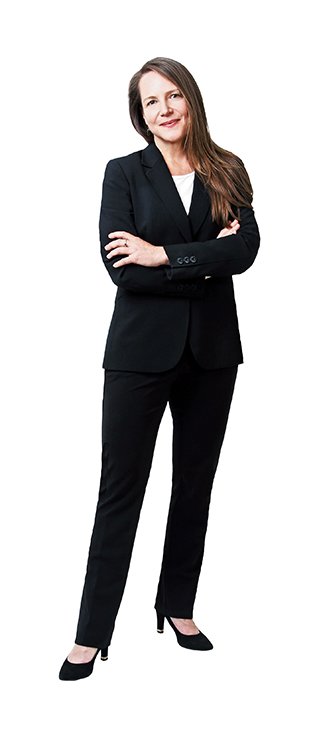
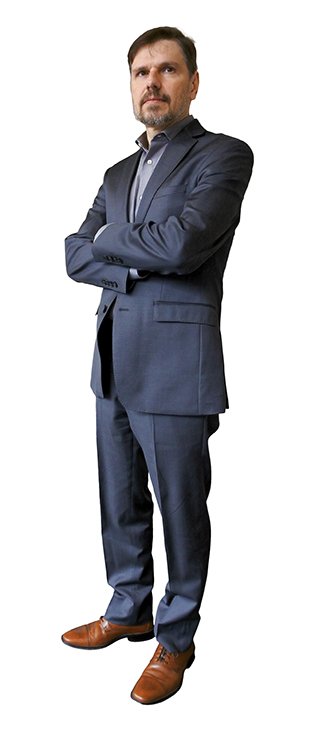
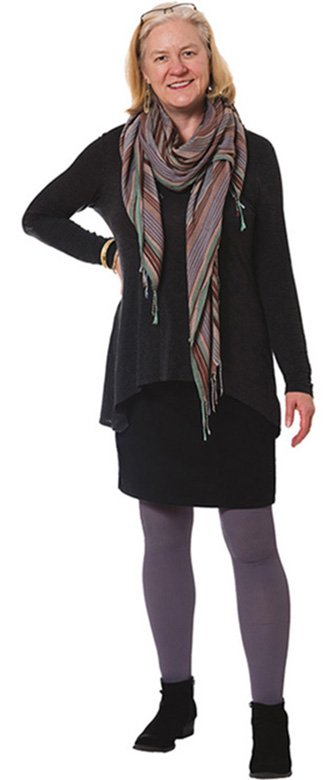
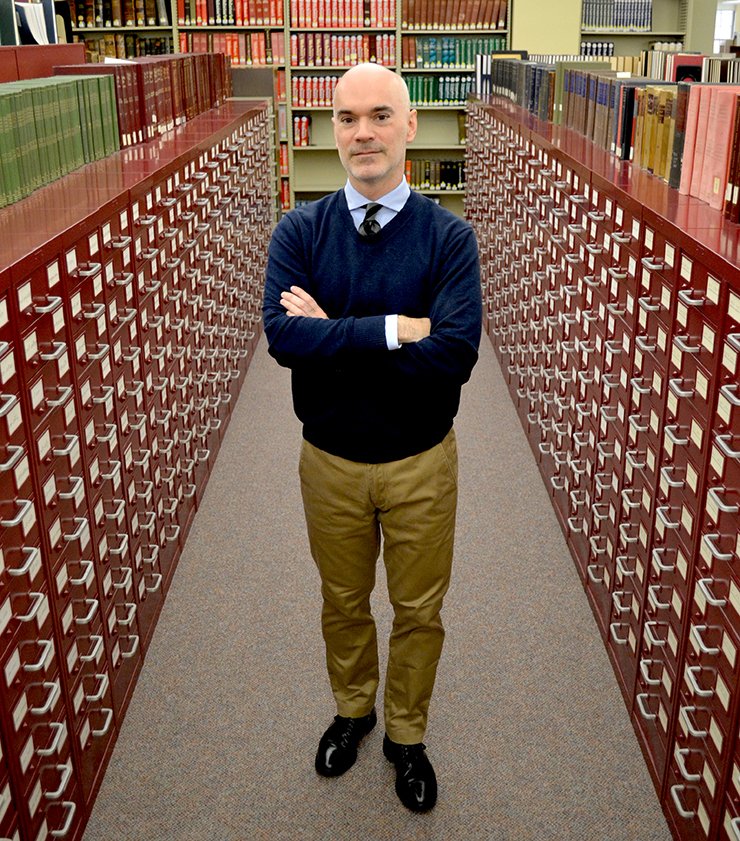

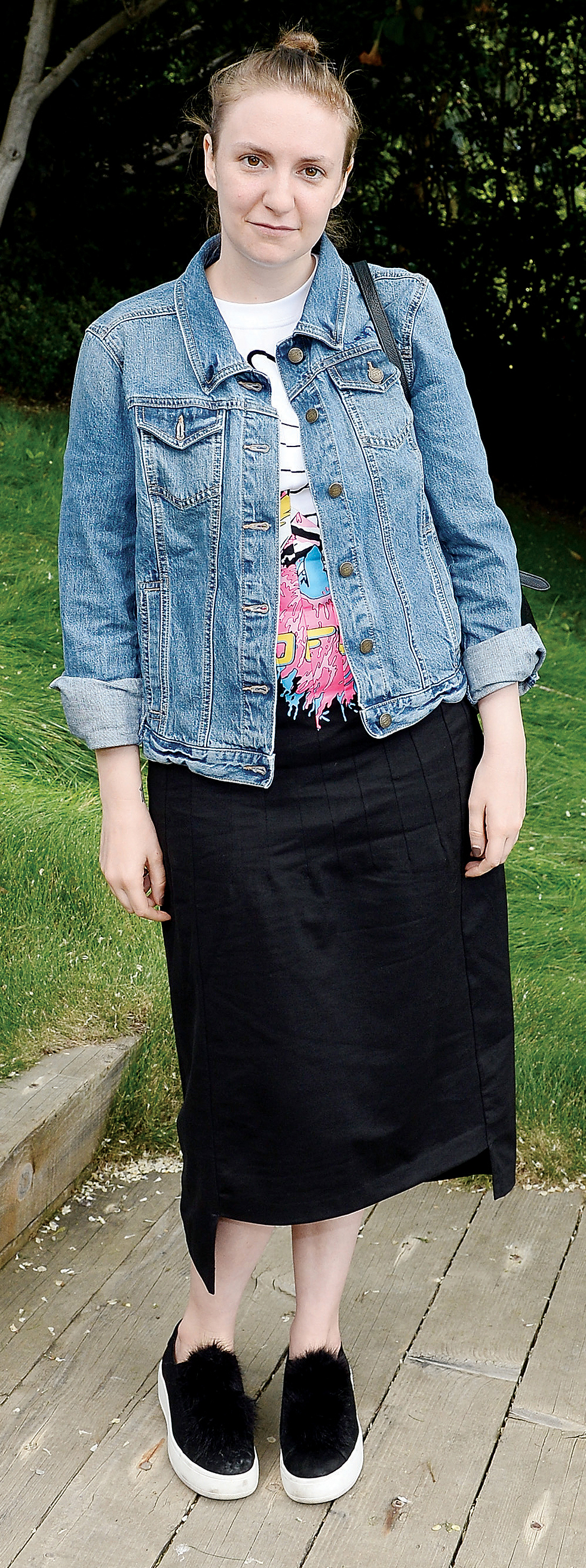
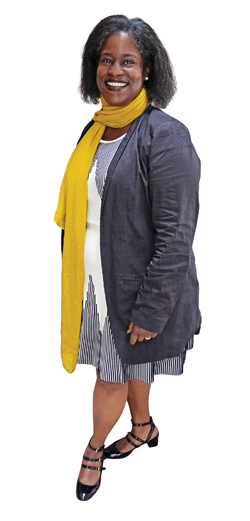 How has Amistad changed or grown in the past thirty years?
How has Amistad changed or grown in the past thirty years?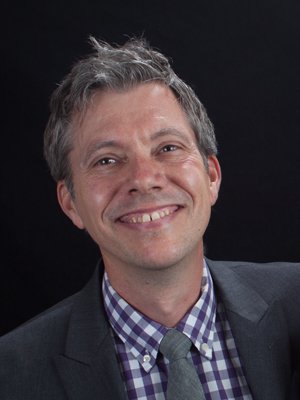
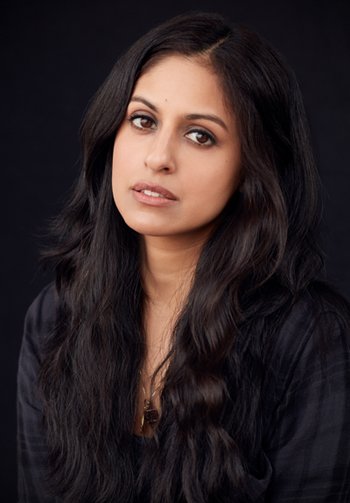
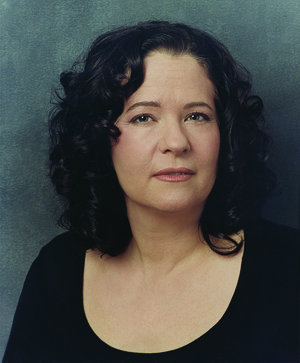
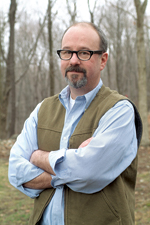 Raised in West Virginia and Naples, Florida, Garner started writing for alternative weeklies such as the Village Voice and the Boston Phoenix after graduating from Middlebury College. In 1995 he became the founding books editor of Salon, where he worked for three years, followed by a decade as senior editor at the New York Times Book Review. He has been a daily book critic for the New York Times since 2008. The author of an art book, Read Me: A Century of Classic American Book Advertisements (Ecco, 2009), he is currently working on a biography of James Agee. You can follow him on Twitter, @DwightGarner.
Raised in West Virginia and Naples, Florida, Garner started writing for alternative weeklies such as the Village Voice and the Boston Phoenix after graduating from Middlebury College. In 1995 he became the founding books editor of Salon, where he worked for three years, followed by a decade as senior editor at the New York Times Book Review. He has been a daily book critic for the New York Times since 2008. The author of an art book, Read Me: A Century of Classic American Book Advertisements (Ecco, 2009), he is currently working on a biography of James Agee. You can follow him on Twitter, @DwightGarner.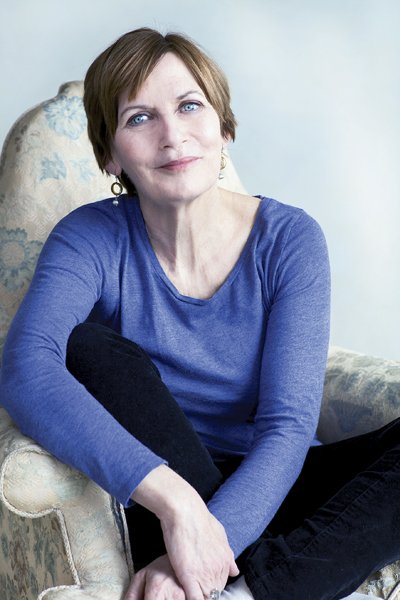
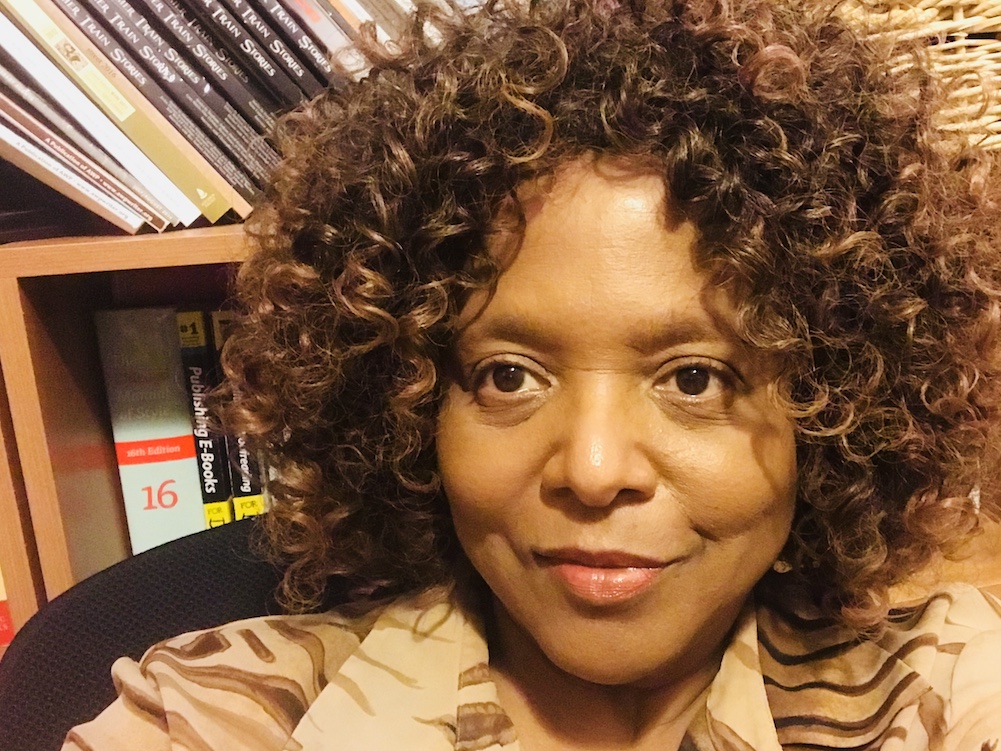 Ms. Lodonia, a white-haired senior citizen, recites from memory a poem written by her mother. Ms. Charlotte comes with verses of a Halloween poem she’s penned and a meditation on her visit to India. Ms. Mary, Mr. Lloyd, and Ms. Quencell listen to lines of a ballad. Their faces brighten as they recall their youth, and Mr. Francis, who is blind, weighs every line, every lyric he hears. When he adeptly analyzes a verse, other workshop members nod in agreement. These were the participants who sat in my Friday workshop series last October and November at the
Ms. Lodonia, a white-haired senior citizen, recites from memory a poem written by her mother. Ms. Charlotte comes with verses of a Halloween poem she’s penned and a meditation on her visit to India. Ms. Mary, Mr. Lloyd, and Ms. Quencell listen to lines of a ballad. Their faces brighten as they recall their youth, and Mr. Francis, who is blind, weighs every line, every lyric he hears. When he adeptly analyzes a verse, other workshop members nod in agreement. These were the participants who sat in my Friday workshop series last October and November at the 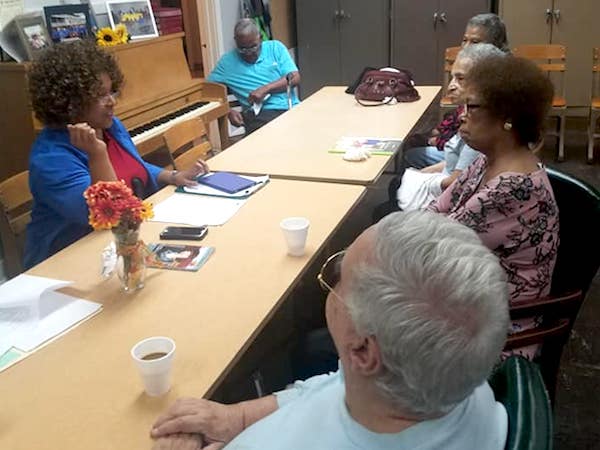 The first week, songs were narratives about fathers, the next week mothers, and by the last week, songs of political protest. Often, after a few bars, one or two seniors would start singing along, sometimes with great gusto which led to laughter and the sharing of life stories. Then I would introduce them to poems with the same themes as the song selections by both well-known and locally-known poets. Participants might observe a poem’s form or lack of form. Did they hear rhyme or feel a rhythm? What was the speaker’s attitude toward the subject, and did the poem move them? Seniors offered profound insight into darker poems as well as witty takes on lighter poems. I asked them to write a few lines of their own on the theme of the day or to try writing something in a similar style, blues for example.
The first week, songs were narratives about fathers, the next week mothers, and by the last week, songs of political protest. Often, after a few bars, one or two seniors would start singing along, sometimes with great gusto which led to laughter and the sharing of life stories. Then I would introduce them to poems with the same themes as the song selections by both well-known and locally-known poets. Participants might observe a poem’s form or lack of form. Did they hear rhyme or feel a rhythm? What was the speaker’s attitude toward the subject, and did the poem move them? Seniors offered profound insight into darker poems as well as witty takes on lighter poems. I asked them to write a few lines of their own on the theme of the day or to try writing something in a similar style, blues for example.